
University partnership pioneers siltation management training
INDUSTRY INSIGHT
Lesego Gaegane, senior project manager, Water Research Commission
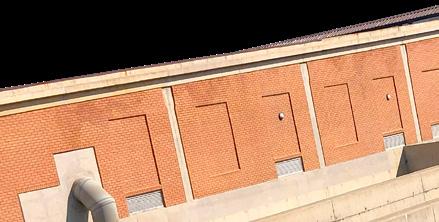

IN THE HOT SEAT
“BluePlanet is introducing oxygen into Hartebeespoort Dam to boost beneficial microbes, outcompete harmful bacteria and speed up bioremediation.”
Rowan McDonald Head of Nanobubble Technology, Blueplanet South Africa
Durban ICC KwaZulu-Natal, South Africa 12-14 June 2024
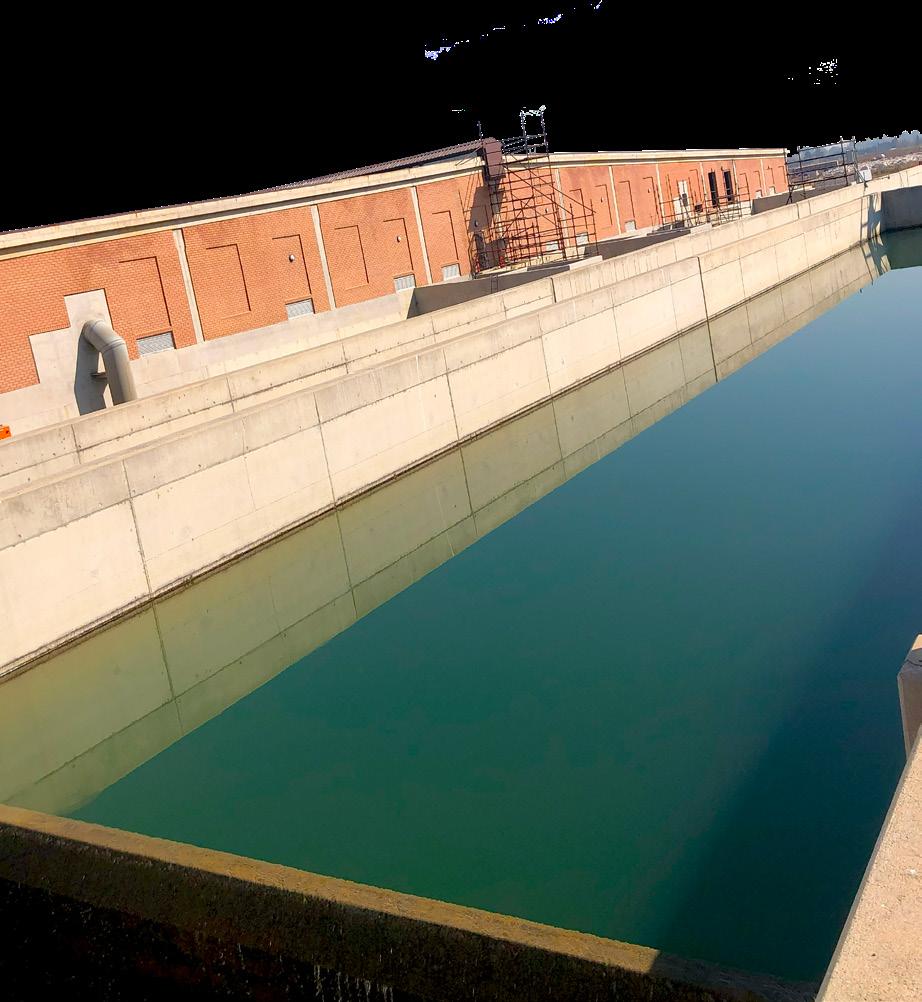
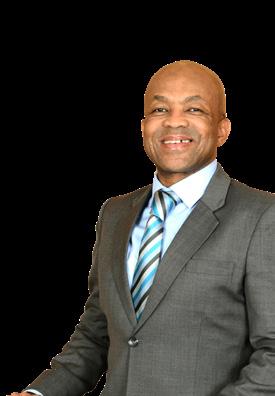

May/June 2024 • ISSN 1990-8857 • R55.00 (incl. VAT) • Vol. 19 No. 03
CONFERENCE PROGRAMME INSIDE
LIQUID GOLD – MORE THAN A CENTURY OF WATER SUPPLY INNOVATION The official magazine of the Water Institute of Southern Africa Inspiring Passion For Water Africa
Sipho Mosai, Group Chief Executive, Rand Water
Manufactures, suppliers & Exporters of :
PVC Pipes & Fittings
HDPE Pipes & Fittings
Steel Pipe & Fittings
Valves, Water Meters, & all related products

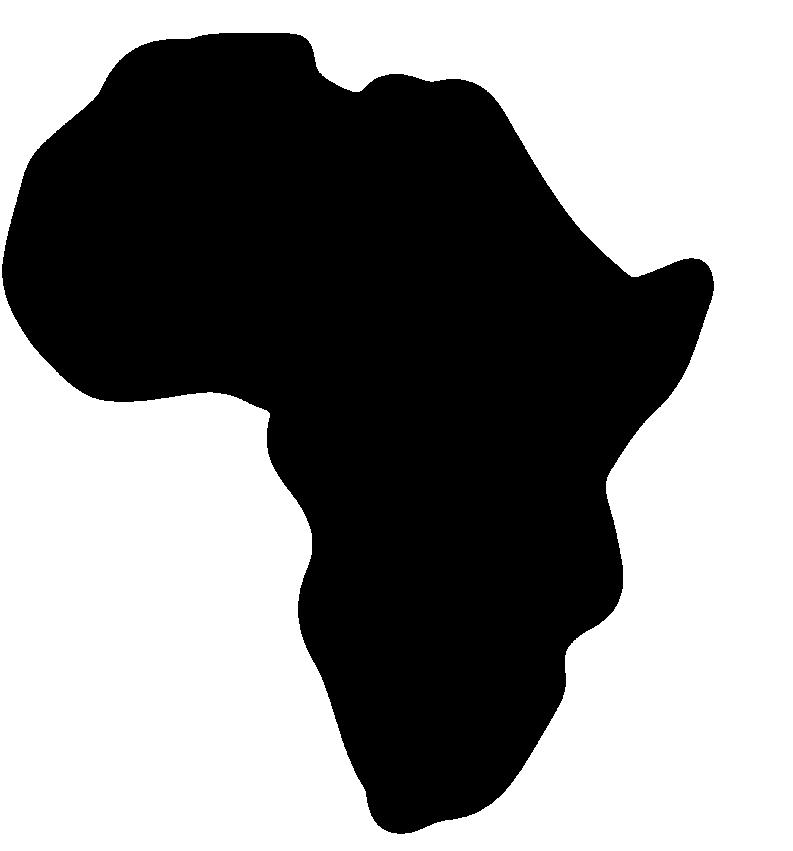






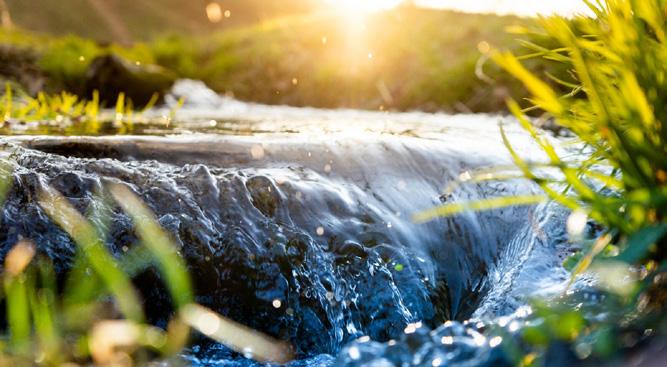
Founded in 1886, Johannesburg began as a mining shanty town. An increasing concern over water followed the euphoria from the discovery of gold. In 1903, Rand Water was formed by individuals and institutions who instead of pursing riches, prioritised the life-giving resource of water. P4
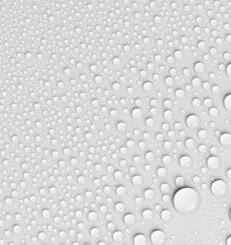
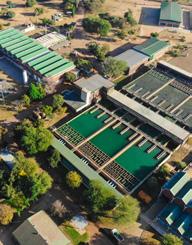
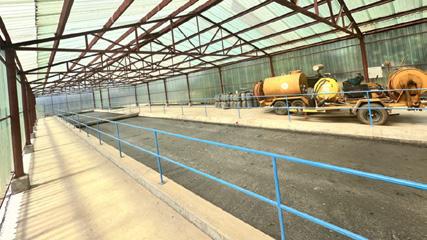

BluePlanet has been appointed by Magalies Water to assist in the remediation efforts of Hartbeespoort Dam. Armed with Nanobubble technology and a restorative plan, BluePlanet is addressing root causes rather than treating symptoms. WASA speaks to Rowan McDonald, Head of Nanobubble Technology at BluePlanet South Africa. P12

18 CONTENTS ON
COVER
THE
MAY/JUNE 2024 IN THE HOT SEAT Hartebeespoort Dam to boost beneficial microbes, outcompete harmful bacteria Blueplanet South Africa Inspiring Passion For Water Durban ICC KwaZulu-Natal, South Africa 12-14 June 2024 CONFERENCE PROGRAMME INSIDE INDUSTRY INSIGHT University partnership pioneers siltation management training LIQUID GOLD – MORE THAN A CENTURY OF WATER SUPPLY INNOVATION Africa VOL. 19 NO. 03 SAFEGUARDING DRINKING WATER WISA BIENNIAL CONFERENCE & EXHIBITION 90 ALTERNATIVE SANITATION SOLUTIONS: WHERE ARE WE? 98 95 DEAL WITH WATER DIFFERENTLY www.infrastructurenews.co.za infrastructure news
IN THE HOT SEAT infrastructure4 Siltation reduces dam storage – vital for water supply and the economy. Managing this is crucial. The Department of Water and Sanitation (DWS) assigned the Water Research Commission (WRC) to develop a National Siltation Management Strategy (NatSilt). One of the key deliverables is capacity building. P14
INSIGHT Cover Story Liquid gold – more than a century of water supply innovation 4 Comments CEO’s Comment 6 Editor’s Comment 6 OC’s Comment 7 Chairrman’s Comment 7 WISA Inspiring passion for water 8 Hot seat Tiny bubbles, big impact 12 I ndustry Insight University partnership pioneers siltation management training 14 Conference Programme 18 Housekeeping 28 Conference App 31 Keynote Speakers 32 Workshops 35 Sponsors 36 Exhibitors 39 Summary of oral presentations 56 Posters 87 Digitalisation Digitising municipalities can gain back millions for municipalities 89 Water Quality Safeguarding drinking water: Magalies Water's proactive measures 90 Equipment Setting new standards: introducing the Amanzi Recycling Unit 92 Governance Deal with water differently 85 Sanitation Alternative sanitation solutions: Where are we? 98
INDUSTRY
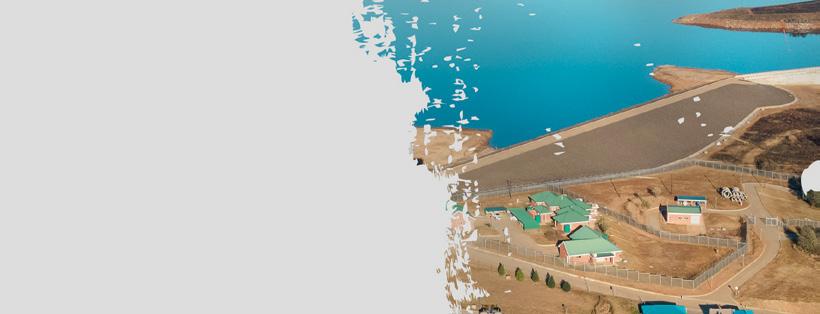
improve Water and Sanitation service delivery for all communities in KwaZulu-Natal.


UMNGENI-UTHUKELA

UMNGENI-UTHUKELA WATER: ITS INCEPTION AND EXPANSION
uMngeni-uThukela Water is a state-owned entity (SOE) and a water board that was established in 1974 and effectively from the 1st of July 2023, operates under its current name after the incorporation of Mhlathuze Water into Umgeni Water. The entity provides water and related services to other water services institutions and other customers in its gazetted service area of the Province of KwaZulu-Natal.





The entity operates in accordance with the Water Services Act (Act 108 of 1997) and the Public Finance Management Act (Act 1 of 1999), amongst others, and is categorised as a National Government Business Enterprise.
uMngeni-uThukela Water reports directly to the Department of Water and Sanitation (DWS), through the Board (Accounting Authority) and through its functionaries, the Chairperson of the Board and the Chief Executive. The Minister of Water and Sanitation is the Executive Authority for Water Boards.

uMngeni-uThukela Water is contracted to provide water and/or sanitation services to the following customers:

ACTIVITIES OF UMNGENI-UTHUKELA WATER
The primary activities of uMngeni-uThukela Water, as pronounced in section 29 of the Water Services Act, is to provide water services (water supply and sanitation services) to other water services institutions in its service area. In addition, section 30 of the Water Services Act, enables uMngeni-uThukela Water to undertake other activities, provided they do not impact negatively on the entity’s ability to perform its primary activity. uMngeni-uThukela established two subsidiary companies. Msinsi Holdings and Umgeni Water Services to advance its water service delivery mandate.
Msinsi Holdings is a company primarily established to focus on the management and conservation of major water resources located in the Mngeni River System and continues to extend its presence in other areas in line with its approved corporate plan and shareholder compact. The Mngeni system supplies the Msunduzi Local Municipality and eThekwini Metropolitan Municipality. Umgeni Water Services (UWS) is an agile frontend company established primarily to drive the expansion of the Group’s operational and business footprint through partnering with stakeholders in finding viable solutions to the challenges experienced by water providers in in the water sector.
SUPPLY AREA AND CUSTOMERS
KwaZulu-Natal is the gazetted supply area of uMngeni-uThukela Water, which straddles a total geographical area of 94 359 km2 and is home to 12.42 million people and 2.9 million households.

• eThekwini Metropolitan Municipality;
• iLembe District Municipality;
• Ugu District Municipality;
• Harry Gwala District Municipality;
• uMgungundlovu District Municipality;
• Msunduzi Local Municipality;
• King Cetshwayo District Municipality; and


• Mhlathuze Local Municipality (City of Mhlathuze).
• SIZA Water
KwaZulu-Natal comprises one Metropolitan Municipality, 10 District Municipalities and 43 Local Municipalities. A total of 14 of these municipalities are Water Services Authorities (Direct retail customers) as defined in the Water Services Act.

To stimulate economic growth within the King Cetshwayo District Municipality, in the Port City of Richards Bay, uMngeni-uThukela Water also supplies water and waste water disposal services to the following industrial customers: Mondi Paper, Richards Bay Minerals (RBM), Hulamin, Mpact, Foskor, Tronox, South 32, Richards Bay Titanium and Wilmar.
uMngeni-uThukela Water’s infrastructure assets in support of its bulk water services business comprises:

• Approximately nine hundred and eight one (981) km of pipelines and fifty-three (53) km of tunnels.
• Fourteen (14) impoundments;
• Fifty-three (53) water treatment works;
• One (1) effluent pump station; and
• Twenty-three (23) wastewater treatment works


WATE R AMA NZ I
For more information on UUW visit www. umgeni.co.za and follow us on social media @UMngeniUThukela uMngeni-uThukela Water @uMngeni-uThukelaWater @uMngeni-uThukela Water www.umgeni.co.za @umngeni_uthukela_water
Joining forces to




UMNGENI-UTHUKELA WATER WELCOMES YOU
The Tide is turning! @ WISA 2024 Biennial Conference in Durban – From South Africa’s playground to the world!
uMngeni-uThukela Water is proud to announce its role as the anchor sponsor for the highly anticipated Water Institute of Southern Africa (WISA) 2024 Biennial Conference & Exhibition.
As a leading water utility committed to sustainable water management and innovative solutions, our partnership with WISA underscores our dedication to advancing the water sector.
Various leaders within the water sector will set the scene during the welcoming ceremony.
President of the International Water Association (IWA), Prof. Hamanth Kasan will be delivering his insightful “Turn the Tide” keynote address.
The Conference Organizing Committee Leader, Mr Mluleki Mnguni, will then share his vision with the delegates and the world, with the aim of inspiring delegates to work towards ensuring that the conference yields many implementable solutions.
Given the fact that the conference is being held in Durban, a city that was ravaged by the floods of April 2022, it will not be a surprise to learn thatfollowing the Programme Committee Lead, Professor Bux’s introduction of Themes - Flood Management, Sanitation, non-revenue water and Water Re-Use strategies will be discussed.
Equally exciting for all the water supply managers, will be the workshop to outline, with practical examples, the
recently promulgated DWS’s Regulation 3630 for the classification of Water systems and process controllers. These are vital sessions not to be missed.
Additionally, the spotlight will also be drawn to the future leaders of the water sector and the attending nations via the famous, invigorating, and inclusive WETSKILLS Competition.
This contest was designed and executed by the youth, for the youth and the world at large. More ideas involving water and its varied facets will be put forward in the several other presentations and workshops to be featured in the programme.
We are, indeed, “Turning the Tide” - nationwide and beyond under the leadership of DWS.
Various multi-stakeholder programmes involving Water Services Authorities (Municipalities), Water Services Providers, COGTA, the private sector and society at large are being implemented to turn around the status quo in the water sector.
This is mirrored everywhere in the country, particularly through the recently reconfigured water boards which are at the forefront of implementation of water solutions to municipalites. Accordingly, Ms Alana Poter will lead a discussion about how the sector can further arrange itself, its systems and put all energies towards ensuring the success of the theme to effectively “Turn the Tide”.
Governance, SDGs, Partnerships and Infrastructure care and development will be amongst the hot topics on the second conferencing day to drive this point home.
Of note, numerous women-driven dedicated, multidisciplinary workshops and engagements form an integral part of the DNA of this Conference.
Technological advancement results from implemented case studies, and the prospects of those still under refinement, will be a feature interwoven throughout the proceedings. Implementation of new and innovative technologies will form the lifeblood of the work undertaken by all to ensure the future resilience of both the water sector and society at large.
WISA Board Awards and other exiting initiatives will be presented at the Gala Dinner on the evening of 13 June 2024. This elegant event is not to be missed! This article has just skimmed the surface of the many, varied and vital benefits of attending the conference. There is far more for you to discover by attending the Conference.
Please join us at the conference to explore cutting-edge technologies, engage with industry experts, and discover how uMngeni-uThukela Water is shaping the future of water services in South Africa and beyond, in collaboration with the Water Institute of Southern Africa (WISA).
Together, we are paving the way for a resilient and sustainable water future.
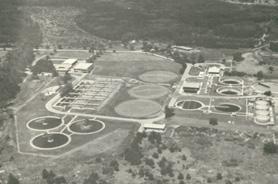

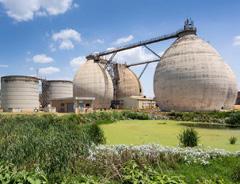
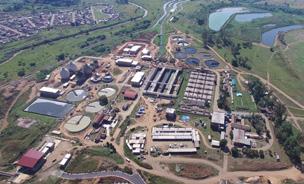 UMNGENI-UTHUKELA
WATE R . AMA NZ I
UMNGENI-UTHUKELA
WATE R . AMA NZ I
ANCHOR SPONSOR

LIQUID GOLD – MORE THAN A CENTURY OF WATER SUPPLY INNOVATION
Founded in 1886, Johannesburg began as a mining shanty town. An increasing concern over water followed the euphoria from the discovery of gold. In 1903, Rand Water was formed by individuals and institutions who instead of
From Rand Water’s inception at the turn of the 19th century during a serious drought, it was clear to the organisation that water was more precious than gold. Over the decades, this belief in the sanctity of water has endured. I often tell the Rand Water team that their work is more than the average nine to five job, it is about service, about providing dignity and life,” says Sipho Mosai, chief executive, Rand Water.

Over the past 121 years, Rand Water has grown from an entity that supplies water to thirsty gold diggers to the biggest waterboard in the Southern Hemisphere and African continent. “Our success is based on sharing in the pioneering spirit that led to the growth of the City of Johannesburg. It is the same spirit that has driven Rand Water’s growth,” explains Mosai.
Today Rand Water provides bulk potable water to more than 15 million people in Gauteng, parts of Mpumalanga, Free State and Northwest provinces - an area that stretches over 18 000 km.
Highlights over the past year
The water utility recently celebrated its 120-year birthday on a high note – with
the launch of the 210 Mℓ Vlakfontein Reservoir and the construction of the Zuikerbosch Station 5A water purification plant in Vereeniging.
The Vlakfontein Reservoir is the largest cylindrical post-tensioned concrete reservoir in the world. The Zuikerbosch Station 5A water purification plant will provide a mammoth 600 Mℓ/day of water.
“Building and maintaining infrastructure is key to bulk water provision. The Station 5A and the Vlakfontein Reservoir showcases our commitment and discipline on seeing projects through in difficult operating environments. These projects are a result of many years of forward planning,” adds Mosai.
Last year, the water utility was awarded the Blue Drop certification. “Looking at the Blue Drop Reports, Gauteng is the best performing province in the country, not a single water treatment plant is in critical condition, all of our treatment works have been classified as in either ‘good’ or ‘excellent’ condition. Rand Water is very much a part of Gauteng’s good performance. We supply some of the best quality water in the world, in terms of SANS 241, EPA criteria and WHO guidelines,” says Mosai.
Another highlight for the year was the settlement of the RW23 bond at the
COVER STORY
Construction of Vlakfontein Reservoir
Sipho Mosai, Group Chief Executive, Rand Water
principal amount of R1.23 billion. Rand Water’s bond RW23 was listed under the R10 billion Domestic Medium-Term Note (DMTN) programme, which was listed with the Johannesburg Stock Exchange in 2013 and matured on 10 December 2023.
“This bond settlement was achieved through prudent financial management and adherence to the Public Finance Management Act (PFMA) as well as strict financial discipline through its board-approved Corporate Treasury Policy (RWTP) to mitigate the possible refinancing risks. Amid all the economic challenges, Rand Water has successfully invested the redemption reserve funds in investment instruments that yielded a competitive return averaging 9.15%. We intend to use this measure to build and create future sustainability as bond settlements serves as a catalyst towards retaining investors’ confidence,” states Mosai.
He adds that throughout its entire existence, Rand Water has never received a bailout from government, and is entirely self-sustainable.
Another example of Rand Water’s financial discipline and prudence is the AA+(zaf) credit rating from Fitch. This denotes expectations of a very low default risk, with a very strong capacity for payment of financial commitments that is not significantly vulnerable to foreseeable events.
Rand Water Services
The water board has increasingly become involved in municipal spaces. “From

a business point of view, it is extremely important for Rand Water to support municipalities in the delivery of water. Municipalities are taking strain, and we are experiencing the brunt of this in the form of late payments or non-payments. It therefore makes sense for Rand Water to enter that space in a financially sustainable way,” adds Mosai.
One such example has been the Emfuleni Local Municipality that was placed under the Section 63 intervention of the National Water Services Act. This meant that the National Government effectively took over the water services authority function of the municipality and all its ancillary responsibilities. In light of the intervention, the Department of Water and Sanitation appointed Rand Water as an implementing agency to affect Section 63 intervention objectives. Rand Water has been the implementing agent of the Sedibeng Sewer Scheme Project and Vaal River System Interventions.
“This has prompted the resuscitation of Rand Water Services, a subsidiary of Rand Water that will work with the private sector and municipalities. This is a standalone,

special purpose vehicle with a board of directors and a professional management team. It will be a public private partnership. We are reimagining the way in which we supply water to communities. We are suggesting the establishment of focused water and sanitation utilities like Rand Water Services to assume the operations and maintenance of municipal water services, which will relieve municipalities of that burden,” states Mosai.
It is envisaged that a special purpose vehicle, independent of municipalities, would ultimately be responsible from the abstraction point through to reticulation to ease the burden of maintenance and upgrade of infrastructure through a proposed special-purpose vehicle.
“A professionally run special purpose vehicle would then be able to bill, deal with efficiencies and manage the indigent registers. It can then ringfence the revenue from water as well as the various subsidies from government solely for water and sanitation activities without funds being absorbed into the whole municipal system,” he says.
Mosai adds that there is little point in having pockets of excellence in the form of water boards like Rand Water, when there are households that are not receiving any water. “We want to be part of the solution. There needs to be better collaboration. We are encouraged and excited about the proposed amendments to the Water Services Act, this will be another driver for growth at Rand Water. I have been in the water sector for three decades, and for most of that time, water has barely made headlines. People are starting to understand the value of water.”
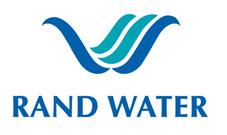
MAY/JUNE 2024 5
COVER STORY
The Zuikerbosch Station 5A water purification plant will provide a mammoth
600 Mℓ/day of water
www.randwater.co.za
Zuikerbosch Station 5A water purification plant
CEO’s message
A call to action: collaboration, performance, and accountability for South Africa's water security
As a professional body dedicated to the responsible management of South Africa's water resources, WISA witnesses the daily challenges facing this vital sector. While strides have been made, providing secure and equitable access to water remains a complex and pressing issue. By Dr Lester Goldman, CEO, WISA
We believe a fundamental shift in approach is needed, one built on three pillars: collaboration, performance improvement, and robust accountability.
Collaboration is key: Fragmented governance, with water management spread across various entities, often leads to disjointed planning and implementation. WISA urges a collaborative effort, bringing together national, provincial, and local government, water utilities, engineering professionals, and communities. Knowledge sharing, joint planning for infrastructure development, and coordinated water resource management are crucial.
Performance improvement: Leakage, ageing infrastructure, and inefficient water use plague our systems. We must prioritise infrastructure revitalisation, leak detection and repair, and widespread adoption of water-saving technologies. We must employ the correct people and ensure that we invest in them. Data-driven decision making must become the norm, coupled with continuous improvement methodologies, can optimize water treatment and distribution.
EDITOR’S message
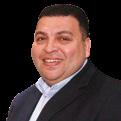
Accountability matters: Effective water management requires strong accountability mechanisms. Transparent performance reporting, with clear metrics on water loss, service delivery, and financial management, is essential. Citizen engagement and participation in water governance must be promoted. Holding all stakeholders accountable, from government to water users, builds trust and ensures responsible resource management.
The way forward: Our professional body WISA, stands ready to partner with all stakeholders in this critical endeavour. We can offer expertise in water management, facilitate knowledge exchange, and advocate for best practices. By working together, we can unlock innovative solutions to our water challenges.
The time for siloed approaches is over. Only through collaboration, a relentless pursuit of performance improvement, and a commitment to accountability can we secure a water-sufficient future for all South Africans. Let us rise to this challenge, for the sake of our environment, our economy, and our very way of life. Together, we can turn the tide.
No smooth sailing for the water
sector
”We must free ourselves of the hope that the sea will ever rest. We must learn to sail in high winds.” Aristotle Onassis
By
Kirsten Kelly, publisher, Water and Sanitation Africa Magazine
While thinking about the nautical theme of the #WISA2024 Conference, I returned to this quote from the Greek shipping magnate who amassed the world’s largest privately owned shipping fleet.
It is similar to a one of my favourite lines from Bob Dylan “Chaos is a friend of mine” which closely aligns to my parenting advice – “Embrace the chaos”. Children come with sticky hands, random melt downs, UNO cards spread on coffee tables, stuffed toys having tea parties, rocks lying on a couch and crayon art on walls. You cannot fight it; you learn to work with it (and enjoy it).
The water industry comes with leaks, payment issues, political agendas, misinformed public, angry protests, droughts, floods, climate

change and pollution. I do not see this sector getting any less complicated and any less difficult to navigate.
Fortunately, we are South Africans, we are resilient, we are problem solvers, we always make a plan, we survived apartheid, and I think we will survive anything. There are no better people to tackle the water crisis and I look forward to meeting you all in person at the #WISA2024 Conference.
I was thinking what a good time it was to have the conference, given that the election period is over and new leadership is at the helm. But truthfully, it is always a good time to bring water professionals together. I am looking forward to everyone capitalising on the public interest in water and to witness the positive steps we have made going forward.
6 MAY/JUNE 2024 WELCOME
OC CHAIR’S Message
Let’s turn the tide together
The WISA 2024 Conference is at our doorsteps and aims to bring together water institutions and professionals to discuss and showcase how to improve our water systems. By Mlu Mnguni
Atheoretical overview of the structure of the South African water sector may give us rose-tinted glasses:
• The Energy and Water Sector Education Training Authority (EWSETA) and its funding model
• The academic institutions that provide a continuous output of professionals (including their international rankings)
• The National Treasury’s graduate development programme
• The research institutions and the existing memorandum of agreements with Water Service Authorities and Water Service Providers
• The catchment management agencies and catchment management forums
• The private-public partnership project delivery models
The South African water sector looks like a model arrangement that a number of countries could copy. But, looks can be deceiving. You don’t need to be a water professional to realise the sector’s shortcomings.

There has been a regression in overall water systems performance as noted by the recent Blue and Green Drop performance scores and the involvement of the South African Human Rights Commission in water sector challenges further highlights what every South African endures daily.
It is for these reasons that the theme for the WISA2024 conference is “Turn the Tide.” This acknowledges the challenges the sector faces and that the water sector needs its institutions and professionals to actively shape the future of water and sanitation in South Africa. Rather than abandoning ship, we need to heed the call to action, we need to turn the tide.
The conference's subthemes show an understanding that there are many moving parts and focus on specific areas necessary for turning the tide. They present a further plea to improve water governance; and service delivery; leverage partnerships, technology and innovation; build resiliency and optimise our water and project delivery systems.
CHAIRMAN’S message
Navigating change with #WISA2024
Just two weeks post general elections, South Africa is navigating changes at all levels of government. Let’s use the #WISA2024 Conference to create a compact that will guide the public and private sector to rebuild and create hope for water and sanitation. By Dan Naidoo, chairman, WISA
There have been positive movements since the #WISA2022 Conference with the realignment of water boards, release of the Drop Reports, water and sanitation summits, Regulation 3630, the establishment of the National Water Resources Infrastructure Agency and the proposed amendments to the Water Services Act
While changes in political leadership are inevitable and at times welcome, it is important as an industry that we all speak from one page, have a clear voice and create a set of resolutions that can guide the public and private sector going forward.
The last thing we need are politicians that firstly reverse the positive strides made to address the current crisis, use already limited resources to reinvent the wheel and to think they can solve this crisis on their own. We need science and knowledge to guide all political decisions.
Committing to what is possible
As scientists, engineers, academics, professionals and industry leaders converge at the Durban ICC, we will be exposed to new research, innovation and ideas as well as some robust academic debate. This is
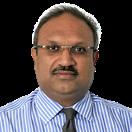
essential for the growth of the sector. But it is also important to adopt a firm set of pragmatic and achievable resolutions that has a level of accountability attached to them. We need to combine future thinking with the current situation. We need to balance the technical with society’s needs, taking into account the risk we are facing.
Presently, water and sanitation is failing in many parts of the country and we need to develop a roadmap to fix these problems. The workshops and presentations at the #WISA2024 conference should assist us in coming up with a clear plan over the next two years. We need to put a peg in the ground for all water professionals where they can strategically and tactically work towards solving this crisis and support one another. This road map that is developed must be accessible to all citizens, companies and politicians.
There are pockets of excellence in the water and sanitation sector, but everybody is working in silos. We have the science; we have the knowledge and we have the expertise. Let’s use this conference to Turn the Tide on the bad situation we are all sitting in. The outcomes of this conference must (and will) ultimately add value to society. I am looking forward to being a part of this.
MAY/JUNE 2024 7 WELCOME
INSPIRING PASSION FOR WATER
The Water Institute of Southern Africa (WISA) brings together experts from a wide range of disciplines to meet, discuss, plan for and present solutions for a sustainable water future.
Established in:
1937
Professionalism
We want to lead in strengthening strategic partnerships within the sector, while playing an active role in encouraging robust water discourse in the public domain. EASTERN CAPE GAUTENG (head office)
Trustworthiness
WISA BRANCHES
Integrity
CENTRAL REGIONS
Free State, Northern Cape & North West (serviced by head office)) KWAZULU-NATAL
Community
Innovation
8 MAY/JUNE 2024
WISA
LIMPOPO MPUMALANGA NAMIBIA WESTERN
CAPE
NORTH WEST FREE STATE MPUMALANGA LIMPOPO GAUTENG NAMIBIA
WESTERN CAPE NORTHERN CAPE
KWAZULUNATAL
EASTERN CAPE
If you would like to be a champion and volunteer for any of our Participation Structures, contact Ntuthuko Majozi (WISA HO) 086 111 9472 | Email: ps.admin@wisa.org.za
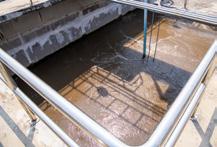
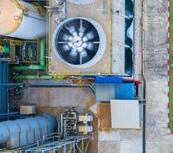



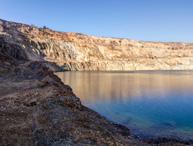
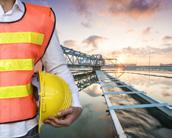
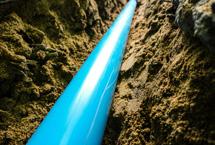
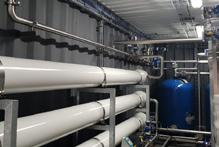


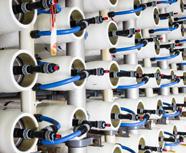
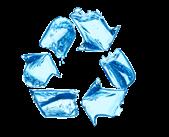

WISA Mine Water Industrial Water Process Controllers Innovation in Water Supply and Sanitation Small Wastewater Treatment Works Membrane Technology Water Science Anaerobic Sludge Processes Modelling and Data International Water Association –Southern Africa (IWA-SA) Water Distribution Management and Institutional Affairs Water Reuse 7 1 8 3 10 5 12 2 9 4 11 6 13 WE HAVE 13 TECHNICAL DIVISIONS: MAY/JUNE 2024 9
As WISA it is our long-term commitment to continuously evolve to meet the ever-changing needs of the sector and our members. This commitment challenges us to constantly review and identify new technical divisions which are of pertinent to the sector. We are excited to inform you of our new technical divisions.
Get in touch:
If you would like to be a champion and volunteer for one of these divisions and make valuable contributions, contact the WISA Head office.
Name: Ntuthuko Majozi (WISA HO) Phone: 086 111 9472
Email: ps.admin@wisa.org.za


Join us because:
• We are the oldest (established 1937) and only water-related association in South Africa that looks after the collective interests of the water sector, the professionals therein and the public.
• SAQA (South African Qualifications Authority) recognised body
• Large footprint (over 3 500 members represented by 8 branches across South Africa)
• Provide events and training to
encourage better communication, career growth, skills development, CPD points, exchange of information and networking within the sector.
• Give you access to technical support and information on the length and breadth of the water sector
• Receive preferential discounted rates on events, courses and advertising opportunities
• WISA plays a critical role in ensuring professionalisation of Process Controllers as per Regulation 3630
10 MAY/JUNE 2024 WISA
Agriculture Climate Change 1 2 Financing
Water Tariffs/ Funding models 3 Infrastructure 4 Water Use Behaviour 5 5 NEW TECHNICAL DIVISIONS TO COME! EMPOWERMENT PLATFORMS BECOME A MEMBER!
–
Women in Water Young Water Professionals

VEGA measurement technology provides precise measurement data as the basis for automatic control of the various process stages. All sensors are state of the art, certified and easy to install and commission.
The VEGA sensors in the plant: www.vega.com/watertour

pressure
www.vega.com Level and
measurement technology for water treatment

TINY BUBBLES, BIG IMPACT
BluePlanet has been appointed by Magalies Water to assist in the remediation efforts of Hartbeespoort Dam. Armed with Nanobubble technology and a restorative plan, BluePlanet is addressing root causes rather than merely treating symptoms. WASA speaks to Rowan McDonald (RM), Head of Nanobubble Technology at BluePlanet South Africa.

Bioremediation lies at the heart of BluePlanet. What is bioremediation and why should we consider these solutions in water and wastewater treatment?
RM: Bioremediation restores health and balance to ecosystems affected by pollution using a nature-based approach. In water contexts, it involves encouraging beneficial microbes and enzymes to handle excess nutrients, suspended solids, and sludge, and to create conditions that support resilient microbial communities against pollution. Unlike chemical processes that offer rapid but short-lived results and may harm non-target organisms, bioremediation uses naturally occurring species and biological reactions. This method takes longer but achieves sustainable results by establishing ecological balance and resilience.
Rowan McDonald (RM), Head of Nanobubble Technology at BluePlanet South Africa

BluePlanet has implemented bioremediation in various global projects, using acclimatised formulations of beneficial microbes and enzymes. The integration of nanobubble technology has significantly improved timelines and results. Locally, we have worked on the Kuils, Eerste, and Soet Rivers in Cape Town, the biodiversity plan of the Nyl Dam in Mokapone, and an emergency intervention at Roodeplaat Dam in Pretoria for the 2023 World Rowing Masters Regatta. Our approach is applied to the inlets and outlets of wastewater treatment plants and for environmental clean-ups, such as oil and sludge spills.
Why are so many of our rivers, dams, wetlands and lakes ‘unbalanced’?
According to the Green Drop Report, a significantly high number of municipal wastewater systems are now rated as critical, meaning that many of our rivers and dams are overloaded with poorly treated wastewater. These ecosystems do not have the ability to deal with this loading of organic and inorganic pollutants and this leads to eutrophication. Layers of sludge begin to settle at the bottom of the water body. This is typically an anaerobic environment at the sediment layer where the water meets the sludge. Here, microbes are largely inactive or slow to digest
the nutrient bed due to the lack of oxygen. This triggers a state of flux where nutrients mobilise from the sediment back into the water column.
Excess biomass in suspended form (harmful algae blooms) or floating invasives like water hyacinth and water lettuce grow as they feed off these nutrients, triggering a vicious cycle of dissolved oxygen extremes through the diurnal cycle and lack of sunlight interaction. These conditions cause fish die-offs, foul odours and a continuation of the nutrient bulking. pH and redox potential are unstable at the sediment interface and this continues the fluxing of nutrients causing the symptoms we see.
One such example is Hartebeespoort Dam, where Blueplanet’s

12 MAY/JUNE 2024 HOT SEAT

bioaugmentation program is using Nanobubble technology to reverse this hypertrophic condition. Please elaborate. At least 10 malfunctioning wastewater treatment plants (WWTPs) among other nutrient sources affect the tributaries of Hartebeespoort Dam. Even if these WWTPs are repaired, the rivers and dam may remain compromised due to decades of pollution, resulting in sludge buildup, volatile water chemistry, and high levels of nitrate and phosphorus. To restore balance, the sludge needs to be digested, sediment firmed up, and water chemistry stabilised to restore the biological balance and control dissolved oxygen concentration volatility and the mobilisation of nutrients. Essentially, we are introducing oxygen into the dam to create favourable conditions for beneficial microbes to thrive and generally out-compete the ‘bad bacteria’. It speeds up the bioremediation process.
Oxygen is introduced into the Dam using nanobubble technology. BluePlanet is in an exclusive agreement with the leaders in the field of nanobubble technology – Moleaer. There are a number of nanobubble technology companies, but we chose Moleaer for their scalable, low-maintenance method of generation. You get nanobubbles and then you have Moleaer nanobubbles – the scale and performance are years ahead of the young industry.
Their technology includes a water pump, a gas source (air compressor or oxygen concentrator), and a nanobubble generator core, which dissolves gas into water and generates nanobubbles. The nanobubble generator has no moving parts and the core itself does not even need electricity to operate. Electrical requirements come from the pumping of water and lowpressure air/oxygen supply. Sizes vary from 9 m3/hour to 1000 m3/hour per module and multiple modules can be deployed.
Given the cost and effort that goes into aeration at a WWTP, introducing oxygen into a huge water body like Hartebeespoort Dam must be a mammoth task.
Typically it would if using traditional aeration technology. Nanobubbles shouldn’t be confused with ‘aeration’. The technology is selective in its mass transfer and hyper efficient. The average WWTP uses between 600 kW and 1600 kW/M water. With nanobubble technology, we are turning 40 kW/Mℓ of water at Hartebeespoort Dam but don’t need to hydraulically turnover the whole dam. The treatment effects spread well beyond what has passed through the system.

long-term nutrient impact reduction and dam rehabilitation.
Nanobubbles are 70-120 nanometers in size and invisible to the naked eye. Around a billion fit on the tip of a finger. Unlike typical bubbles, they are neutrally buoyant, hydrophobic, and subject to Brownian motion, allowing them to fill the water collumn and infiltrate sediment.
Nanobubbles are drawn to pollutants and interaction with the sediment. Oxygen can therefore be introduced at depth, where its needed without disturbing sediment. This creates an aerobic environment conducive to microbial nutrient digestion and cycling, stabilising the system. Increased redox potential encourages phosphorus binding and supports the ammonia nitrogen cycle, with improvements already seen at Hartebeespoort Dam. Our focus is on the Swartspruit inlet as part of a scaling pilot over an 85-hectare area to determine remediation needs for the entire dam. This is not an experiment; the technology is proven in environmental applications.
BluePlanet's efforts are part of a broader strategy by Magalies Water and the Department of Water and Sanitation (DWS) where short, medium and long term interventions include source point pollution tracking, hyacinth and debri removal, bio control agents by Rhodes University, in-situ studies and upstream efforts to control pollution. Nanobubble technology is crucial for medium and
Where else can nanobubble technology be used?
Moleaer Nanobubble technology has fast proven itself valuable in sectors like mining, oil and gas, water reclamation, membrane optimisation, irrigation, and aquaculture.
Nanobubbles have been successfully used as pre-treatment in the headworks of wastewater treatment plants, especially with the increased use of chemicals and surfactants due to COVID-19 and stringent food and beverage industry standards. These substances hinder biological treatment by keeping solids suspended and targeting microbes (good and bad). Installing a nanobubble generator at a WWTP's inlet targets the oxidation of inhibitory compounds early, improving separation and reducing aeration energy.
At the WWTP discharge, ozone nanobubbles can replace chemicals, add oxygen, and promote the growth of healthy microbes in receiving rivers and dams. For potable plants dealing with eutrophic water, nanobubble technology with ozone is an ideal pre-treatment for addressing algae and toxins.

MAY/JUNE 2024 13 HOT SEAT
T: +27 (0) 16 970 8900 E: info@blueplanet-sa.com www.blueplanet-sa.com
UNIVERSITY PARTNERSHIP PIONEERS SILTATION MANAGEMENT TRAINING
Siltation reduces dam storage – vital for water supply and the economy. Managing this is crucial. The Department of Water and Sanitation (DWS) assigned the Water Research Commission (WRC) to develop a National Siltation Management Strategy (NatSilt). One of the key deliverables is capacity building.

The NatSilt programme has resulted in the development of four different qualifications to address the managerial, technical, operational and collaborative aspects of siltation management. The skills programmes have all been registered and accredited with the Quality Council for Trades and Occupation. Each of them has their own Recognition of Prior Learning framework. An e-learning platform has been developed to facilitate classroom-based learning and assessments, enhancing accessibility and flexibility for learners.
The WRC formed a partnership with the University of Johannesburg (UJ) to develop short learning programmes (SLPs) on siltation management.
“The water sector has a recognised need for capacity building and skills development in siltation management. Many professionals and practitioners lack specialised knowledge and training in this area, hindering effective decisionmaking and the implementation of siltation management interventions,” explains Lesego Gaegane, senior project manager, WRC.
SLPs bridge these knowledge gaps and equip individuals with the necessary skills and expertise. Siltation continues to pose significant challenges to water infrastructure and ecosystem health, leading to a growing demand for professionals with expertise in siltation management. SLPs offer a flexible and accessible way for individuals already working in the water sector to acquire specialised knowledge and skills relevant to their roles, ensuring that graduates are well prepared to meet the demands of the job market.
Lifelong learning is essential for professionals to stay up to date with emerging trends, technologies, and best practices in their field. SLPs provide
a convenient and efficient way for individuals to engage in continuous learning and professional development while balancing work and other commitments.
Collaborating with academic institutions such as UJ allows for the integration of research, expertise, and resources into the development and delivery of SLPs. This partnership ensures that the SLPs are academically rigorous, relevant to industry needs, and supported by the latest advancements in siltation management science and technology. Furthermore, they offer a flexible and accessible pathway to education for individuals who may not have the time, resources, or inclination to pursue traditional full-time studies. By offering modular and bite-sized learning opportunities, these programmes cater to diverse learners with varying backgrounds, experiences, and learning styles, democratising access to education and empowering a broader range of individuals to contribute to siltation management efforts.
Six SLPs were developed from the four skills programmes. While the skills programmes are formal qualifications, the SLPs accommodate individuals who do not wish to partake in a long-term learning intervention. Enrolment will begin in the second semester at UJ in July 2024.
“These SLPs will provide resources and support when implementing the NatSilt programme by upskilling and reskilling the current staff within the DWS (like civil engineers and scientists) as well as the broader water sector. The idea is to conscientise as many people as possible around siltation management. The SLPs will cover the spectrum of siltation management, which is very wide,” Gaegane explains.
Each SLP requires a different level of prior learning. Gaegane adds that the aim is to give as many people as possible access to the programmes. “This is not just for DWS employees. We do not want

INDUSTRY INSIGHT
Recognition of prior learning (RPL) framework Aspects of siltation management Position/course RPL Management Dam Siltation Manager NQF 8 Technical Dam Siltation Practitioner NQF 5 Operation Dam Siltation Process Controller NQF 3 Collaboration Dam Siltation Network and Partnership Coordinator NQF 5 14 MAY/JUNE 2024
Lesego Gaegane, senior project manager, Water Research Commission

Recognition of prior learning (RPL) framework
Dam Siltation Manager
Dam Siltation Practitioner
Dam Siltation Process Controller Part 1

8
5
4
Dam Siltation Process Controller Part 2 NQF 4
Dam Siltation Process Controller Practical NQF 4
Dam Siltation Network and Partnership Coordinator NQF 5

Community-based catchment rehabilitation project in Clarens, Free State, at a mini catchment area in the Welbedacht dam catchment
to leave anyone behind in terms of skills development and capacity building. Therefore, we have created an RPL Framework where people that do not have the requisite NQF level can apply for the SLP using their experience within the sector. Furthermore, since NatSilt is a national programme, we aim to form relationships with other universities in other provinces.
“The scope of each SLP reflects the complex nature of siltation management,

Ecological Infrastructure for Water Security Project field visit, knowledge sharing on rehabilitation of ecological infrastructure
which requires a multidisciplinary approach. The NatSilt programme has broadened the definition of siltation management beyond the dam where the sediment is deposited. The programme includes the catchment area (where the sources of the sediment are generated), the rivers and gullies (transfer zone of the sediment), as well as the ecosystems downstream from the dams. This is reflected in the SLPs that draw from a range of subjects such as social sciences, stakeholder engagement, civil engineering, geography, hydrology and chemistry, modelling, and data capturing,” states Gaegane.
The transdisciplinary team of people heading the SLPs comes from UJ’s Faculty of Science and Faculty of Engineering, as well as industry experts from a water board (uMngeni-uThukela Water), water and wastewater treatment specialist company (ERWAT,) as well as Makhuduthamaga Local Municipality.
“These transdisciplinary teams facilitate greater collaboration, which increases the quality, vigour, and engagement within the SLPs. The partnership between the DWS, UJ, and the WRC bridges theory and practice, making the NatSilt programme a relevant, evidence-based strategy that is not based on abstract concepts but something that is tested,” adds Gaegane.
DWS
“The development and roll-out of the courses show that the DWS is intentional about capacity building. These SLPs will
MAY/JUNE 2024 15
Course RPL
NQF
NQF
NQF
INDUSTRY INSIGHT
The National Siltation Management Short Learning Programmes Launch Event was attended by the Department of Water and Sanitation’s Deputy Minister – Judith Tshabalala

Several large dams are steadily losing storage capacity each year due to soil erosion and land clearance, with many smaller farm dams now full to the brim with silt
give water professionals an opportunity to specialise in siltation management. They are a small step towards creating a climate-resilient and water-secure country,” says Vincent Monene, director: Technical Engineering Services, DWS. He adds that while outsourcing technical capacity is sometimes needed, it is important to continue to build internal technical capacity as well. “That internal capacity allows us to deal with technical partners outside the department from an informed position. We are committed to attracting, growing, and retaining technical skill. These SLPs will assist us in building capacity to boost the improved operation and maintenance of our water infrastructure. They will create professionals in siltation management.”
There is a drive to increase the yield of water infrastructure that allows the country to meet growing water demands. While there are a number of projects undertaken by the DWS to raise the

Dams disrupt normal surface water and sediment flow, leading to sediment being trapped and unavailable for essential downstream ecosystems
height of existing dam walls to boost reservoir capacities, siltation is decreasing reservoir volumes. “These SLPs will be instrumental in building knowledge and specialisation around siltation management within the DWS. This will ultimately influence policy development and planning around the operation and maintenance of our dams and reservoirs,” explains Monene.
“During the pilot implementation of the NatSilt programme, it became obvious that stakeholder engagement from a national, provincial, regional, and local level was central to the programme’s success. It is important to instil a collaborative approach instead of various institutions and organisations working in silos. This collaborative approach is essential, as the DWS cannot manage dam siltation on its own. These SLPs will go a long way to assist us,” adds Gaegane.
The SLPs align with the National Skills Development Strategy (NSDS) III Goal

4.7, Outcome 4.7.2 of the Department of Higher Education and Training in South Africa. They aim to increase public sector capacity and support the building of a developmental state. The programmes are designed to meet new training needs and build workforce capacity. Successful completion of the SLPs will enable learners to play a vital role in sustaining collaborations at the catchment level and developing viable catchment communities that support the maintenance of dams. This will contribute to the long-term sustainability of water resources in South Africa, aligning with the 2030 National Development Plan, explains Dr Lee-Ann Modley, senior lecturer and deputy head of department: Geography & Environmental Management & Energy Studies, UJ. She adds that the SLPs will improve students’ access to excellent educational opportunities across various fields and disciplines, aligning with UJ’s mission and strategic objective of ‘Excellence in Teaching and Learning’ adopted as part of its Strategic Plan of 2025. It will facilitate collaboration in teaching and learning between two academic departments in the Faculty of Engineering and Built Environment, as well as the Faculty of Science, while expertise from the WRC will represent contributions from a government-sponsored agency.”

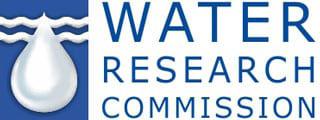
www.wrc.org.za INDUSTRY INSIGHT
16 MAY/JUNE 2024
The signing of the memorandum of agreement between (L-R) Professor Trynos Gumbo, University of Johannesburg; Dr Jennifer Molwantwa, Water Research Commission; and Professor Thea Schoeman, University of Johannesburg
13 June 11:15 - 13:15

Transforming water use through research and innovation to enhance use efficiency and security
12 June 14:15 - 16:15
Dealing with the future water quality nexus
The Water Use Thematic Area seeks to provide knowledge and innovations that ensure reliable, affordable, and efficient water use services in the domestic, industrial, agricultural, and mining areas to enhance quality of life and contribute to economic growth and improved public and environmental health. The Theme thrives on innovative smart technologies and processes that enhance water use efficiency in the country to meet the demands from all sectors. The climate-smart technologies and processes being developed are contributing to enhance the resilience and adaptation to climate change in a country classified as the 30th driest in the world. The Theme also endeavours on human capacity development and partnerships. Our projects emphasise transforming communities and improving livelihoods by developing products and tools that guide the transitioning from the current linear approach to the circular economy.
The deterioration of water quality remains a major challenge in South Africa and across the world. The need for an integrative concept acknowledges that the health of humans, animals, and the ecosystem are closely linked and that negative changes to the quality of water, can have far-reaching health consequences. Several drivers contribute to negative changes in water quality, and these include land cover/use; soil erosion, alien invasive alien plants, industrialization, urbanization and population growth; climate change; industrial discharges, urban runoff, inadequate infrastructure and ineffective waste and wastewater treatment systems, as well as compromised natural processes. Adopting an integrated “one water” approach to water quality and ecosystems health management can optimize water resources use, reduce negative impacts to human, animal, and ecosystem health, enhance resilience to water quality. This session will share high level thinking and directions on the future of water quality and its management towards an one water approach.
Dr Mamohloding Tlhagale Prof Sylvester Mpandeli
Prof John Zvimba
Dr Luxon Nhamo
Dr Sudhir Pillay
Dr Eunice Ubomba-Jaswa
Dr Samkelisiwe Hlophe-Ginindza
Hlengiwe Cele Dr Yazeed van Wyk
Dr Nonhlanhla Kalabaila
Dr Bonani Madikezela
Mr Jay Bhagwan
Dr Samkelisiwe Hlophe-Ginindza
13 June 10:30 - 12:15 Navigating the interconnection between water security, adaptation, and resilience for sustainable water management
13 June 14:00 - 15:45 OR 14:30 - 5:30 and reconvene at 16:45 after afternoon tea break
Driving Empowerment of Stakeholders through innovation and expert advisory support
Water security, adaptation, and resilience are interconnected elements crucial for sustainable water management. This involves ensuring water availability, adapting to climate change impacts, and building resilience to environmental and other shocks. By exploring best practices, such as naturebased solutions and community-driven initiatives, valuable insights emerge to address these challenges. Despite facing increasing water demand, supply, and climate change threats, opportunities exist in technological advancements and inclusive governance. Actionable strategies, including enhancing infrastructure integrity and conservation measures, are vital for enhancing water security, adaptation, and resilience at local and national levels. Collaboration among stakeholders is essential to drive collective action and achieve meaningful progress. By developing scale and context relevant strategies, South Africa can navigate its water management landscape effectively. Integrating considerations of water security, adaptation, and resilience, policymakers, practitioners, and communities can work towards sustainable water management that meets the needs of both present and future generations.
The WRC funds and has local and international partnerships to pool funds and drive larger programmes and outcomes. The WRC is acknowledged for its technology accelerator programmes such as WADER and SASTEP, and research products, however, diffusion and coverage of the knowledge and innovation has varied success uptake rates across the provinces due to many reasons including social acceptance, environment, limited capacity and funding, supply chain processes, readiness to scale etc., poor decision-making and the inability The WRC has therefore, developed a new strategy that focusses on an innovation driven water sector, an empowered and influenced stakeholder and building climate resilience and adaptation in the water sector that embeds water security for the country. This session will share the strategy, programmes, models, and roadmap that will be used successfully to scale knowledge and innovation and enhance capacity, innovation and empower water sector professionals in the country.
Dr Mamohloding Tlhagale
Dr Shafick Adams
Ms Shanna Nienaber
Ms Virginia Molose
Dr Shafick Adams
Dr Brilliant Petja
Mr Wandile Nomquphu
Dr Samkelisiwe Hlophe-Ginindza
Mr Yazeed van Wyk
Dr Roderick Juba
Ms Virginia Molose
Ms Lesego Gaegane
Dr Valerie Naidoo
Ms Zanele Sifundza
Ms Shanna Nienaber
Ms Virginia Molose
Ednah Mamakoa
Dr Manjusha Sunil
Mr Philip Majeke
Mr John Dini
MAY/JUNE 2024 17 Date Time Session title Abstract Facilitator/s Contributors
Ms
WRC WORKSHOP SESSIONS
Program details are accurate as of the publication date. For the latest updates, please visit www.wisa2024.co.za
SUBTHEMES: Hands on the wheel: Moving towards stronger partnerships and stakeholder engagement Aye Aye Capt’n: Turn the tide with improved governance
Reading the charts: Effecting resillient planning and management in a changing environment Forging A’Head and improving municipal water and sanitation service delivery and water treatment Tending the lookout: optimising monitoring and efficiency Clipping new edges with innovation and Technology

by Chairperson of WISA Organising Committee (Mr Mlu Mnguni) Address by Honorouable Minister of the Department of Water & Sanitation TBC
Introduction of Keynote Speaker by Dr Jennifer Molwantwa (WRC CEO)
Keynote by Prof Hamanth Kasan, President Elect, International Water Association: Turning the Tide? PANEL DISCUSSION: Perspectives on the State of the Water Sector in South Afrifca and what should be done to turn the tide , facilita tor/moderator: Dr Jennifer Molwantwa (WRC CEO) , Panel members are Ms Deborah Mochotlhi (DWS), Mr Ashwin Seethal (CSIR), Ms Nonhlakanipho Tau (COGTA), Ms Ayesha Laher (AHL), AG person, Ms Lungi Zuma/P rof Thokozani Majozi
Address by UMngeni-uThukela WaterAnchor Sponsor Welcome WISA 2024 Overview by WISA Technical Committee (Prof Faizal Bux): Introduction to themes 11:00-11:30 Refreshment Break in Exhibition Hall
VENUE: Hall 3A Hall 3C MR 11 CDE MR 12 CDE MR 11 AB MR 12 AB MR21AB MR 21 C MR 21 DEF MR 22ABC MR 22 DEF TUESDAY 11 June 2024 08:0016:00 Pre Conference Technical
PLEASE MAKE SURE THAT YOU REGISTER FOR THE ONE YOU WANT TO ATTEND! Durban
Integrated Decentralised
Urine
System as a Sustainable Onsite Sanitation and Resource Recovery System for Rural Schools Siza Water Re-use Plant Darvill wastewater works –Water Reclamation Plant 12:0018h00 Registration 17:3020:00 Welcome Function in Exhibition Hall / Opening of the Exhibition WEDNESDAY 12 June 2024 07:0017:00 Registration | Level 0 foyer 08:3011:00 WEDNESDAY 12 June 2024 OPENING SESSION 08:3011:00
programme conference
Tourshttps://www.wisa2024.co.za/technical-tours/
Water Recycling (DWR)
Wastewater Treatment System (DEWATS) and Low Flush
Diversion
Welcome
WEDNESDAY 12 June 2024 PARALLEL SESSIONS MAY/JUNE 2024 18

Performance assessment of solar-powered groundwater pumping systems in rural areas of Greater Giyani Municipality (Limpopo), Prof Nebo Jovanovic , University of the Western Cape
Case Study for Water Authorities: The Economic Benefit from Alternative Energy Application and Energy Efficiency, Dr Thokozani Mncube , Umngeni-uThukela Water
Assessment Groundwater Level Fluctuations in the Pietersburg Plateau for improved Groundwater management, Dr Lindelani Lalumbe , Department of Water and Sanitation
Valorisation of sewage sludge for sustainable bioenergy recovery through hydrothermal treatment, Mr Boldwin Mutsvene , Durban University of Technology (S)
Workshop #5
Assessment of groundwater recovery for the period of 10 years in Vhembe region, Limpopo Province, Mr Hulisani Mafenya , DWS
Efficient water management: insights from smart meter data for sustainability, Mr Solomon Dabillah , Ghana Water Limited (S)
The National Water Sector Scientific Forum Capacitating the Water Sector professionals and stakeholders SALGA/Dr Esper Ncube
Workshop #4 Understanding Mining Influenced Water: An Introductory Course WISA Mine Water Division, TUT
Workshop 3 Sailing International Cooperation with Blue Deal DWS & Blue Dea l
Potential water savings from water recirculating nonsewered sanitation systems for water stressed countries, Dr Anu Rachel Thomas , WASH R&D Centre, University of KwaZulu-Natal Review of Monitoring Network Performance for Effective Management of Groundwater Resources, Dr Portia Fuku , Department of Water and Sanitation
Workshop #2 Round table discussion on reducing flood risks in Durban Netherlands Embassy Whose Shit is it Anyway? Mr Richard Holden , TransCaledon Tunnel Authority
NEWGenerator nonsewered sanitation: System performance and lessons from implementation at rural school and informal settlement, Mr Tim Fisher , Wec Projects
Development of a urine evaporator for decentralised sanitation systems, Pareshin Naidoo , University of KwaZulu-Natal
& Answers
NATSURV 15: Water and Wastewater Management in the Oil Refining Industry, Dr Jo Burgess , Isle Utilities
Ubomba- Jaswa Dr Samkelisiwe Hlophe-Ginindza The Effect of Complexity on Water Quality Modelling Performance and Uncertainty, Mr Joshua Rasifudi , Department of Water and Sanitation (S)
Incorporating Potable Reuse in Big Spring, Texas –First Potable Reuse System in North America , Mr Wayne Lem , Trojan Technologies Water Quality Management through Hazard Identification, Risk Assessment, and Multi-criteria Decision Analysis, Ms Zesizwe Ngubane, Durban University of Technology (S) Cost Comparisons for Non-Sewered and Conventional Sanitation Systems in Households, Schools and Informal Settlements context, Mr Phillip Majeke , Water Research Commission
11:5512:15
Removal of emerging contaminants and heavy metals in wastewater reuse for potable water supply, Mr Prince Manyepa , Durban University of Technology
12:1512:35
Building the Water360 Global Map of purified recycled water for drinking around the world, Ms Danielle Francis , Water Services Association of Australia (V) Water and Wastewater Management in the Dairy Industry (NATSURV 4), Miss Elsa Visser , Isle Utilities
12:3512:55
Questions & Answers
12:5513:15 Questions & Answers
13:15 –14:30 Lunch Break in the Exhibition hall
WEDNESDAY 12 June 2024 (continues) Topic Drinking water treatment and reclaimed water reuse Regulation 3630 for Process controllers Planning and IWRM Round table discussion on reducing flood risks in Durban Sanitation systems Sailing International Cooperation with Blue Deal Understanding Mining Influenced Water: An Introductory Course The National Water Sector Scientific Forum Capacitating the Water Sector professionals and stakeholders Efficiency and Energy Conventional water sources: groundwater and surface water #1 Session # and Chair Session 1 Chair: Session 2 Regulation 3630 Workshop WRC Stream Session 3 Chair: Session 4 Netherlands Embassy Workshop Session 5 Chair: Session 6 Blue Deal Workshop (partnerships) Session 7 WISA MWD Workshop Session 8 SALGA Workshop on capacitating the Water Sector Session 9 Chair: Session 10 Chair: 11:3011:35 Chair Open & Welcome Chair Open & Welcome Chair Open & Welcome Chair Open & Welcome Chair Open & Welcome Chair Open & Welcome Chair Open & Welcome Chair Open & Welcome Chair Open & Welcome Chair Open & Welcome 11:3511:55 Selection criteria for solid-liquid separation processesSedimentation and Dissolved air floatation for drinking water , Ms Jessica Tsakani Mhlongo , Rand Water Workshop #1 Navigating Compliance: Understanding the Practical Implications of DWS Regulation 3630 for Process Controllers and Employers WISA Process Controllers Division (Melissa Cousins, Dewald van Staden) Transforming water use in South Africa through research and innovation to enhance water use efficiency and security. Facilitator: Dr Mamohloding Tlhagale. Contributors: Prof Sylvester Mpandeli Prof John Zvimba Dr Luxon Nhamo Dr Sudhir Pillay Dr Eunice
Questions
Questions
Answers Questions
Answers
&
&
Investigating the groundwater and surface water exchange in the Umgeni catchment, Kwazulu-Natal, South Africa, Miss Thobeka Mpungose , University of Kwazulu-Natal (S)
Linking wastewater surveillance and epidemiology with socio-economic indicators: the power of multisectoral approaches, Ms Gillian Maree, Gauteng City-region Observatory
Statistical analysis of hydrochemical data to assess aquiferstream connectivity during Managed Aquifer Recharge operations:Limpopo, SA, Dr Samson Sanya Senbore , University of Pretoria
Impact of storage conditions and enhancement strategies on viral biomarker recovery for WBE applications, Miss Sueyanka Subroyen , Institute for Water and Wastewater Technology
Workshop #10 Strategic capacity building for a Future Proof Water Sector Blue Deal SA Partnership
Workshop #3 (continue ) Understanding Mining Influenced Water: An Introductory Course WISA Mine Water Division, TUT
Workshop #9 Introduction to Water & Wastewater Treatment Technologies Mr Dewald van Staden
Towards Citywide Inclusive Sanitation to improve service delivery: A Southern Africa case study, Ms Mendy Shozi, Borda South Africa
Workshop #8 Seminar on the water / green hydrogen nexus Netherlands Embassy Strategies to recover resources from sanitation: national resource recovery based on material flows, Dr Sudhir Pillay , WRC
Workshop #7 Partnerships: International drivers & Lessons Learned WRC, SANBI, DSI, WISA, DWS, CSIR

An integrated geospatial approach and the factors required to delineate irrigation suitability areas, Dr Luxon Nhamo , Water Research Commission
Antimicrobial resistant pathogens isolated from zoonotic, environmental, water sources and people in South Africa, Prof. TG Barnard , University of Johannesburg
Assessing Sanitation Data Availability and Documentation in Gauteng in relation with Shit Flow Diagram Requirements, Ms Joyce Maseabata Nama , Wits University (S)
Contributors: Dr Yazeed van Wyk Dr Nonhlanhla Kalabaila Dr Bonani Madikezela Mr Jay Bhagwan Dr Samkelisiwe Hlophe-Ginindza
Solar absorbing polystyrene blended hydrophobic membranes for effective vapour passage during distillation, Ms Ndamulelo Nancy Phosha , Unisa, Institute for Nanotechnology and Water Sustainability (S)
14:5515:15
Analyzing Chlorination and Operational Parameters in Antiretroviral Drugs Degradation in Water, Dr Nhlanhla Hlongwa , Durban University of Technology (maybe V)
15:1515:35
15:3515:45 Questions &
WEDNESDAY 12 June 2024 (continues) 13:15 –14:30 Poster session Topic Disinfection and distillation Infrastructure Report Cards Partnerships: International drivers & Lessons Learned Seminar on the water / green hydrogen nexus Shit Flow Diagrams (SFDs) Introduction to Treatment Technologies Understanding Mining Influenced Water: An Introductory Course Strategic capacity building for a Future Proof Water Sector Monitoring for pathogens #1 Conventional water sources: groundwater and surface water #2 Session # and Chair Session 11 Chair: Session 12 SAICE Workshop WRC Stream Session 13 Partnerships Session 14 Netherlands Embassy Workshop Session 15 Chair: Session 16 Intrduction to Treatment Technologies Workshop Session 17 WISA MWD Workshop Session 18 Blue Deal Workshop (capacity building) Session 19 Chair: Session 20 Chair: 14:3014:35 Chair Open & Welcome Chair Open & Welcome Chair Open & Welcome Chair Open & Welcome Chair Open & Welcome Chair Open & Welcome Chair Open & Welcome Chair Open & Welcome Chair Open & Welcome Chair Open & Welcome 14:3514:55 Practical Considerations for Applying UV Disinfection in South Africa for Municipal Wastewater Disinfection, Mr Wayne Lem , Trojan Technologies Workshop #6 SAICE Infrastructure Report Card (IRC) –how make it more relevant for 2027 (water and sanitation) SAICE Dealing with the future water quality nexus. Facilitator: Ms Hlengiwe Cele.
Answers
Questions & Answers Questions & Answers 15:45–16:10 Tea break in the exhibition hall 15:45–16:10 Poster session MAY/JUNE 2024 20
Questions & Answers

Workshop #15
Establishing an Ascaris suum infection in pigs and harvesting eggs for research and testing purposes, Dr Danica Naidoo , WASH R&D Centre University of KwaZulu-Natal
Successes and lessons from method optimisation, from conceptualisation, development, testing, standardisation and ISO 17025 accreditation. WASH R&D Centre
Antibiotic resistance profile analysis of ESKAPE bacteria from Gauteng wastewater treatment plants, Mr Nkgameleng Mokhonoana , University of South Africa, Florida Science Campus, Jhb, Inanows (S)
Workshop #14 Bridging the Academia-Industry gaps in the WASH SectorA Framework WISA KZN Branch
Workshop #3 (continue ) Understanding Mining Influenced Water: An Introductory Course WISA Mine Water Division, TUT
Workshop #13
Effectuve Management and Maintenance of waterworks in the municipal environment, and enhancing service delivery by effective project management Mr Stefanus Weyers
#12 WetskillsFinals Netherlands Embassy Use of scanning solutions to develop 3D and VR models of existing water treatment assets, Mr Ranish Singh , Rand Water
Application of remote sensing and environmental data to quantify water in Limpopo province, South Africa, Mr Phumlani Zwane , Sol Plaatje University
Identification of Priority Pathogenic Fungi in Wastewater and Surface Water Using Shogun Metagenomics, Dr Nonsikelelo Precious Hlongwa , Durban University of Technology (maybe V)
Evaluation of two novel Solar Thermal Drying Systems for Sludge Treatment, Yashlen Septien , University of KwaZulu-Natal Next Generation Water Loss Tracking, Compliance, Management, and Performance Solutions, Mr Francois Gouws , Isle Utilities
16:3516:55
Digital Utility Maturity Assessments of South Africa’s Water Utilities, Mrs Tsitso Mocumi , Isle Utilities
Methods to disrupt bound moisture in faecal sludge and faeces to improve dewatering and drying, Pareshin Pather , University of KwaZulu-Natal BURST detection to monitor and mend our leaking Bucket: SA’s NRW struggles, Dr Kerusha Lutchmiah , Royal HaskoningDHV
16:5517:15
&
10:30
08:40 Chair (Prof Faizel Bux): Introduction 08:3009:15 Plenary Keynote 1: Ms Alana Potter, “Turning the tide to ensure that the right to water is realised” 09:1009:50 Plenary Keynote 2: Prof Loretta Feris, DVC Academic, Pretoria University: “How can we improve water governance from a transdiciplinary regulatory perspective?” 10:0010:30 Questions and Discussion 10:30-11:00
Topic Activated sludge: membranes and drying Non-Revenue Water and Water Demand Management initiatives at Rand Water Water Consumption Monitoring WetskillsFinals Digital Technology Effectuve Management and Maintenance of waterworks in the municipal environment Understanding Mining Influenced Water: An Introductory Course Academia-Industry Gaps in WASH Workshop Monitoring for pathogens #2 ISO 17025 accreditation Session # and Chair Session 21 Chair: Session 22 Rand Water Workshop WRC Stream Session 23 Chair: Session 24 Netherlands Embassy Workshop Session 25 Chair: Session 26 Waterworks Management & Maintenance Workshop Session 27 WISA MWD Workshop Session 28 WISA KZN Branch Session 29 Chair: Session 30 WASH R&D Centre Workshop 16:1016:15 Chair Open & Welcome Chair Open & Welcome Chair Open & Welcome Chair Open & Welcome Chair Open & Welcome Chair Open & Welcome Chair Open & Welcome Chair Open & Welcome Chair Open & Welcome Chair Open & Welcome 16:1516:35 Pitfalls of Membrane SolidsLiquid Separation for Biologically Enhanced Phosphorous removal in Activated Sludge Systems, Mr Markus Johannes Albertus Slabbert , Bigen Africa Workshop #11 Non-Revenue Water and Water Demand Management initiatives at Rand Water Rand Water Dealing with the future water quality nexus Continue Results of a study of the business cases for technology-based water demand management in facilities, Prof Kevin Wall , University of Pretoria Workshop
Questions
Questions
Answers Questions
Questions
Answers Questions
Answers
WISA
THURSDAY
07:00
Registration
Level 0 foyer THURSDAY 13 June 2024 OPENING SESSION
17:1517:30
& Answers
& Answers
&
&
17:30 for 18:00
AGM
13 June 2024
17:00
|
08:30
08:30
Refreshment Break in exhibition Hall
Developing a webbased app with hydrometeorological indices to support decision-making across South Africa, Dr Sarah Roffe , Agricultural Research Council
The Impact of Mining Activities on the Surface Water Quality: Kaap River in Barberton, Mpumalanga, Ms Mokibelo Frengelinah Mamabolo , University of Mpumalanga (S)
Co-digestion of sludge for potential energy generationA Darvill case study: policy review, Dr Sinayo Ndwabu , Umngeni-uthukela Water
Assessment of users’ needs for weather and climate information in the South African water sector , Dr Sarah Roffe , Agricultural Research Council
Impact of different pollution sources on Microplastics in the Msunduzi river, Miss Nomalihle Malambule , Durban University of Technology (S)
Comparative Analysis: Batch Reactor and SingleChamber Microbial Fuel Cells for Treating Synthetic Acid Mine Drainage, Ms Tasmiyah Ismail , Durban University of Technology
Workshop #17
Optimal placement of tanks in water distribution networks for Improved reliability, Mr Aaron Kalonji Kapata , Witwatersrand University
Simulating the abnormally hot January 2023 conditions over southern Africa, Mr Murendeni Tsanwani , Agricultural Research Council
Impact of different pollution sources on plastisphere microbiome in aquatic ecosystems, Nomalihle Malambule , IWWT, DUT
Informal Settlement Greywater Generation: A Missed Opportunity in a Water Scarce Country? Mr Wihann van Reenen , IIEMSA
Pioneering wastewater based surveillance for communicable diseases in South Africa National Institute for Communicable Diseases/ Durban University of Technology
Application of the Integrated Wastewater Recovery Model: A Case Study at the Burgersfort WWTW, Dr Gladys Belle , University of the Free State; Centre for Environmental Management
Future-Forward Alliances: Pioneering Public-Private Collaborations, Ms Chiedza Mnguni , Anglo American Platinum Asset portfolio condition assessment: The key to structured asset acquisition, care, maintenance, and asset disposal, Mr Humelton Siviwe Bunge , Erwat

The use of drought operating rules to improve water security in South Africa, Mr Hulisani Rananga , Department of Water and Sanitation (S)
Causes and Effects of Eutrophication in Water Resources –Inanda Dam Case Study, Miss Nomfundo Mngadi , UmngeniUthukela Water
Pathways for increased usage of secondary byproducts in the wastewater/ water / energy production., Mr James Topkin , Erwat
Legionella pneumophila in Urban Water Systems: A Case Study from Johannesburg’s High-Rise Buildings, Dr Atheesha Singh , University of Johannesburg
Workshop #16 How standards can aid in developing resilient sanitation systems in Southern Africa WISA Sanitation Standards A Pilot Initiative for Establishing the Interlinkages between SDG 6.3 and the other SDGs, Mr Molefi Mazibuko , Department of Water and Sanitation Trends in the Condition of South Africa’s Water and Sanitation Infrastructure, Mr Francis Gibbons , FG Consulting
The origins and evolution of the national infrastructure condition report cards , Prof Kevin Wall , University of Pretoria
Introducing PublicPrivate Partnerships (PPP’s) in the Municipal water services sphere, Mr Arthur Douglass , SA Water Works Utilities (Pty) Ltd t/a Silulumanzi
Supporting the enabling environment for public sector uptake of water and sanitation innovations, Mr Rajiv Paladh , Bosch Holdings (Pty) Ltd
The application of operational benchmarking for water quality improvement at a Municipality in Mpumalanga, Mr Benjamin Shotholo , Tshwane University of Technology
Effective partnerships for groundwater management: a case study on the Table Mountain Water Source Partnership, Miss Kalpana Maraj , University of Cape Town
11:0511:25 Minimizing Fouling on Ultrafiltration Membrane by Inline Coagulation and Air Scouring, Mr Calvin Mokgaditse , Rand Water National State of Water Resource in South Africa 2023/2024, Mr Hulisani Mafenya , DWS
Navigating the interconnection between water security, adaptation, and resilience for sustainable water management. Facilitators: Dr Mamohloding Tlhagale and Dr Shafick Adams. Contributors: Dr Brilliant Petja, Mr Wandile Nomquphu, Dr Samkelisiwe Hlophe-Ginindza, Mr Yazeed van Wyk, Dr Roderick Juba, Ms Virginia Molose, Ms Lesego Gaegane
Hydro-diplomacy of transnational water transfer systems in Southern Africa: Orange-Senqu and Kunene water transfer reflections , Dr Dumsani Mndzebele , SADC Secretariat
Fouling Resistance Improvement in Membrane- Based Municipal Wastewater Treatment: A Focus on Surface Modifications, Mr Godwill Kasongo , Cape Peninsula University of Technology (S)
11:2511:45
Rediscovering the legal definition of “pollution”its about more than just water quality, Carin Bosman , CBSS cc
Pathogenic bacteria and dissolved organic matter removal from lake water using microporous polyethersulfone- 4-hydroxybenzoic acid membranes, Ms Phumlile Pretty Mamba , Unisa (S)
11:4512:05
Stakeholders’ perception on the effectiveness of the water use licence application system in South Africa, Dr Jurie Moolman , North-West University
Fabrication and assessment of polymeric membranes embedded with Cellulose Nanocrystals for antibiotics removal from wastewater, Miss Molly Katlo Keitemoge , University of Johannesburg
12:25
12:05
12:2512:45
THURSDAY 13 June 2024 PARALLEL SESSIONS Topic Membranes Governance and Regulation Sanitation Standards Workshop SDG 6 and Partnerships Infrastructure condition Urban water systems Wastewater based surveillance for communicable diseases Circular Economy Streams and rivers #1 Climate, floods and drought #1 Session # and Chair Session 31 Chair: Session 32 Chair: WRC Stream Session 33 WISA Sanitation Standards Workshop Session 34 Chair: Session 35 Chair: Session 36 Chair: Session 37 National Institute for Communicable Diseases/ DUT Session 38 Chair: Session 39 Chair: Session 40 Chair: 11:0011:05 Chair Open & Welcome Chair Open & Welcome Chair Open & Welcome Chair Open & Welcome Chair Open & Welcome Chair Open & Welcome Chair Open & Welcome Chair Open & Welcome Chair Open & Welcome Chair Open & Welcome
Questions & Answers Questions & Answers Questions & Answers Questions & Answers Questions & Answers Questions & Answers Questions & Answers Questions & Answers
Modelling the refurbishment of a flood damaged wastewater treatment works, Dr Barbara Brouckaert , University of Kwazulu-Natal
Liveable Urban Waterway Programme in the City of Cape Town, Mr Andrew McDonald , COCT
Workshop #20 The Future of Water Reuse in South Africa WISA Water Reuse Division/ CSIR
Workshop #19 Digital and Circular Water Transformation as part of Water Service Delivery Climate Responses WISA Innovation for Water Supply & Sanitaiton / Isle Utilities Ltd
Workshop #18 #BreakingSilosEmpowering Youth for Transformative Change WISA YWP
Occurrences and Implications of Pathogenic and Antibiotic-Resistant Bacteria in Different Stages of DWTPs and DWDS, Mr Khuthadzo Mudau , Department of Water and Sanitation (S)
Assessing Water Sanitation and Hygiene Facilities in Schools: Collaborative Strategies for Sustainability, Ms Magareth Thulisile Ngcongo , Mangosuthu University of Technology (S)
#15 (continue) How standards can aid in developing resilient sanitation systems in Southern Africa WISA Sanitation Standards More than just training: rethinking capacity development in the water sector, Mr Derick du Toit, Association for Water and Rural Development Vibrio cholerae risk management from source water to tap in Rand Water, Ms Yvone Liee , Rand Water

South Africa’s Recreational Waterscape: Analyzing the potential Risks and Impact on Public Health in Gauteng, Dr Zaakirah Delair , University of Johannesburg Assessment of climate change flood risk in the lower Isipingo Catchment –Ethekwini Municipality, Miss Zinhle Nzuza , Royal Haskoningdhv 14:4515:05
14:2514:45
Urban Water Quality in Bloemfontein Free Sate, Dr Leana Esterhuizen , Central University of Technology, Free State (V)
Assessing Heavy Metal Pollution Impact on Drinking Water Quality in Mining Areas in Ghana , Mr Jacob Amengor, Ghana Water Company Limited
Sustainability and Inclusion in rural water supply: An approach that works, David Sabo , Christoffel Blindenmission (V)
Dr Valerie Naidoo, Ms Zanele Sifundza, Ms Ednah Mamakoa, Dr Manjusha Sunil, Mr Philip Majeke and Mr John Dini
A WRF simulation of the July 2023 snowfall event over South Africa, Mr Mukovhe Singo , Agricultural Research Council 15:0515:15
THURSDAY 13 June 2024 (continues) 12:45–14:00 Lunch Break in the exhibition hall 12:45–14:00 Poster Session Topic Sanitation Standards Workshop Capacity building and Stakeholders #1 Drinking water quality #1 #BreakingSilosEmpowering Youth for Transformative Change Digital and Circular Water Transformation as part of Water Service Delivery Climate Responses The Future of Water Reuse in South Africa Streams and rivers #2 Climate, floods and drought #2 Session # and Chair WRC Stream Session 41 WISA Sanitation Standards Workshop Session 42 Chair: Session 43 Chair: Session 44 YWP Workshop (DO NOT MOVE TIMESLOT) Session 45 Topic: WISA Innovation Workshop Session 46 WISA Water Reuse Division/ CSIR Workshop Session 47 Chair: Session 48 Chair: 14:0014:05 Chair Open & Welcome Chair Open & Welcome Chair Open & Welcome Chair Open & Welcome Chair Open & Welcome Chair Open & Welcome Chair Open & Welcome Chair Open & Welcome 14:05
Driving Empowerment
through innovation
expert advisory support Facilitators:
Virginia
14:25
of Stakeholders
and
Ms Shanna Nienaber and Ms
Molose Contributors:
Workshop
Questions & Answers Questions & Answers Questions & Answers Questions & Answers 15:15 -15:45 Tea break in the exhibition hall 15:15 -15:45 Poster Session MAY/JUNE 2024 23
Intersection of water scarcity and women/ girls’ socio-economic exclusion: insights from three selected villages Phalombe, Malawi, Prof Lobina Palamuleni , North West University
The Determination of Arsenic in Contaminated Sites in South Africa using a Triple Quadrupole ICP-MS, Mr Sibusiso Mnguni , Rand Water
Quantification of nitrifying microorganisms in water using RealTime Polymerase Chain reaction, Ms Lutendo Vele , Rand Water Just add water!: Planning for rural livelihoods and economic activities, Mr Derick du Toit , Association for Water and Rural Development
and
in the development of interim Catchment Managment Strategy for Pongola-Umzimkulu CMA, Mr Nkosinjani Mkhize , Department of Water and Sanitation Water and society: how social survey data can help inform responses to water security, Ms Gillian Maree , Gauteng City-region Observatory

Urban Water Resilience Plans for South Africa Cities, Ms Anya Eilers , Zutari (maybe V)
Ferric Hydroxide Recovery from Iron-Rich Acid Mine Water with Calcium Carbonate and Gypsum Scale Inhibitor, Dr Tumelo Monty Mogashane , Mintek, Analytical Chemistry Division
compliance legislation framework. WISA Water Reuse Division
Investigating the Impact of Intermittent Water Supply on Water Quality in Chimwemwe Township Zambia, Dr Stephen Siwila , The Copperbelt University
Evaluating Corporate Social Investments by Platinum Mining Companies in Rustenburg to improve sustainable community development, Miss Lelentle Motaung , ERWAT
16:10-16:30
16:30-16:50 Can Common Natural Resource Management be Sustainable at a National Scale? Ms Karen King , RoyalhaskoningDHV (S) Do polymeric coagulants used in drinking water plants have an effect on human health? Dr Rahzia Hendricks , Rand Water
Introduction 08:3009:10 Plenary Keynote 1: Mr Jay Bhagwan, “You, me and SANITI –sharing a journey of sanitation disruption”
THURSDAY 13 June 2024 (continues) Topic Procurement Strategies for Strengthening the Adoption of Water Innovations by Municipalities Capacity building and Stakeholders #2 Drinking water quality #2 WetsNextFrom Innovation to Implementation Anaerobic sludge, are we on track, and is it an investment option? Development and implementation of water reuse and reclamation compliance legislation framework Monitoring for metals and microbes Water scarcity and climate resilliance #1 , Session # and Chair WRC Stream Session 49 WRC, SALGA, DSI Session 50 Chair: Session 51 Chair: Session 52 Wetskills Foundation Workshop (DO NOT MOVE TIMESLOT) Session 53 WISA Anaerobic Sludge Division Session 54 Topic: WISA Reuse Division Workshop : Session 55 Chair: Session 56 Chair : (DO NOT MOVE TIMESLOT) 15:4515:50 Driving Empowerment of Stakeholders through innovation and expert advisory support (continue) Chair Open & Welcome Chair Open & Welcome Chair Open & Welcome Chair Open & Welcome Chair Open & Welcome Chair Open & Welcome Chair Open & Welcome Chair Open & Welcome 15:50-16:10 Workshop #21 Procurement Strategies for Strengthening the Adoption of Water Innovations by Public Sector Institutions: The opportunity of NonSewered Sanitation WRC, SALGA, DS I Stakeholder Driven Approach
Workshop #22 WetsNext –From Innovation to Implementation Wetskills Foundation Workshop #23 Anaerobic sludge, are we on track, and is it an investment option? WISA Anaerobic Sludge Division Workshop #24 Development
reuse
and implementation of water
reclamation
Questions
Answers Questions & Answers Questions & Answers Questions & Answers 19:00 WISA 2024 GALA DINNER FRIDAY 14 June 2024 07:0017:00 Registration | Level 0 foyer 08:3010:30 FRIDAY 14 June 2024 OPENING SESSION 08:3008:40 Chair
Preyan
MAY/JUNE 2024 24
16:50-17:00
&
(Dr
Arumugam):
Solar Desalination by Black TiO¬2 and 3DPrinted Photocatalysis Mounted on Cellulose Nanocubes as Support Material, Mr Wesley Lawrence , University of Pretoria
Growing Leafy Greens in Hydroponics in Cities, Miss Luyanda Sokhela , RoyalhaskoningDHV
Workshop #28 Does the current regulatory environment achieve the best possible outcome in Small WWTW (<5 ML/d)? WISA Small WWTW Division. TransCaledon Tunnel Authority, AHL Water , SALGA
A pragmatic review to alternative water supply sources for improved water security in eThekwini Municipality , Dr Ismail Banoo , UKZN
Evaluating Life Cycle Costing Models for Municipal Infrastructure in Tariff Setting for South African Municipalities, Mr Onalenna Mochotlhoane , Urban and Public Infrastructure Research Initaitive (S)
User-paid household sanitation services for informal settlements. A paradigm shift for sanitation service delivery, Ellen Mutsakatira , Khanyisa Projects
Workshop #27 UNESCO IHP DWS
Workshop 26 Water Utility Best management Practice - Intercontinental Collaborations Umgeni-Uthukela Water
Improving the penalty-free multi-objective evolutionary design optimization of water distribution systems, Ms Emily Kambalame , Witwatersrands
Microbial diversity of bioaerosols produced in wastewater treatment plants and their potential health risks, Ms Puseletso Kumalo , Durban University of Technology (S)
Organic profiling of pollution incidents at a wastewater treatment plant –a case study, Mr Denver Karshagen , ERWAT
Phytotoxicity and Quality of Co-composted Sewage Sludge and Green Waste at Different Mixing Ratios, Dr Benton Otieno , WASH R&D University of KwaZulu Natal
Standards for drinking water quality in South Africa SANSMs Debbie Trollip Modelling of Struvite Recovery from Anaerobically Digested Waste Activated Sludge using Response Surface Methodology, Ms Charmaine Kgomotso Funani , Vaal University of Technology (S)
Development and performance of microalgal-based consortium for bioremediation of high-strength COD wastewater, Mr Siphelele Sibisi, Institute for Water and Wastewater Technology, Durban University of Technology (S)
Microalgae cultivation in raceway pond (300,000L) using wastewater in real environment, challenges and solution, Dr Faiz Ahmad Ansari , Durban University of Technology
Revised SANS
Moving from “Best-Effort” Support Approach to a Structured and Responsive Municipal Support Evaluation Approach, Miss Nonhlakanipho Tau , Misa
11:2511:45
Development of the DEA Based Municipal Water and Sanitation Services Infrastructure Management Efficiency Index, Ms Nonjabulo Mbhele , Urban and Public Infrastructure Research Initiative (UPIRI)-UCT (S)
11:4512:05
MAY/JUNE 2024 25 09:1509:55 Plenary Keynote 2: Ms Nonhlakanipho Tau, COGTA “ Governance: Focusing on Effectiveness and efficiency to turn the tide ” 09:5510:20 PANEL DISCUSSION: How do we Turn the Tide in Sanitation
meet
College, London , and possibly DWS DG Dr Sean Phillips; facilitated by Chair 10:2010:30 Questions and Discussion 10:30-11:00 Refreshment Break in exhibition Hall FRIDAY 14 June 2024 PARALLEL SESSIONS Topic Water services sector support The Revised SANS 241: Standards for drinking water quality in South Africa Struvite recovery and microalgae WWTW monitoring Water Utility Best management Practice - Intercontinental Collaborations UNESCO IHP Costing Models Regulation of small WWTW (<5ML/d) Alternative water sources Session # and Chair Session 57 Chair: Session 58 Topic: SANS 241 Workshop Session 59 Chair: Session 60 Chair: Session 61 Umgeni-Uthukela Water Workshop Session 62 Topic: UNESCO IHP Workshop Session 63 Chair: Session 64 WISA Small WWTW Division. TCTA, AHL Water , SALGA Session 65 Chair: 11:0011:05 Chair Open & Welcome Chair Open & Welcome Chair Open & Welcome Chair Open & Welcome Chair Open & Welcome Chair Open & Welcome Chair Open & Welcome Chair Open & Welcome Chair Open & Welcome 11:05 -
Can the era of decentralised nexus services resolve South Africa’s service delivery challenges? Dr Mias Van Der Walt
Workshop #25 The
to
the SDGs, with keynotes, Anthony Odili, University
11:25
, Bigen
241:
12:05-12:15 Questions & Answers Questions & Answers Questions & Answers Questions & Answers Questions & Answers
Assessment of climate resilience rating for nonsewered sanitation technologies using existing climate resilience framework, Mr Phillip Majeke , Water Research Commission
Improving urban resilience through green infrastructure: a case study of the Mpumalanga Province, South Africa, Dr Ayanda Shabalala , University of Mpumalanga
Workshop #32 Mentorship Programme WISA HO
Investigating Polyacrylamide as a Depressant in PGM Ore Flotation and its Effect on Tailings Dewatering, Mr Thabang Shamukuni , University of Cape Town
Exploring the Use of Seawater in Cu-Ni-PGM Ore Concentrators , Prof Malibongwe Manono, University of Cape Town
Workshop #31
Nelson Mandela Bay: Drought Comparison, Mr David Raymer , NMBM
In-pit disposal of mineral residues to minimise dirty water in heavily-loaded catchments, Dr David Love , Guinea Flower (Pty) Ltd
Sustainable Wastewater Infrastructure and Operational Expenditure, Costing and Financing Umgeni-Uthukela and Prime Africa
Workshop #30 The importance of involving Women in ensuring Water Access and Availabilitya SADC Perspective WISA KZN Branch (Mbali)
Determination and quantification of selected antibiotics within the South African urban water cycle, Miss Molly Katlo Keitemoge , University of Johannesburg
Analysis of Phytosanitary Products in Surface Water and Groundwater Using GCxGC-TOFMS, Dr Christina Kannigadu , LECO
Analysis of Trace Odorants in Drinking Water by HS-SPME GCand GCxGC-TOFMS, Mr Alexander Whaley , Leco Africa (Pty)
Ammonium oxidizing bacterial populations in South African activated sludge wastewater treatment plants, Mr Mfundisi Thobejane , Erwat
Exploring the potential of indigenous bacteria for complete nitrate removal in WWTP effluent in Durban, Dr Karabelo Moloanto a , University of KwaZulu Natal
Up-scaling partial nitritation-anammox (PN/A) process for the treatment of anaerobic sludge digester effluent, Dr Owaes Magray , Institute for Water & Wastewater Technology
Assessment of nanobubble aeration performance in the treatment of poultry slaughterhouse wastewater, Mr Ephraim Kaskote , Cape Peninsula University Of Technology
13:55-14:15
Testing of rubber for use in a demineralisation plant –Eskom experience, Mrs Sumayyah Sullima n, Eskom
14:15-14:35
&
14:35-14:45
12:15–13:30 Lunch Break in the exhibition hall 12:15–13:30 Poster Session Topic industrial waste and wastewater National Sanitation Implementation Plan Workshop Ammoniums and nitrates Monitoring for organics The importance of involving Women in ensuring Water Access and Availabilitya SADC Perspective Sustainable Wastewater Infrastructure and Operational Expenditure, Costing and Financing Workshop Mining waste and wastewater WISA Mentorship Programme Water scarcity and climate resilliance #2 Session # and Chair Session 66 Chair: Session 67 DWS National Sanitation Implementation Plan Workshop Session 68 Chair: Session 69 Chair: Session 70 The importance of involving Women in ensuring Water Access and Availabilitya SADC Perspective Session 71 Wastewater Infrastructure Costing Session 72 Chair: Session 73 WISA Mentorship Programme Workshop Session 74 Chair: (DO NOT MOVE TIMESLOT) 13:30-13:35 Chair Open & Welcome Chair Open & Welcome Chair Open & Welcome Chair Open & Welcome Chair Open & Welcome Chair Open & Welcome Chair Open & Welcome Chair Open & Welcome Chair Open & Welcome 13:35-13:55 Development
the wastewater streams., Miss
Ekurhuleni Water Care Company (S) Workshop #29 National Sanitation Implementation Plan
of nitrogen-doped graphene/MOF nanocomposites towards adsorptive removal of Cr(VI) from
Tshireletso M Madumo ,
DWS
Questions
Answers Questions
Answers Questions & Answers Questions & Answers Questions & Answers MAY/JUNE 2024 26 FRIDAY 14 June 2024 (continues)
&


14:45-15:15 Break 15:1516:45 FRIDAY 14 June 2024 CLOSING SESSION 15:15-16:15 Student Prize Ceremony 16:15-16:45 Reflection on WISA2024 17:00-18:00 Farewell Cocktail Program details are accurate as of the publication date. For the latest updates, please visit www.wisa2024.co.za MAY/JUNE 2024 27
DELEGATE INFORMATION AND HOUSEKEEPING

ACCESS TO SESSIONS

• Always wear your badge to gain access to session rooms and the exhibition hall.
• Access to the session rooms is on a first-come, first-served basis.
• The organisers will close access to the session if all seats are filled, for health and safety reasons.
• Delegates are not allowed to stand in the aisles or at the back of the venue.
• Mobile phones must be switched to silent when in session.
ACCOMMODATION


AIRPORT TRANSFERS

Airport transfers are available to and from O.R. Tambo International Airport. Arrangements can be made at any of the official hotels or at the travel desk at registration. Cost for transfers is for the delegate’s account.
BANKING

28 MAY/JUNE 2024
Below is a list of the official hotels:
ATM is located inside the Durban ICC, lower level. Please enquire that the Durban ICC reception desk.
Beach Phone:
337 2231 Southern Sun
Phone: 031 362 1300 The Edward Phone: 031 337 3681 Garden Court
Parade Phone: 031 337
ONOMO Hotel Durban Phone: 031 492 3917 HOUSEKEEPING
An
Garden Court South
031
Elangeni & Maharani
Marine
3341

CONFERENCE VENUE
The conference will take place at the Durban ICC Address: 45 Bram Fischer Road, Durban, 4001
Phone: 031 360 1000
CONTINUING PROFESSIONAL DEVELOPMENT (CPD) AND ATTENDANCE CERTIFICATES

FIRST AID
WISA/ECSA/SACNASP CPD points are allocated based on attendance.
1 point (8 hours) per day attendance
0.5 points (4 hours) per day
0.5 points (4 hours) for technical tour attendance
• Maximum points that can be earned is therefore 3.5 points (28 hours) for full attendance.
• Attendance is tracked electronically via a chip imbedded in delegate name badges and electronic monitoring stations throughout the venue. CPD and/or attendance certificates will be issued by WISA electronically post event based on tracking data.
• To earn CPD points or obtain an attendance certificate after the event, please visit the CPD counter to activate your badge.
• The conference organisers cannot be held liable for lost data due to inactivated RFID chips.
EMERGENCY NUMBERS
Emergencies from a mobile: 112
Emergencies from a landline: 107
South African Police Service: 10111
Medical & Fire Emergencies: 031 361 0000
Ambulance: 10177
ENTITLEMENTS
Full conference registration includes the following:
• Access to all conference sessions
• Access to the conference exhibition
• Delegate package
• Welcome Reception (Tuesday 11 June)
• Farewell Reception (Friday 14 June)

Medics will be available for the full duration of the conference. Should you need medical assistance, please contact staff at the registration desk, who will be able to assist you.
GALA DINNER TICKETS

Gala dinner tickets are not included in your registration fee. Please note that space at the gala dinner is limited.
Should you have bought a ticket and are no longer able to attend, your ticket is not refundable.
You may, however, pass your ticket on to another delegate who has not already purchased one.
Should you wish to attend and have not yet purchased a ticket, please visit the registration desk where you can purchase a ticket if space is available.
TAXI SERVICE

Uber is freely available in Durban and offers a very cost-effective option to get around. Download the Uber app at www.uber.com/en-ZA
INDEMNITY

While every care is being taken to ensure the safety of delegates, in the event of unforeseen disruptions, neither WISA, conference organisers nor the ICC can be held responsible for any losses or damages incurred by delegates. The conference organisers act as agents only in securing hotels, transport and travel services, and shall in no event be liable for acts or omissions in the event of injury, damage, loss, accident or delay through contractors or by the employees of such contractors. Hotel and transportation services are subject to the terms and conditions under which they are offered to the general public. Delegates should make their own arrangements with respect to personal insurance. The conference organisers reserve the right to make changes as and when deemed necessary without prior notice to the parties concerned. All disputes are subject to resolution under South African law.
PROGRAMME


The programme is correct as at the time of printing, but the organisers reserve the right to alter the programme if and when deemed necessary.
REGISTRATION


Registration and bag collection are located at the Registration Kiosk. Registration will be open at the following times: Tuesday, 11 June 2024: 14:00 – 18:00 Wednesday, 12 June 2024: 07:30 - 18:00
Thursday, 13 June 2024: 07:30 – 19:00 Friday, 14 June 2024: 07:30 – 17:30
SAFETY

Here are our top tips for keeping safe in the city. For more detailed information, see the sections below.
MAY/JUNE 2024 29
HOUSEKEEPING
WWW.TALBOT.CO.ZA

Avoid carrying large sums of cash, don’t carry cameras or mobile devices in plain sight, and do not leave belongings unattended. Heed the advice of your hosts or locals on where to go after dusk. Avoid walking in deserted and dark places or the beachfront
Park in a secure, well-lit area with street guards.
Never allow strangers to assist you in any way at ATMs or Keep copies of all valuable documents in a safe place.

There is a no-smoking policy in the ICC. Please only smoke in the
SOCIAL EVENTS
All social events will take place at the ICC.
Tuesday 11 June 2024
18:00 – 21:00
Exhibition Hall
Business casual

Please ensure you wear your name badge at
Light meal, limited drinks. Please bring a card or cash for additional drinks.
Thursday 13 June 2024
19:00, till late
ICC Arena - Hall 6
Formal suit and tie/cocktail dress
Please bring your ticket with you
Three-course meal and limited drinks. Bring cash or a card for additional drinks.
Friday 14 June 2024
17:00 – 18:00
ICC, Arena Foyer
Business casual
Please ensure you wear your name badge at
Light snacks, limited drinks. Please bring a card or cash for additional drinks.
SPEAKER PREPARATION ROOM
The speaker preparation room is located on the 1st Level, Arena Lobby. Should you be giving an oral presentation, please check in to the speaker preparation room at least three hours prior to your presentation, to check your PowerPoint presentation with the technical team. You will not be able to upload your presentation in the venue, nor will you be able to use your own laptop to present.

The ICC has complimentary Wi-Fi throughout the building. No
WISA 2024 MOBILE APP
We encourage all delegates to install the WISA 2024 Biennial Conference & Exhibition mobile app.
To download the app, search fo r “The Event App” by EventsAir on your play store, or use the following QR codes:




Event code: WISA2024
Use your email address linked to your registration as your username and your PIN sent to you by email – if you cannot find it contact the Registration Manager.

1 ATTENDEES:
To search for another delegate, go into the “Attendees” button.
2
Delegates are listed alphabetical by Surname (Family Name). When you use the search function, you can search by first name or family name and it will filter out all delegates with that first or family name.
3 You are able to send a message to other delegates via the mobile app by selecting their name, and then scrolling down to the bottom of their profile and selecting “Send Message”.

MY PHOTO
This is where you can load your photo to your profile on the delegates list so that other delegates know what you look like.
PROGRAMME
Lets you view a full programme for the event, and My Programme lets you view your selected sessions to attend or view.
SURVEYS / POLLS

Please complete the surveys wherever possible to help the conference with valuable feedback.
SPEAKERS
This is where you can view information on each speaker – including their biography, times and dates of presentations and their abstracts.Speakers are listed alphabetically by surname.
EXHIBITORS
A list of all exhibitors in alphabetical order showing their stand numbers, an email address and you can also send them a message via the mobile app.
EVENTSTREAM
This is private social network for the conference and provides a place for you to interact with other attendees by posting photos, videos and comments.
ALERTS
This is where the organisers will send notifications of changes to the programme or other important alerts. (An alert should appear on your mobile phone home screen, even if your phone is in locked mode.)
ATTENDEE SEARCH
Lets you view, search, network, and communicate between your colleagues attending the conference.
APPLE HTML5 ANDROID
HOUSEKEEPING MAY/JUNE 2024 31
MEET THE KEYNOTE SPEAKERS

Presentation topic
Turning the tide: Global perspective for sustainable water and sanitation services delivery
Experience
• Professor Kasan has been actively engaged in the water and sanitation
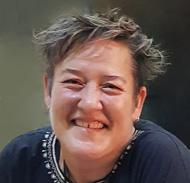
Presentation topic
Turning the tide to ensure that the right to water is realised
Experience
• Alana’s first 10 years in the in the water sector were at the Mvula Trust where she provided policy and strategic support to provincial offices and national government to advance rural water and sanitation supply in the newly democratic South Africa.
• Her next decade was spent leading the International Rescue Committee’s Africa programme. She worked with public, private and civil society actors
Professor Hamanth Kasan
Company/Organisation: International Water Association Title: President Elect
sector for the past thirty-five years, locally, continentally and globally.
• He spent ten years in the academic sector and was the Dean of Applied Science at the Natal Technicon.
• He spent 22 years at Africa’s largest water utility, Rand Water and ultimately held the position of General Manager of Scientific Services.
• He is currently independent advisor and consultant on water and sanitation.
Groups, Committees, Boards (Past and Present)
President Elect of IWA (International Water Association), Member of International Programme Committee of Singapore International Water Week (SIWW), Board member and Chair of Strategic Capacity Building Committee: AfWASA (African Water and Sanitation Association), Strategic Advisor to ROCKBlue, Distinguished Fellow of IWA, Honorary Professor: Durban University of Technology.
Alana Potter
Company/Organisation: Head: Research and Advocacy Title: Equality Collective
in Zimbabwe, Mozambique, Ethiopia, Kenya and Uganda to strengthen water, sanitation and governance and accountability systems.
• As the Director of Research and Advocacy at the Socio-Economic Rights Institute of South Africa (SERI), she led a research and advocacy team that undertook legal, policy and social research and advocacy to amplify the socio-economic rights realisation agendas of marginalised people and groups.
• At End Water Poverty, hosted by WaterAid, she led a global civil society coalition of more than 150 civil society organisations in 80 countries that campaigned for the rights to water, sanitation and a safe environment.
• More recently, Lana has led research
training at Human Rights Watch, equipping researchers to investigate and hold accountability for violations of humanitarian and international law.
Groups, committees, and boards (past and present)
African Ministers Council on Water (AMCOW) International Task Force; the Unite Nations (UN) Water Expert Group; the Africa Water Justice Network’s interim steering committee; Water Integrity Network’s Supervisory Board; Accountability for Water’s global advisory group; Sanitation and Water for All’s grants committee; the steering committee for the Public Interest Law Gathering; the International Covenant on Economic, Social, and Cultural Rights (ICESCR CSO) Coalition.
32 MAY/JUNE 2024 KEYNOTE SPEAKER PROFILES

Presentation topic
How can we improve water governance from a transdisciplinary regulatory perspective
Experience
• Professor Feris has 28 years of experience as an established scholar with international standing and commendable scholarly work with eight years of her experience at a senior management level.
• Prior to holding her current position at the University of Pretoria, Professor Ferris has had numerous leadership roles at the University of Cape Town
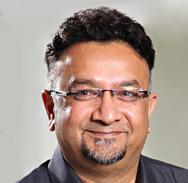
Presentation topic
You, me and SANITI – sharing a journey of sanitation disruption
Experience
• He is the executive manager of the key strategic area of Water Use and
Professor Loretta Feris
Company/Organisation: University of Pretoria
Title: Vice Principal
(UCT). She was the Deputy ViceChancellor of Transformation, Student Affairs and Social Responsiveness, and held two positions within the Faculty of Law – Director of the Institute of Marine and Environmental Law and Director of Research.
• From 2004 to 2009, Professor Feris was Associate Professor of Law and Programme Manager of the International Trade and Investment Law in Africa programme at the University of Pretoria.
• She was involved in several roles at the Washington College of Law, American University, Washington DC in the United States of America (USA).
Groups, Committees, Boards (past and present)
International Union for the Conservation
of Nature (IUCN) Academy for Environmental Law where she has also served as a committee member in the Teaching and Training Committee and was requested to serve in a task team that was exploring innovative teaching methodologies for Environmental Law. She has served as an expert in the United Nations Environment Programme (UNEP) Montevideo process, focusing on the development of environmental law at a global level. She was one of two lead academics for the development of a global Curriculum on Compliance and Enforcement of Multilateral Environmental Agreements, commissioned by IUCN and UNEP. Professor Feris serves on the board of Biowatch and chairs the Board of Natural Justice, both civil society organisations with a strong focus on environmental justice.
Jayant Bhagwan
Company/Organisation: Water Research Commission (WRC)
Title: Executive Manager: Water Use & Waste Management
Waste Management at the WRC, which focuses on the management of water and wastewater in the domestic, mining and industrial sector.
• He continues to be actively involved in a broad range of areas in the field of water supply, wastewater and sanitation, with current focus being on sanitation technologies for the future, technology innovation and application, social franchising of operations and
maintenance, conduit hydropower, benchmarking, reuse and reclamation of effluents.
• Jayant has been the founding member of the Faecal Sludge Management Alliance and serves on the Supervisory Board, as well as founded the International Water Association’s Non Sewered Sanitation (IWA-NSS) Specialist Group of which he is the Chair.
MAY/JUNE 2024 33 KEYNOTE SPEAKER PROFILES

Presentation topic
Governance: Focusing on effectiveness and efficiency to turn the tide
Experience
• Nonhlakanipho Tau is a professional civil engineer with vast experience in management of infrastructure in the public sector and state-owned entities.
• Her latest interest is on aligning
Nonhlakanipho Tau
Company/Organisation: MISA (Municipal Infrastructure Support Agent)
Title: Director: Infrastructure Assessments & Analysis
governance and service delivery through utilising quantifiable data in decision making.
• She was a water engineer for the Department of Cooperative Governance and Traditional Affairs (COGTA) in Kwa-Zulu Natal.
• Nonhlakanipho holds a master’s degree in Civil And Earth Resources Engineering majoring in hydrology and water resources at Kyoto University Japan. She also holds a Post Graduate Diploma in Environmental Engineering from Wits University and
a Management qualification from Wits Business School and is a certified Project Management Professional.
Groups, Committees, Boards (Past and Present)
Nonhlakanipho has participated in United Nations Educational, Scientific and Cultural Organisation (UNESCO) and Japanese International Corporation Agency programmes under Africa business education. In 2023 she joined KZN delegation for United Nations Water Conference in the United States.
PROVIDER OF SUSTAINABLE WATER SOLUTIONS



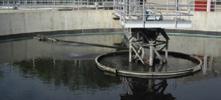
Water and Sanitation Services South Africa (Pty) Ltd (WSSA) is a specialised provider of sustainable water services in Southern Africa. 0ur expertise extends across the full water and wastewater cycle, enabling us to offer:
WATER SUPPORT SERVICES FULL WATER CYCLE MANAGEMENT
• Utility Management
• Audits and Assessments
• Infrastructure
• Rehabilitation
• BIue/Green/No Drop

• Asset Management
• Maintenance
• IT Solutions
• Emergency Water Supply
• Accredited Laboratories
• Drinking Water
• Desalination
• Networks Management
• Wastewater and Re-use
• Rural Water & Sanitation
• Package Plants
• Borehole Water Treatment
For sustainable water solutions, please contact us at: Tel : (011) 209 9200 Fax: (011) 804 5844 Email: info@wssa.co.za
Or visit our website at www.wssa.co.za
KEYNOTE SPEAKER PROFILES
WORKSHOPS AT A GLANCE
Wednesday 12 June
11:30-13:15
Hall 3C
#1 Navigating compliance: understanding the practical implications of DWS Regulation 3630 for process controllers and employers
WISA Process Controllers Division (Melissa Cousins, Dewald van Staden)
MR11AB
#2 Round table discussion on reducing flood risks in Durban
Netherlands Embassy
MR21AB
#3 Sailing International cooperation with Blue Deal
Department of Water and Sanitation and Blue Deal
MR21C
#4 Understanding mining influenced water: an introductory course
WISA Mine Water Division, TUT
MR21DEF
#5 The National Water Sector Scientific Forum Capacitating the Water Sector professionals and stakeholders
SALGA /Dr Esper Ncube
14h30 – 15h45
Hall 3C
#6 SAICE Infrastructure Report Card (IRC) –how make it more relevant for 2027 (water and sanitation)
SAICE
MR12CDE
#7 Partnerships: international drivers and lessons learnt
WRC, SANBI, DSI, WISA, DWS, CSIR
MR11AB
#8 Seminar on the water/green hydrogen nexus
Netherlands Embassy
MR21AB
#3 (continued) Introduction to water and wastewater treatment technologies
Mr Dewald van Staden
MR21C
#9 Understanding mining influenced water: an introductory course
WISA Mine Water Division, TUT
MR21DEF
#10 Strategic capacity building for a future proof water sector
Blue Deal SA Partnership
16:10 – 17:30
Hall 3C
#11 Non-revenue water and water demand management initiatives at Rand Water Rand Water
MR11AB
#12 Wetskills - Finals
Netherlands Embassy
MR21AB
#13 Effective Management and maintenance of waterworks in the municipal environment, and enhancing service delivery by effective project management
Mr Stefanus Weyers
MR21C
#3 (continued) Understanding mining influenced water: an introductory course
WISA Mine Water Division, TUT
MR21DEF
#14 Bridging the academia-industry gaps in the WASH sector: a framework
WISA KZN Branch
MR22DEF
#15 Successes and lessons from method optimisation, from conceptualisation, development, testing, standardisation and ISO 17025 accreditation
WASH R&D Centre
Thursday 13 June
11:00 – 12:45
MR12CDE
#16 How standards can aid in developing resilient sanitation systems in southern Africa
WISA Sanitation Standards
MR21C
#17 Pioneering wastewater based surveillance for communicable diseases in South Africa
National Institute for Communicable Diseases/ Durban University of Technology
14:00 – 15:15
MR12CDE
#15 (continued) How standards can aid in developing resilient sanitation systems in southern Africa
WISA Sanitation Standards
MR21AB
#18 #BreakingSilos - Empowering youth for transformative change
WISA YWP
MR21C
#19 Digital and circular water transformation as part of water service delivery climate responses
WISA Innovation for Water Supply & Sanitaiton/Isle Utilities L
MR21DEF
#20 The Future of water reuse in South Africa
WISA Water Reuse Division/CSIR
15:45 – 17:00
MR12CDE
#21 Procurement strategies for strengthening the adoption of water innovations by the public sector Institutions: The opportunity of non-sewered sanitation
WRC, SALGA, DSI
MR21AB #22 WetsNext – From innovation to implementation
Wetskills Foundation
MR21C
#23 Anaerobic sludge, are we on track, and is it an investment option?
WISA Anaerobic Sludge Division
MR21DEF #24 Development and implementation of water reuse and reclamation compliance legislation framework
WISA Water Reuse Division
Friday 14 June
11:00 – 12:15
Hall 3C
#25 The revised SANS 241: Standards for drinking water quality in South Africa
SANS - Ms Debbie Trollip
MR21AB #26 Water utility best management practiceintercontinental collaborations Umgeni-Uthukela Water
MR21C #27 UNESCO IHP DWS
MR22ABC #28 Does the current regulatory environment achieve the best possible outcome in Small WWTW (<5 ML/d)?
WISA Small WWTW Division Trans-Caledon Tunnel Authority, AHL Water, SALGA
13:30 – 14:45
Hall 3C
#29 National Sanitation Implementation Plan DWS
MR21C
#30 Sustainable wastewater infrastructure and operational expenditure, costing and financing
Umgeni-Uthukela and Prime Africa
MR21AB #31 An integrated water management approach for improved water availability in the SADC Region (and the role of women)
WISA KZN Branch (Mbali)
MR22ABC Mentorship programme
WISA HO
MAY/JUNE 2024 35 WORKSHOPS
ANCHOR SPONSOR
UMNGENI – UTHUKELA WATER

Established in 1974, uMngeni – Uthukela Water is a state-owned entity (SOE) and a water board. Effective from the 1st of July 2023, it operates under its current name after the incorporation of Mhlathuze Water into Umgeni Water.
The entity provides water and related services to other water services institutions and other customers in its gazetted service area of the province of KwaZulu-Natal. KwaZulu Natal straddles a total geographical area of 94 359 km 2 and is home to 12.42 million people and 2.9 million households. The province comprises one Metropolitan Municipality, 10 District Municipalities and 43 Local Municipalities. A total of 14 of these municipalities are Water Services Authorities (direct retail customers) as defined in the Water Services Act.
uMngeni-uThukela is contracted to provide water and/or sanitation services to the following customers:
• eThekwini Metropolitan Municipality;
• iLembe District Municipality;
• Ugu District Municipality;
• Harry Gwala District Municipality;
• uMgungundlovu District Municipality;
• Msunduzi Local Municipality;
• King Cetshwayo District Municipality; and
• Mhlathuze Local Municipality (City of Mhlathuze).
• SIZA Water
To stimulate economic growth within the King Cetshwayo District Municipality, in the Port City of Richards Bay, the organisation will continue to supply water to industries such as Mondi Paper, Richards Bay Minerals (RBM), Hulamin, Mpact, Foskor, Tronox, South 32, Richards Bay Titanium and Wilmar. uMngeni-uThukela Water’s infrastructure assets in support of its bulk water services business comprises:
• Approximately 981 km of pipelines and 53 km of tunnels
• 14 impoundments
• 53 water treatment works
• 1 effluent pump station
• 23 wastewater treatment works
A subsidiary of the uMngeni-uThukela Water (UUW) Group, Umgeni Water Services (UWS) was established in 1997 to hold UUW’s shareholding in the Durban Water Recycling company. It has also won the concession to manage and operate the reuse plant at the Ethekwini Southern Works plant in Durban. Mngeni-uThukela Water intends to be recognised as a strategic and sustainable partner of government, co-creating value through providing bulk water and sanitation services as a catalyst for local economic development and government’s developmental agenda.
Contact details: T: +27 (33) 341 1111
W: https://www.umgeni.co.za/ E: info@umgeni.co.za
PLATINUM SPONSOR
WATER RESEARCH COMMISSION

The Water Research Commission (WRC) was established in 1971 following a period of serious water shortage. It was deemed to be of national importance to generate new knowledge and to promote the country’s water research purposefully, owing to the view held that water would be one of South Africa’s most limiting factors in the 21st century. Today, the primary functions of the WRC include:
• To promote coordination, cooperation and communication in the area of water research
• Establish water research needs and priorities
• Stimulate and fund water research according to priority
• Promote the effective transfer of information and technology
• Enhance knowledge and capacity building within the sector
As a statutory body, the WRC operates under the Ministry of Water and Sanitation.
Today, the WRC is the leading funder of water research in South Africa, and plays a key role in the national and global arena’s key research, development, and innovation (RDI) initiatives.
A cornerstone of the WRC’s approach is collaboration. The Commission partners with academic institutions, government agencies, private sector entities, and community organizations both within South Africa and internationally. This collaborative network ensures that research outcomes are practical, impactful, and aligned with the needs of various stakeholders.
Through its comprehensive and integrative approach, the Water Research Commission significantly contributes to ensuring water security, promoting sustainable development, and enhancing the quality of life for South Africans, while also positioning South Africa as a leader in water research and innovation globally.
Contact details: T: +27 (12) 761 9300 W: https://www.wrc.org.za E: info@wrc.org.za
GOLD SPONSORS
DEPARTMENT OF WATER AND SANITATION

The Department of Water and Sanitation (DWS) is the custodian of South Africa's water resources, responsible for policy formulation and implementation in this sector. Its mission focuses on ensuring all South Africans have access to clean water and dignified sanitation, while promoting efficient water resource management for sustainable development. DWS aims to positively impact the country by being service-oriented, innovative, and committed to sustainable development. It leads the sector, empowering partners with knowledge and capacity to deliver water services effectively.
36 MAY/JUNE 2024 SPONSORS
DWS values its investment in people, emphasizing the importance of its workforce in achieving its goals. While striving to ensure that all South Africans gain access to clean water and dignified sanitation, the department also promotes effective and efficient water resources management to ensure sustainable economic and social development.
Contact Details: T: +27 (0)12 336 7500 W: https://www.dws.gov.za/ | E: customercare@dws.gov.za
INDUSTRIAL DEVELOPMENT CORPORATION (IDC)

Established in 1940 through an Act of Parliament (Industrial Development Corporation Act, 22 of 1940), the IDC s fully owned by the South African Government. The IDC priorities are aligned with the national policy direction as set out in the National Development Plan (NDP), Industrial Policy Action Plan (IPAP) and industry Master Plans. Our mandate is to maximise our development impact through jobrich industrialisation, while contributing to an inclusive economy by, among others, funding black-owned and empowered companies, black industrialists, women, and youth-owned and empowered enterprises. Simultaneously, the IDC must ensure its long-term sustainability through prudent financial and human resource management, safeguard the natural environment, and increasingly position itself as a centre of excellence for development finance. We support industrial capacity development proactively identifying and funding highimpact projects, creating viable new industries, and using diverse industry expertise to drive growth in priority sectors.
Contact Details: T: 0860 693 888 W: www.idc.co.za E: callcentre@idc.co.za
SILVER SPONSORS
VAAL CENTRAL WATER

Vaal Central Water is committed to ensuring sustainable and reliable quality water services. As a bulk water service provider and a stateowned entity, Vaal Central Water has grown to the Free State and Northern Cape areas previously serviced by the former Sedibeng Water after incorporation with Bloem Water from August 2022. Its customer base covers 11 municipalities, 26 mines in both the Free State and Northern Cape Provinces, 6 solar generation plants in the Northern Cape, Kalahari East Water Users Association in the Northern Cape and other stakeholders that cannot be serviced by municipalities within the area of service.
Contact Details: T: +27 (0)51 403 0800 W: www.vaalcentralwater.co.za E: communications@vcwater.co.za
LIQUID SCIENCE

Liquid Science, formed by five South African companies, specialises in centralised sourcing for water-related testing, monitoring, management, telemetry, and communication. Our services cater to diverse industry needs, backed by over 100 years of collective experience. Our national presence includes a team of over 40 qualified professionals, encompassing sales, technical, and application experts dedicated to exceptional service. We pride ourselves in diversifying our products and technologies to provide comprehensive solutions for water sector challenges. Our offerings cover both laboratory and process online applications, supporting various industries and enhancing market growth.
Contact Details: T: +27 (0)12 844 0930 W: www.liquidscience.co.za E: info@liquidscience.co.za
BRONZE SPONSOR BRENNTAG

Brenntag is the global market leader in chemicals and ingredients distribution. We hold a central role in connecting customers and suppliers of the chemical industry. Our two global divisions, Brenntag Essentials and Brenntag Specialties, provide a full-line portfolio of industrial and specialty chemicals and ingredients as well as tailor-made application, marketing and supply chain solutions, technical and formulation support, comprehensive regulatory know-how, and digital solutions for a wide range of industries.
Contact Details: T: +27 (0)10 020 9100 W: https://www.brenntag.com/en-za/
BRONZE & REGISTRATION SPONSOR
SCHNEIDER ELECTRIC

We are leading the digital transformation of energy management and automation. From energy and sustainability consulting to optimising the lifecycle of your assets, we provide services to meet your needs. Our technologies help you become more efficient, reduce costs, and meet your sustainability goals.
Our mission is to be your digital partner for Sustainability and Efficiency. We drive digital transformation by integrating world-leading process and
MAY/JUNE 2024 37 SPONSORS
energy technologies, end-point to cloud connecting products, controls, software, and services, across the entire lifecycle, enabling integrated company management, for homes, buildings, data centres, infrastructure, and industries.
We are the most local of global companies. We are advocates of open standards and partnership ecosystems that are passionate about our shared Meaningful Purpose, Inclusive, and Empowered values.
Contact Details: T: 086 130 0222
W: https://www.se.com/za/en/ E: za-ccc@se.com
DELEGATE BAG SPONSOR
EWSETA
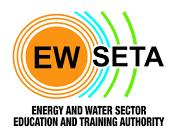
As one of South Africa’s 21 SETAs, the Energy and Water Sector Education and Training Authority (EWSETA) was established in terms of Section 9 of the Skills Development Act (SDA), 97 of 1998, as amended and reports to the Honourable Minister of Higher Education, Science and Technology.
Contact Details: T: +27 (0)11 274 4700
W: https://ewseta.org.za/ E: info@ewseta.org.za
CONFERENCE NOTEPADS SPONSOR
HACH

Hach, a leading global provider of water quality solutions, boasts nearly a century of pioneering advancements in the field. Since its inception, Hach has been committed to supporting customers by delivering innovative technologies that ensure accurate water analysis. Hach gives customers confidence in their water analysis by delivering expert answers, outstanding support, and reliable, easy-to–use solutions. Through its comprehensive range of analytical instruments, services, software, and reagents, Hach plays a pivotal role in safeguarding water integrity across diverse industries in over 100 countries. With a legacy of excellence and a vision for the future, Hach continues to set the standard in water quality management.
Contact Details: T: +27 (0)11 708 3705
W: https://za.hach.com/ E: salesza@hach.com
BRANDED WATER STATIONS SPONSOR WILO

Wilo offers a wide variety of intelligent pumps and systems to make our users’ everyday lives simply more pleasant.
Our energy-efficient solutions are not only ideally suitable for residential, public and commercial properties, but also for water management applications. Wilo products are used in heating, airconditioning, cooling and water supply applications as well as for drainage and sewage.
Contact Details: T: +27 (0)11 608 2780
W: https://wilo.com/za/en/ E: csc@wilo.com
38 MAY/JUNE 2024
SPONSORS

AECI WATER is a leading provider of sustainable water treatment solutions. Our commitment to innovation, safety, and environmental responsibility drives our mission to create a better world through cutting-edge technologies.
We offer tailored water treatment olutions. We understand that water is the lifeblood of most operations. Our mission is to provide customised water treatment solutions across various facets, including surface and underground operations, tailings storage facilities, mineral processing, and refining to alternative water source identification, water reuse and utility water treatment, we enhance operational efficiency while safeguarding equipment integrity.
Contact details: T: +27 (0)11 971 0400 E: aeciwater@aeciworld.com W: www.aeciwater.co.za
AGRI-ENVIRO SOLUTIONS

Agri-Enviro Solutions is a leading supplier of laboratory and scientific analytical equipment throughout South Africa and the SADEC region.
We have been supplying analytical equipment to the environmental, water, research, food, feed and beverage industries since 1982. To the water industry, we provide efficient and automated solutions. We represent, distribute, supply and service the most trusted solutions in the world for water nutrient analysis, Cyanides, Phenols, Mercury, Nitrogen, COD, BOD, SANS-241…
We will also be introducing our recent partnership with the leaders in SPE Automation for environmental pollutants including PFAS.
Contact details: T: +27 12 940 5921 W: www.aesol.co.z E: sales@aelab.co.za
ANATECH

SUPPLYING A WORLD OF SOLUTIONS IN AFRICA. ANATECH CELEBRATES OVER 4 DECADES OF SERVICE TO THE SCIENTIFIC COMMUNITY
Founded in 1982, Anatech has achieved ongoing success over the years through the provision of quality products and service to its customers. Anatech opened its doors with a strong Chromatography focus. The company has grown in response to fulfilling the growing customer needs. Today we have a full staff complement serving customers in the fields of Water Analysis, Petroleum Industries, Academia, Research, Life Sciences, Separation Sciences and Molecular Biology.
Contact details: T: 011 462 6776
W: https://anatech.co.za/ E: sales@anatech.co.za
ANHUI TIANRUN CHEMICALS CO., LTD.

Anhui Tianrun Chemicals Co., Ltd. is a national high-tech enterprise specialising in the production and sales of water-soluble and functional polymer polyacrylamide (PAM).
Its products are widely used in petroleum, mining, water treatment, papermaking, etc. industry.
Tianrun Chemicals attaches great importance to customer needs, and we can provide five series of polyacrylamide products: anionic, cationic, nonionic, amphoteric, and emulsion according to customer requirements.
Contact details: W: http://www.tianrun.com.cn/
AQUASTRONG (SHANGHAI) INTERNATIONAL TRADING

AQUASTRONG was established in the 1990s as a global water pump provider based in Italy. We develop and sell pumps for house, garden, agriculture and commercial applications.
The core values of AQUASTRONG stem from the credibility of its products and relations with its clients. This credibility is evident in the careful control of product standards, reliability, warranty and development. It also embraces a commitment to transparency and honesty in dealing with all stakeholders.
Nowadays AQUASTRONG's strategy enables it to supply the best price/ performance ratio pumps with the process of controlling and monitoring quality starting from R&D, through manufacturing, marketing, sales, and after-sales service.
As a trusted name that is highly appreciated by customers to serve their needs better than similar products available in the market, and is recognised for transparency in business relationships.
Contact details: T: +39 0294 759177 W: www.aquastrong.it E: info@aquastrong.it
AR AFRICA

AR Africa is simply a company of water-passionate people. With over 50 years of combined experience in water and effluent systems ranging from auditing, design, and project management to commissioning and operations. We can add value to all the water treatment products and solutions we offer for Sub Sahara OEMs, system integrators, consultants, operations & maintenance companies and end users. These same clients are working in mining, energy, oil & gas, agriculture, industrial, municipality and even domestic industries. We share as much knowledge and understanding as we can with our clients as we know that water is the basis of all life, the foundation of our societies and a precious, undervalued resource we cannot live without. It is through our partnerships with end
MAY/JUNE 2024 39
AECI
EXHIBITORS
users, clients and world-class suppliers that AR Africa continues to grow each year helping Africa become more water-stable and water-wise each year.
Contact details: T: +27 11 974 0859 W: www.arafrica.co.za E: info@arafrica.co.za
AUTODESK

Autodesk makes software for the people who design and make the world. Autodesk is a global leader in software for architects, builders, engineers, designers, manufacturers, 3D artists, and production teams. Our design and make technology spans a wide range of industries to empower innovators everywhere to solve challenges big and small.
Contact details: W: https://www.autodesk.com/za E: geraldine.clark@autodesk.com
BENTLEY SYSTEMS INTERNATIONAL

Bentley’s commitment extends beyond delivering the most comprehensive and integrated software paired with exceptional service, training, and 24/7 technical support. For over 39 years, Bentley has served the engineers and other professionals responsible for designing, constructing, and operating sustainable infrastructure, essential to the quality of life for everyone, everywhere.
Contact details: W: https://www.bentley.com/
BOSCH PROJECTS

Bosch Projects, part of the Bosch Holdings group, began in South Africa in 1961 and is dedicated to BBBEE development. Operating nationally with offices in major cities and internationally in Kenya, Brazil, and England, Bosch Projects offers consulting engineering solutions in industrial and infrastructure sectors. Their focus spans commercial, industrial, energy, and agricultural projects, including sugar industry equipment design. They provide infrastructure solutions for Africa's needs, such as roads, settlements, and water systems, emphasizing technical expertise within an ISO9001 quality management framework. Committed to social, economic, and environmental considerations, Bosch Projects contributes to Africa and global development.
Contact details: T: +27 (0) 31 535 6000 W: http://www.boschprojects.co.za E: info@boschholdings.co.za
BRENNTAG SOUTH AFRICA

Brenntag is the global market leader in chemicals and ingredients distribution. We hold a central role in connecting customers and suppliers of the chemical industry.
Our two global divisions, Brenntag Essentials and Brenntag Specialties, provide a full-line portfolio of industrial and specialty chemicals and ingredients as well as tailor-made application, marketing and supply chain solutions, technical and formulation support, comprehensive regulatory know-how, and digital solutions for a wide range of industries.
We have more than 17,500 employees worldwide and operate a network of more than 600 sites in 72 countries.
In the field of sustainability, Brenntag pursues specific goals and is committed to sustainable solutions in its own sector and the industries served.
Contact details: T: +27 (0)10 020 91 00 W: https://www.brenntag.com/en-za/
BOCMA

The Breede-Olifants Catchment Management Agency (BOCMA), formed under the National Water Act of 1998, manages water resources in the Breede-Olifants Water Management Area. As part of the Department of Water and Sanitation, BOCMA addresses historical water imbalances for socio-economic development. Its focus includes water resource planning, management, and governance, stakeholder relations, allocation reform, and resource protection.
BOCMA plays a crucial role in processing water use licence applications, supporting South Africa's Economic Reconstruction and Recovery Plan. Significant resources are dedicated to this function. BOCMA's efforts extend to aiding emerging farmers and ensuring a brighter water future, particularly in the Western Cape Province.
Through its positive reputation and technical assistance, BOCMA strives to fulfil its mandate for the benefit of South Africa's populace.
Contact details: T: 023-3468000
W: https://breedegouritzcma.co.za/ E: mmlabateki@bocma.co.za
BVI CONSULTING

Celebrating 57 years of engineering excellence, BVi prides itself on providing professional services in identifying and implementing engineering projects for medium to large corporations, in South Africa and internationally. BVi is once again setting high standards with regard to transformation. We are extremely proud to have achieved a 58% majority black-owned shareholding and the status of a Level 1 B-BBEE contributor
40 MAY/JUNE 2024
EXHIBITORS
yet again. 100% of BVi shares are owned by South African citizens. This makes BVi one of the largest black-owned consulting engineering firms in South Africa. BVi has a management structure that is based on broad shareholding by the owner-managers of our company. This ensures a high level of involvement, for delivering successfully completed projects to our clients.
“Big enough to make a difference, small enough to care”
Contact details: T: 0828878804 W: www.bvi.co.za
CAMBI

Cambi is a global biogas technology and solutions supplier for wastewater treatment plants and anaerobic digestion facilities. Since 1992, Cambi has retained market leadership through continuous innovation and a robust portfolio of proven and patented technologies. With strong project delivery and customer support capabilities, the company has delivered many well-performing installations in 27 countries on six continents.
Cambi’s thermal hydrolysis process increases renewable energy output, reduces operational costs, and minimises greenhouse gas emissions. It is suitable for all biosolids outlets, including land application and thermal processes such as drying, pyrolysis, and incineration. Thermal hydrolysis is compatible with all sludge and waste treatment regulations and easy to integrate at new and existing anaerobic digestion sites.
Cambi is listed on Euronext Growth Oslo, a multilateral trading facility in Euronext, Europe's largest stock exchange platform.
Contact details: W: https://www.cambi.com/
CAMPBELL SCIENTIFIC

Campbell Scientific has provided measurement solutions to benefit the world since 1974. Our solutions deliver information that helps mitigate severe weather casualties; help scientists gather data to assist in the understanding of climate change and other man-made environmental impacts; and support countless organisations, institutions, and national agencies in providing more efficient meteorological and hydrological services to their people. Our instrumentation hardware is known to be the best in the business. Our software services provide an unrivalled level of insight. Our project delivery expertise combines both to deliver a unique end-to-end solution capable of changing the world.
Our products are built to withstand the extremes of the planet from the heights of Mount Everest to the heat of Death Valley. Our products were built to be rock solid.
Contact details: T: +27 21 880 9960 W: https://www.campbellsci.co.za/ E: sales@campbellsci.co.za
CONSULTING ENGINEERS SOUTH AFRICA (CESA)

Consulting Engineers South Africa (CESA) is a voluntary association of Consulting Engineering firms with a member base across the country totalling in excess of 560 companies. CESA is the custodian of the well-being of the industry supported by member firms that employ approximately 19 000 people. CESA members are compelled to subscribe to upholding the integrity of the industry by adhering to a professional code of ethics providing quality and cost-effective professional consulting engineering services.
Member companies offer consulting engineering services that include a comprehensive range of planning, design and project delivery services across all engineering disciplines including Civil, Structural, Mechanical, Electrical, Industrial, and Mining.
The organisation serves as a channel for Clients to address industry concerns while at the same time providing a platform for the sharing of information with the aim of assisting in optimising the planning and delivery of infrastructure projects in the public and private sectors.
Contact details: T: +27 (011) 463 2022
W: https://www.cesa.co.za/ E: general@cesa.co.za
DENSO SOUTH AFRICA (PTY)

Denso South Africa (Pty) Ltd specialise in the manufacture and supply of corrosion and chemical-resistant coatings and linings for the long-term protection of steel and concrete, even in the toughest environments.
The company is at the forefront of innovative corrosion prevention technology, focused on developing an extensive range of bespoke solutions to meet the specific needs of different industries.
The full range of products is manufactured to comply with the strict quality standards of ISO 9001:2015 (quality management standard). The products are designed for longevity, with solutions that when applied correctly can offer up to 30 years of maintenance-free service.
Contact details: T: 031 569 4319
W: www.denso.co.za E: info@denso.co.za
DYNAMIC FLUID CONTROL

Dynamic Fluid Control (Pty) Ltd stands as a premier valve manufacturer, proudly owned and managed by a black leadership team. Committed to local empowerment, we prioritise sourcing and supporting local communities, contributing to economic growth. With a robust engineering and innovation platform, we leverage global expertise from our wholly-owned international operations in South Africa, the USA, Finland, Brazil, and Australia.
MAY/JUNE 2024 41 EXHIBITORS
DFC boasts a proven track record of delivering exceptional valve performance, reliability, and longevity across diverse industries including mineral processing, water management, industrial sectors, agriculture, effluent management, and power generation.
Contact details: T: 010 823 8877
W: www.dfc.co.za E: dfc@dfc.co.za
DEPARTMENT OF WATER AND SANITATION (DWS)

The Department of Water and Sanitation is the custodian of South Africa's water resources. It is primarily responsible for the formulation and implementation of policy governing this sector.
While striving to ensure that all South Africans gain access to clean water and dignified sanitation, the department also promotes effective and efficient water resources management to ensure sustainable economic and social development. We strive to be dynamic, people centred department, leading the effective management of the nation's water resources, to meet the needs of current and future generations.
Contact details: T: 012 336 7500
W: https://www.dws.gov.za/ E: customercare@dws.gov.za
ECOCHEM PUMPS

Ecochem Pumps, founded some 21 years ago, has traditionally specialised in dosing applications representing Milton Roy pumps within sub-Saharan Africa. We have over the years with the addition of strategic staffing and IP been able to extend our specialised offerings to Disinfection becoming the representative for ControlMatik Chlorination equipment for South Africa as well as recently acquiring the Enviro-Cell trademark of OSEC equipment
Apart from our mechanical and electrical engineered solutions and workshops we offer the market nationally, we are proud to have been able to bring some very specialised offerings to the market such as gas odorisation plants, spark and flameproof platinum and gold mining chemical plants as well as being appointed the only certified service centre for Milton Roy Dosing pumps in African.
We have further successfully engaged in water and wastewater maintenance and upgrade projects providing a turnkey solution-based approach to this market.
Contact details:
W: www.ecochempumps.co.za/ T: +27 11 455 5710
E: ecoinfo@ecochempumps.co.za
EDAMS TECHNOLOGY

EDAMS Technology is an international Information Technology company specialising in designing, developing, and supporting industry-specific, extensively functional, and parameterised, fully integrated management systems, committed to solving critical Water and Energy infrastructure challenges for Utilities, Municipalities and Government Departments.
EDAMS Products encompass best business practices and engineering methods, integrating the commercial, technical, and planning functions enabling our customers to meet their client's needs and enhance performance, cost efficiency and sustainability.
EDAMS has six main products that make up the EDAMS suite of software: Utility Billing and CRM, Asset Management, Operations Management, Licensing and Permits, Quality Monitoring and LIMS, and Business Intelligence.
Contact details:
W: www.edams.com
T: +27 11 234 9404
E: info@edams.co.za
ENVIRO OPTIONS

Enviro Options (Pty) Ltd, is a forerunner company that specialises in innovating and providing sanitation solutions that serve both the flushing and non-flushing markets, the Enviro Loo Dry System and Enviro Loo Clear Non-Sewered Sanitation Solution respectively.
We at Enviro Loo are constantly looking at ways to innovate our products and are pleased to announce an exciting addition to our sanitation range. The Enviro Loo Clear Non-Sewered Sanitation System (NSSS) is a new generation, closed circuit, 100% recycling and off-the-grid, FLUSHING toilet system.
The first of its kind in South Africa, The Enviro Loo Clear NSSS is a “Reinvent the toilet” system that treats wastewater and kills pathogens by means of a natural biological process, without the need for sewer connections, continuous water, or electrical mains supply with the take up of the solar option.
Contact details: T: +27(0)11 762 1624 W: www.enviro-loo.com E: info@enviroloo.co.za
ENVIROSAN SANITATION SOLUTIONS

Envirosan Sanitation Solutions is a South African Black Owned Enterprise that provides turnkey solutions for the research, development, manufacturing and installation/construction of a comprehensive range of Safe, Dignified and Sustainable Sanitation Solutions to rural and periurban schools and households throughout the African continent.
42 MAY/JUNE 2024 EXHIBITORS
Since our inception in 2006, we have successfully delivered and installed over two million toilets worldwide. Our mission is to continuously strive to exceed our customers' expectations whilst promoting positive change and improving sanitation standards across the globe.
Contact details: T: +27 31 700 1866
W: https://envirosan.co.za/ E: info@envirosan.co.za
ETHEKWINI WATER AND SANITATION (EWS)

eThekwini Water and Sanitation (EWS) is a service unit of eThekwini Municipality and is responsible for the provision of water & sanitation services to the greater metro area.
In April 2023, EWS was the first to adopt and begin with the implementation of a Turnaround Strategy as part of the National Treasury’s City Support Programme to municipalities.
Since 2006, the WASH R&D Centre has provided the utility with scientific support in their efforts to develop and implement innovative water and sanitation services to the under-served, along with their mission of maintaining cost-competitive waste treatment service to industry and ensuring the health and environmental status of the rivers and beaches.
This year’s stand focuses on past, current and future initiatives which support the strategy and move eThekwini towards becoming Africa’s most liveable city by 2030.
Contact details: T: 031 311 1111
W: https://www.durban.gov.za/pages/residents/ water-and-sanitation-services
E: sizakala@durban.gov.za
EWSETA

As one of South Africa’s 21 SETAs, the Energy and Water Sector Education and Training Authority (EWSETA) was established in terms of Section 9 of the Skills Development Act (SDA), 97 of 1998, as amended and reports to the Honourable Minister of Higher Education, Science and Technology.
Contact details: T: +27 11 274-4700
W: https://ewseta.org.za/ E: info@ewseta.org.za
ERA PIPING

Founded in 1983, China ERA Group is a large-scale group in China, with over 7000 employees.
Plastic piping system products are our main business. We are also involved in solar systems, home electrical appliance switches, home bathrooms, smart equipment, waterproof coating, and engineering services.
We specialise in piping system research, production and sales. Equipped with 10,000 sets of different moulds, with 900 advanced injection and over 210 extrusion machines our annual production capacity is 600,000 tons. We were listed on the Shenzhen Stock Exchange in December 2011.
Contact details: T: +8615067153342
W: www.era.com.cn E: cheer@era.com.cn
ERWAT

As a leader in water care and resource recovery, ERWAT provides sustainable, affordable, quality water care and resource recovery services through partnerships and collaborative initiatives with external role players, utilising smart organisational practices.
E e-owned entities, as well as markets such as mining and minerals, food and beverage and manufacturing.
ERWAT Scientific Services offers a wide range of ISO/IEC 17025 accredited testing methods.
Contact details: T: +27 11 929 7000 W: www.erwat.co.za E: wanda.annandale@erwat.co.za
GCS

Established in 1987, GCS (Pty) Ltd is an independent consultancy offering a range of professional services within the fields of water and environmental sciences.
The GCS Group provides clients with high-quality consulting services through its specialist expertise in water and the environment, drilling, contaminated site management and remediation services.
GCS provides clients with professional and cost-effective services. Our vision is to grow and develop into a consultancy and employer of choice servicing the global market.
GCS is a dynamic, solutions-driven company that adapts quickly to market needs. Employing highly trained specialists, our company culture encourages innovation, creativity and excellence accompanied by professional growth and development.
Contact details: T: +27 11 803 5726
W: https://www.gcs-sa.biz/ Email : Info@gcs-sa.biz
MAY/JUNE 2024 43 EXHIBITORS
GERT SIBANDE DISTRICT MUNICIPALITY (GSDM) WATER QUALITY TESTING LABORATORY

We are excited to introduce our Water Quality Testing Laboratory situated at the N17 corridor in Ermelo. The laboratory was established in 2011 with the ultimate goal of guaranteeing safe drinking water provided to all citizens in line with section 9 (1) of the Water Services Act No. 108 of 1997. The facility is evidence of the vision by GSDM to be ‘A community-driven District of excellence and development’. The laboratory is a SANAS-accredited (ISO/IEC 17025:2017) governmentowned water laboratory in the province. It is equipped with competent scientists. Services provided are Chemical analysis, microbiological analysis, and physical analysis. These are available to all stakeholders and customers. Do contact us for any enquiries.
Contact details: T: 017 801 7143 W: www.gsibande.gov.za E: laboratoryservices@gsibande.gov.za
GLOBAL AFRICA NETWORK MEDIA (PTY) LTD

Founded in 2004, Global Africa Network Media (Pty) Ltd (GAN) is a business-to-business print and digital media company based in Cape Town, South Africa.
GAN produces annual and quarterly print journals, including: A series of 11 annual journals profiling each of South Africa’s nine provinces as business and investment destinations and a national title, South African Business, an annual business and investment guide to the country. Four quarterly titles, including The Journal of African Business – A Guide to business and investment in Africa, Opportunity magazine, a niche business-to-business publication that explores various investment opportunities within southern Africa’s economic sectors, Service magazine focused on matters relevant to all levels of government, and Blue Chip Journal, is the publication of choice for businesses wishing to market their products and services to the financial planning industry. We also distribute two monthly digital newsletters: TradeInvestAfrica and South African Business Highlights.
Contact details: W: https://www.globalafricanetwork.com/ https://www.southafricanbusiness.co.za/ SM: @InvestAfrica | LinkedIn | Facebook

Hach, a leading global provider of water quality solutions, boasts nearly a century of pioneering advancements in the field. Since its inception, Hach has been committed to supporting customers by delivering innovative technologies that ensure accurate water analysis. Hach gives customers confidence in their water analysis by delivering expert answers, outstanding support, and reliable, easy-to-use solutions. Through its comprehensive range of analytical instruments, services, software, and reagents, Hach plays a pivotal role in safeguarding water integrity across diverse industries in over 100 countries. With a legacy of excellence and a vision for the future, Hach continues to set the standard in water quality management.
Contact details: T: +27 11 7083705
W: https://za.hach.com/ E: salesza@hach.com
HALL LONGMORE

A 100 years of steel pipe manufacturing...
Hall Longmore can trace its history to 1924 and is now owned by the South Africa-based Barnes Group of Companies.
To better position the company in terms of BBBEE requirements, Hall Longmore Steel Solutions and Hall Longmore Infrastructure were formed, with Solutions catering for the local pipe retail market and Infrastructure involved in Southern African Infrastructure development projects.
Hall Longmore is recognised worldwide as a leader in the manufacture of electric resistance welded (ERW) and spiral welded (H-SAW) steel pipe and casing.
Hall Longmore’s products are used in a wide range of applications including, the transportation of raw and potable water, gas and petrochemicals, slurries and tailings, piling, structural fabrication, and solar installations.
Contact details: T: +27 (0)11 874 7315
W: www.hall-longmore.co.za E: callum.storar@hall-longmore.co.za
HANNA INSTRUMENTS

Hanna Instruments is a privately owned company specialising in the design, production, and distribution of scientific equipment for a multitude of industries including Laboratory, Food & Beverage, Hydroponics, Aquaculture, Drinking Water, and Wastewater. Our primary focus is on delivering cost-effective, user-friendly testing solutions. Hanna's core principle is to offer easy and accessible testing solutions at competitive prices. We are recognised globally for our expertise in electro-analytical instrumentation.
Our product line includes analytical instruments that can measure various parameters in solutions, such as pH, ORP, EC, ISE, Turbidity, Chlorine, and DO.
44 MAY/JUNE 2024 EXHIBITORS
HACH
These instruments are available in different formats, including benchtop metres, portable devices, testers, and process units. Additionally, we offer Monitors, Dataloggers, Magnetic Stirrers, Photometers (including COD), Thermometers, Refractometers, Spectrophotometers, and Titrators. We also provide specialised product ranges tailored to specific markets, such as the Beer Line, GroLine Range, Marine Line, Pool Line, and Wine Line.
Contact details: W: www.hanna.co.za
HENAN PANDA AUTOMATION

Henan Panda Automation Instrument Co., Ltd, as a subsidiary of Kaifeng City Shengda Water Meter Co., Ltd. was founded in 1995. Our factory covers an area of 50,000㎡. The modern production workshop is together with advanced production equipment, calibration equipment, testing equipment, etc. We can satisfy your requirement for many types of water meters and flow meters. At present our company's production capacity is 30000 sets of flow meters and more than 3000000 water meters. Our main products include many types of water meters and flow meters. Each year we export a lot around the world.
Contact details: T: 008618537372868 W: www.sdflowmeter.com E: admin@henanpanda.com
HEWI-AFRICA

Hewi-Africa is the OEM media supplier for the water/wastewater treatment, agriculture, cooling towers, and rainwater harvesting sectors. Specializing in the supply of plastic products and media for various industries, including municipal, residential, mining, industrial, and commercial applications, we offer a comprehensive product range. Our offerings include filtration media, bio-media, lamella packing media, and custom-designed plastic components. We pride ourselves on delivering high-quality, durable solutions tailored to meet the specific needs of our diverse clientele. Whether you require standard products or bespoke solutions, Hewi-Africa is dedicated to providing innovative, efficient, and cost-effective products to support your operational success.
Contact details: T: +27 11 745 5500 W: www.hewi-africa.co.za E: kg@hewi-africa.co.za
ZEDA CHEM CO., LTD.

ZEDA CHEM is a professional chemical exporter focusing on water treatment chemicals including Calcium Hypochlorite & Trichloroisocyanuric acid (TCCA), and SDIC.
The products are internationally accepted, and widely used in swimming pools, hospitals and other public places, as well as aquaculture and the textile industry. We export to more than 50 countries and regions such as America, Europe, Asia and Africa. Many of our products are allowed to be sold in supermarkets in several developed countries.
Working with us means
Reliable professional and competitive exporter of water treatment chemicals, flexibility and expertise to cater to a range of supplier and customer requirements for product, logistics and servicing, strong import and export capabilities, including documentation handling, and a strong focus on business development.
Contact details: T: 0731-82294518 W: www.zedachem.com E: chem7@zedachem.com
IDEXX

IDEXX Water is the global leader in water microbiology, providing tests that ensure the safety of drinking water and other water supplies for over two billion people in 100 countries around the world.
Contact details: W: https://www.idexx.com/en/water/ E: water@idexx.com
INDUSTRIAL DEVELOPMENT CORPORATION

The Industrial Development Corporation (IDC) of South Africa, established in 1940, operates under government ownership. It aligns its goals with national policies such as the National Development Plan (NDP) and Industrial Policy Action Plan (IPAP).
The IDC focuses on job-rich industrialisation, supporting blackowned and empowered businesses, women, and youth enterprises. It emphasises sustainable financial and human resource management, and environmental stewardship, and aims to become a development finance leader. The IDC identifies and funds impactful projects, fosters new industries, and supports priority sectors to generate jobs, promote entrepreneurship, and uplift communities.
It funds industrial projects, encourages partnerships, and fosters regional economic growth, contributing to South Africa's industrial capacity and development goals.
Contact details: T: 0860693888 W: www.idc.co.za E: callcentre@idc.co.za
IFAT AFRICA

IFAT Africa is the ultimate platform to showcase technologies and solutions for water, sewage, refuse and recycling for the sub-Saharan Africa market. The trade fair is the gateway for international companies to the African market and for African enterprises to the global market, connecting key industry players with senior buyers and decision makers in the region.
Contact details: W: https://ifat-africa.com/en/trade-fair/
MAY/JUNE 2024 45 EXHIBITORS
HUNAN
INFRASTRUCTURE

Infrastructure News is a leading media brand that brings together communities from the water and sanitation, roads and bridges, energy, telecommunications, geotechnical and waste management sectors in Africa.
WATER AND SANITATION

Water & Sanitation Africa Magazine publishes content dealing with the supply, governance, financing, treatment and measurement of water and sanitation in southern Africa. It is the official magazine of the Water Institute of Southern Africa (WISA).
Contact details: T: +27 83 433 4475
W: www.infrastructurenews.co.za/
E: kirsten@infrastructurenews.co.za
IKUSASA

The Ikusasa group of companies, Ikusasa Water, Ikusasa Chemicals, Ikusasa Projects and Ikusasa International are proudly African solutions companies ready to lead in innovation, improved logistic solutions for the continent and derive new sustainable products in committing to leaving the earth in a better state.
Ikusasa Water: mobile/skid mounted/ containerised plants and fixed installations. service and maintenance contracts with water production. plant capacities range from 20 kℓ/day to 50 000 kℓ/day. rapid deployment for emergency water supply solutions, turnkey longterm solutions.
Ikusasa Chemicals: creating better solutions for customers to enable them to focus on core output targets. trading, distribution, custom blending, and inventory management by being the most cost-effective commodity trader.
Ikusasa International: African and international business development for both chemicals and water businesses. specialising in international commodity and speciality trading desk accreditations & technologies.
ISO 9001:2015 Certification
Contact details: T: +27 21 851 6700
W: www.ikusasa.co.za E: info@ikusasa.co.za
IX ENGINEERS

Our passion is to design and advise on infrastructure development projects that enable the creation of the future of life. Simply put; we get excited at carving-out business driven solutions that have a direct and positive impact on humanity. Our DNA, which is distinctly African, is harnessed by the concept of Ubuntu – an African proverb meaning “I am because you are.” Ubuntu embraces the idea that humans cannot exist in isolation and that we depend on connections, community, and caring. We cannot be without each other.
Contact details: T: 012 745 2000
W: www.ixengineers.co.za E: info@ixengineers.co.za
JOJO AND CALCIMITE

As an on-site sanitation solutions company our core business is the provision of solutions to treat wastewater safely and effectively, for reusing purposes or to replenish aquifers. We protect a precious, life-giving resource and further advance water security in order to help safeguard the well-being of individuals, their communities, and the environment.
Contact details: T: 012 742 0900
W: https://calcamite.co.za/ E: sales@calcamite.co.za
KAIFENG SHENGDA WATER METER CO., LTD.

Kaifeng Shengda Water Meter Co., Ltd. was founded in 1995. The company headquarters is located in Kaifeng City, Henan Province which is a place of meter base. The company is a high-tech enterprise which focuses on meter R&D, production and calibration, marketing and sales etc. In recent years, the company have got "CE" "MID" "CMMI3" "ISO9001" "ISO14001" "ISO45001" etc. Up to now, the company's products have been exported to many countries around the world such as the United States, Russia, Indonesia, Angola, Canada, Australia, Brazil, the Netherlands, Thailand, Vietnam etc. We have agents in Indonesia, Angola etc. We have exported to more than 120 countries around the world.
Contact details: T: 008618537372868
W: www.shengdawatermeter.com E: sales02@kfzhyb.com
KLORMAN SOLUTIONS

Klorman Solutions, a division of Control Chemicals (Est 1971), is a South African Manufacturing Company. With our advanced technology, we are
46 MAY/JUNE 2024 EXHIBITORS
NEWS
a global leader in the chlorine-based disinfection market, which includes: Emergency, potable and wastewater, industrial hygiene, food security, environmental hygiene, as well as pre-and post-harvest applications.
Contact details:
W: https://klorman.co.za/
T: (+27 11) 262 0346
E: info@klorman.co.za
KSB PUMPS AND VALVES

KSB is one of the world’s leading suppliers of pumps and valves and related services. The company is represented in South Africa since the early 1900 by agents. In 1959 KSB Pumps (SA) was established with the objective to be closer to the customer by having strong local sales, operations and service. KSB in South Africa is proud to have achieved a B-BBEE Level 1 status.
Contact details:
W:https://www.ksb.com/en-za
T: +27-11-876-5600
E: support.za@ksb.com
LEBALELO WATER USER ASSOCIATION

Lebalelo is a Water User Association, with members composed of both the commercial mining sector and the Department of Water and Sanitation. The Association was established in 2002 to supply bulk raw water to both the mining sector and communities in the Eastern Limb of the Bushveld Igneous Complex in Limpopo South Africa. Through our purpose of 'Improving Lives through Water' we aim to be a strategic water management collaborator and catalyse sustainable socio-economic development in the region where we operate.
Contact details: T: 012 348 4654 W: https://lebalelo.co.za/ E: info@lebalelo.co.za
LEPELLE


Contact details: T: 015 295 1800
W: www.lepellewater.co.za E: information@lepelle.co.za
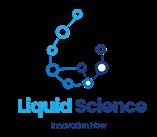
Liquid Science, formed by five South African companies, specialises in centralised sourcing for water-related testing, monitoring, management, telemetry, and communication. Our services cater to diverse industry needs, backed by over 100 years of collective experience.
Our national presence includes a team of over 40 qualified professionals, encompassing sales, technical, and application experts dedicated to exceptional service. We pride ourselves on diversifying our products and technologies to provide comprehensive solutions for water sector challenges. Our offerings cover both laboratory and process online applications, supporting various industries and enhancing market growth.
We seek partnerships with companies that align with our vision of growth and innovation through mutually beneficial trade agreements. We invite interested parties to visit us at WISA 2024, stands #77 and #9, to explore collaboration opportunities and discover our advanced solutions.
LVSA

LVSA, initially an importer and distributor of industrial valves, became Africa's largest stockist. In 2018, recognising the need for local valve manufacturing, LVSA embarked on establishing its manufacturing facilities in South Africa. With a vast land area and distribution centres across Africa, LVSA ensures efficient nationwide delivery.
The company aims to be Africa's premier valve manufacturer, adhering to national and international standards. Their mission emphasises designing, manufacturing, and marketing quality products at competitive prices while embracing new technologies. LVSA prioritises community growth, offering skills training and communitybased outreach programs. With a focus on quality control and a wide product range catering to industries like water, oil and gas, power, and petrochemicals, LVSA is recognised for its consistent quality and reliability.
LVSA Group is proud to be a 100% local manufacturer, a 100% blackowned company with a Level 1 BBBEE company in South Africa
Contact details: T: +27 31 054 7650 W: https://lvsagroup.co.za/ E: kznsales@lvsagroup.co.za
MAY/JUNE 2024 47 EXHIBITORS
SCIENCE
LIQUID
KALOOLA

Kaloola is a pioneering provider of sustainable sanitation solutions, formerly known as Kalula, dedicated to addressing water scarcity challenges and enhancing sanitation standards worldwide. With a core focus on dedication and innovation, Kaloola leads the sanitation industry, transforming hygiene and environmental responsibility. Their mission is to ensure sanitation equality through safe, dignified, and inclusive toilet services, contributing to environmental improvement. Kaloola aims to be the preferred service for underserved communities, offering high-quality, affordable waterless-flush toilets. Key offerings include home toilet solutions prioritising sustainability, and commercial toilet trailers setting new standards for convenience and hygiene. Core values revolve around safety, sustainability, dependability, innovation, accessibility, and comprehensive solutions, all while prioritising convenience and eco-friendliness in sanitation practices.
Contact details: T: 0840184118
W: https://www.kaloola.co.za/ E: eben@kaloola.co.za
MAGALIES WATER

Magalies Water is one of the 7 water boards in South Africa mandated to provide bulk water and sanitation services. The Board provides potable water to municipalities, mines and other private consumers within, but not limited to North West, Limpopo and Gauteng provinces. Magalies Water is an organ of the state reporting to the Minister of Water and Sanitation and currently stretches over the Pienaars and Crocodile Rivers which are the two major catchment areas. With a total staff complement of +- 700, Magalies Water owns and operates four water treatment plants, namely, Vaalkop (Rustenburg), Klipdrift, Wallmansthal and Cullinan (Pretoria) with a combined capacity of 340Ml/d, as well as a state-of-the-art scientific services laboratory in Brits.
Contact details: T: 014 597 4636 W: www.magalieswater.co.za E: info@magalieswater.co.za
MATIAFRICA

MatiTech stands at the forefront of revolutionising water treatment. Our expertise lies in crafting bespoke, site-specific water treatment solutions for diverse applications, ranging from potable water treatments to agricultural and industrial water treatment needs. With a commitment to sustainability, MatiTech stands out for applying cuttingedge technologies, to promote decarbonisation. As the exclusive distributor in Sub-Saharan Africa for the groundbreaking HPGen technology, the world's first onsite commercially viable Hydrogen Peroxide generator stands at the heart of MatiTech’s solutions. This
scalable and versatile technology caters to industrial and municipal water treatment needs, eliminating the reliance on external chemical suppliers and hazardous chemical handling. Coupling the HPGen technology with world-leading UV systems from UltraAqua, MatiTech is positioned as an innovative technology leader in Africa. Driven by a passion for transforming the water treatment landscape in Africa, MatiTech is an architect of sustainable change and is committed to innovation and sustainability.
Contact details: W: https://www.matitechafrica.com/ E: info@matiafrica.com
MEB

MEB is part of a global group operating in Africa since 2010 and in Europe, and the Middle East since 2000, providing effective solutions, an integrated range of professional services and turnkey projects in the fields of water, power & energy, telecommunications, and oil & gas.
Water remains a precious commodity in water-scarce Southern Africa and effective solutions to water scarcity include water reuse, consumption monitoring and control, and leak detection.
MEB, introduces a smart, innovative, energy-efficient, and decentralised, and cost-effective solution for wastewater, the membrane aerated biofilm reactor (MABR) technology. At the heart of the MABR process is the module that passively delivers oxygen directly into the wastewater reducing aeration energy use by up to 90%. This solution is known for its highly efficient biological nutrient removal and consistent production of high-quality effluent. MEB introduces WASENS leak detection and prevention systems that offer 24/7 full monitoring & control of water consumption, leak detection and prevention, and enables protection from major water damage.
Contact details: T: +27 (31) 100 1200 W: www.meb.sg E: info@meb.sg
MERCK LIFE SCIENCES

Science is at the heart of everything we do. It drives the discoveries we make and the technologies we create.
The passion of our curious minds makes a positive difference to millions of people’s lives every day.
In Healthcare, we discover unique ways to treat the most challenging diseases, such as multiple sclerosis and cancer. Our Life Science experts empower scientists by developing tools and solutions that help deliver breakthroughs more quickly. And in Electronics, we develop science that sits inside technologies and changes the way we access, store, process, and display information.
Everything we do is fuelled by a belief in science and technology as a force for good. A belief that has driven our work since 1668 and will continue to inspire us to find more joyful and sustainable ways to live.
Contact details: W: www.sigmaaldrich.com
48 MAY/JUNE 2024 EXHIBITORS

Metrohm is the world's leading supplier of analytical equipment for ion analysis, with a comprehensive product range including pH/ conductivity/ion meters, electrodes, liquid handling dosimats and dosinos, potentiometric and Karl Fischer titrators, ion chromatographs, online analysers, near-infrared spectroscopy systems, handheld Raman spectroscopy (MIRA), rancimats, voltametric analyser, electrochemistry research instruments, and portable potentiostats.
Headquartered in Johannesburg with regional offices in Cape Town and Durban, Metrohm SA offers expert advice from trained analytical chemists and superior after-sales support with factory-trained engineers. We proudly serve industries such as water treatment, mining, petrochemical, chemical, pharmaceutical, food and beverage, academia and more. Metrohm SA is also the exclusive representative for Milestone SRL instruments and services
Contact details: T: +27 11 656 1918 W: https://www.metrohm.com/en_za
MICROSEP

Microsep is a leading supplier of analytical, laboratory and weighing instrumentation in southern Africa and sub-Saharan Africa. We partner with METTLER TOLEDO to provide the sale and support of high precise measurement instruments.
Laboratory Weighing Solutions
Laboratory weighing products include moisture analyzers and a selection of analytical, precision, ultra- and microbalances, designed to support water analysis applications across various industries.
Analytical Instruments
Our comprehensive range of analytical instruments offers advanced solutions that significantly enhance water analysis processes. Products include automated titrators, density and refractometers, pipettes, pH meters, UV/VIS spectrophotometers, melting, dropping/softening point apparatus, thermal analysers and powerful data management software, designed to optimise laboratory workflows and ensure quality control processes.
Expert sales and support
Our team of specialists is available to assist you with sales, service, and support of all the products we supply, ensuring you receive expert guidance every step of the way.
Contact details: T: + 27 087 092 7300
W: www.microsep.co.za E:: info@microsep.co.za

Msinsi Holdings is a wholly owned subsidiary of Umgeni-uThukela Water mandated to manage the water resources of uMngeni-uThukela Waterowned Dams and the Dams that uMngeni-Uthukela Water manages on behalf of the Department of Water and Sanitation. Effective management of the water resource contributes significantly to the value chain of water and service delivery, It is achieved by the below activities such as Biodiversity management, Pollution control Management which involves Alien plant eradication and waste management.
Contact details: T: 0317657704
W: www.msinsi.co.za E: anele.ngcobo@msinsi.co.za
NCP

The business was established in 1942 and is a manufacturer and seller of base chemicals and is South Africa’s largest manufacturer of chlorine, caustic soda, Chlor-Alkali related products as well as the ultra floc coagulant range.
Our company primarily targets markets in the water treatment (potable and effluent), mining, local FMCG, plastics, pulp and paper, general trade and the chemical industries.
In addition, our business sells its chemicals and services to a diverse range of overseas markets. As a chemical producer we are dedicated to being the market leader in providing quality products and services, which meet or exceed the expectations of our customers.
Our company's head office and main plant is situated in Chloorkop, Kempton Park with a site at Cato Ridge, KwaZulu Natal. We also have a depot in Bloemfontein, Free State and Atlantis, Western Cape.
Contact details: W: www.ncp.co.za E: ncpinfo@ncp.co.za
N&Z INSTRUMENTS

N&Z is a leading supplier of Process instrumentation and Analytical instruments and systems with over 70 years experience. Our supply includes flow, pressure, level, analyzers, telemetry, data loggers, water demand management and Automatic Meter Reading (AMR).
Our services are used in virtually every industry and utility throughout Southern Africa. There is wide demand for our Water Management System. This consists of battery powered flow meters and data loggers integrated into our data analysis and presentation software. This system delivers water metering, water demand and water quality information to more than 75 enterprises. Our customers particularly like our turnkey
MAY/JUNE 2024 49 EXHIBITORS METROHM
MSINSI
solution including hardware, software, installations, commissioning and maintenance.
Contact details: T: 011 435 1080 W: www.nz.co.za E: info@nandz.co.za
ODOUR CONTROL SOLUTIONS GROUP

Welcome to The Odour Control Group of Companies, where innovation meets experience in air treatment technology. We are committed to improving your environment by offering complete odour control systems thereby ensuring total odour control.
Since our establishment in 1999, we have designed, manufactured and installed cutting-edge odour control systems. As a leader in environmental solutions, we pride ourselves in our long-standing relationships with international technology providers and local partners, guaranteeing our clients access to the most advanced and effective solutions available.
Our expertise lies in providing complete, custom-made systems that encompass everything from engineered treatment plants to energyefficient ducting networks and durable odour source covers.
From innovative design to seamless installation and reliable maintenance, we are your partner in creating a better environment for all. Join us in our journey towards a greener tomorrow. Together, we can make a lasting impact on the world we share.
Contact details: T: (012) 111 0837 W: www.odorcure.co.za E: sales@odorcure.com
PROTEA CHEMICALS

Protea Chemicals is a member of the Omnia Group, a JSE-listed diversified provider of specialized chemical products and services used in the mining, agriculture, and chemicals sectors. At Protea Chemicals, we don't just offer Water Care Solutions.
We offer innovative solutions for raw water, wastewater, process and effluent water, utility and sewage treatment programmes that go beyond chemicals, focusing on reduction, recycling, and reuse. Our approach highlights the importance of our partnerships with established technology partners and strategic principals, and leverages our core competence to bring you the best.
Our work in the Watercare Solutions sector is not just about business. It's about making a positive difference. Every day, our solutions positively impact more than 100 million Africans, providing safe drinking water and effective sanitation for all. This is our mission, and we're proud to be a part of it.
Contact details: T: +27 11 821 3300 W: www.proteachemicals.co.za E: www.proteachemicals.co.za

Rand Water is the largest bulk water utility in Africa and is one of the largest in the world, providing bulk potable water to more than 11 million people in Gauteng, parts of Mpumalanga, the Free State and North West – an area that stretches over 18 000 km2.
Our success is based on the same pioneering spirit that lead to the growth of the City of Johannesburg, the same spirit has driven Rand Water’s growth in terms of infrastructure and it has earned a global reputation of providing world-class quality water and ranks amongst the best on the world.
We operate thirteen tertiary pumping stations and 60 strategically located service reservoirs and secondary booster stations; as well as multibillion Rand regional pipeline network of approximately 3500km.
Contact details: T: 080 10 10 60 W: www.randwater.co.za E: customerservice@randwater.co.za
RHDV

Royal HaskoningDHV is an independent company founded in the Netherlands in 1881, with offices in South Africa since 1922.
The company focuses on integrating engineering, design, consultancy, software and technology to deliver more added value for clients. Through our mission – Enhancing Society Together, we take responsibility for having a positive impact on the world and contribute to UN Sustainable Development Goals.
We help governments and organisations make the transition to smart and sustainable solutions to solve some of the world’s biggest challenges related to the built environment. Through our mission Enhancing Society Together, we strive to ensure we make a positive impact on communities around the world.
Contact details: W: https://www.royalhaskoningdhv.com/en/markets/water https://www.royalhaskoningdhv.com/ E: info@rhdhv.com
RHEOCHEM

Rheochem is a manufacturer and supplier of effective and high-quality chemicals, all supported at the point of end-use by a professional technical service. Rheochem chemicals can be used for conventional water treatment (coagulants and flocculants), Reverse osmosis (antiscalants; biocides and specialised cleaners), general factory use
50 MAY/JUNE 2024 EXHIBITORS
RAND WATER
(cooling and boiler water treatment chemicals; wastewater treatment/ recycling chemicals) and municipal wastewater treatment (sludge dewatering flocculants and bio-augmentation products)
Contact details: T: +27 31 700 3700
W: https://rheochem.co.za/ E: gen@rheochem.co.za
ROCH

At Roch Distributors, the exceptional products we stock represent the pinnacle of technological advancements in water treatment technology. Our world-class brands offer a range of products, including membranes, membrane housings, filters, Continuous Electrodeionisation (CEDI), plugand-play skid-mounted plants, and more.
We’ve brought some exciting innovations to the African market for the first time. Our long history of operating across the continent means we have a solid network and supply chain, enabling our products to reach the furthest corners, safely, and on time.
By partnering with trailblazing brands in global water treatment, we’re helping to tackle these challenges by supplying the best-in-class products across Africa.
We not only supply these world-class brands but tailor-made solutions for our customer’s problems, utilising our comprehensive product portfolio and partnerships with technical experts.
Contact details: T: 010-143-7532
W: www.roch.co.za E: info@roch.co.za
ROTOCARB

Rotocarb is a proudly South African business and leading producer of highquality Activated Carbons. Through utilising a sustainable carbonaceous source, Macadamia Nutshells, we have developed a new range of Granular and Powder Activated Carbons. Our products assist multiple industries in achieving the health, safety and environmental regulatory standards in pursuit of global sustainability and technological development. Rotocarb, with its autogenous plant and innovative technology, is leading the way with an energy-efficient and environmentally friendly manufacturing process, producing proudly South African-made Activated Carbons.
Contact details: T: (+27) 10 300 6235 W: www.rotocarb.co.za E: sales@rotocarb.co.za
SARTORIUS

Although well known as a leading international pharmaceutical and laboratory equipment supplier, Sartorius is actually working with and for a wide range of customers across practically every industry. With innovative and intuitive products and solutions, we help increase efficiency and productivity whether in routine or complex lab processes or industryspecific workflows.
Count on our support in diverse applications across a broad range of technology-intensive industries, such as the food and beverage, automotive, chemical, environmental testing, medical devices, and paint coating industries.
We have 150 Years of Proven Performance in Routine Lab Workflows so you can work with confidence, and get peace of mind.
Whatever the focus of your laboratory work, both in research and quality testing applications, reliable, reproducible and accurate data is key. In many workflows, the quality of results is dependent upon efficient, errorfree sample and solution preparation. With a comprehensive offering of high performance instruments, consumables and services, we provide the tools that give you confidence in your results.
For a faster time-to-result, learn more about our portfolio with solutions for weighing, pipetting and dispensing, filtration, microbiological testing and water purification.
Contact details: T: +27 11 315 5444 W: www.sartorius.com E: Info.SouthAfrica@sartorius.com
SOUTH AFRICAN WATER WORKS

South African Water Works (SAWW) is a proudly South African company that manages two 30-year water concessions that are in Ballito (Siza Water) and Mbombela (Silulumanzi), delivering quality and reliable utility services to our communities. We have a proud track record of working as a strategic partner with all stakeholders to improve quality of life.
Siza Water (RF) (Pty) Ltd
Siza Water (RF) (Pty) Ltd is the water service provider of the Dolphin Coast in KwaZulu-Natal, South Africa, founded in 1999 and based in Ballito. The company operates under a 30 Year Concession Contract with the Ilembe District Municipality.
Silulumanzi (RF) (Pty) Ltd
On a daily basis, Silulumanzi provides delivery of approximately 120 million litres of safe drinking water to satisfy the thirst and needs of approximately 400,000 people. Silulumanzi has been entrusted to render water services to the City of Mbombela under a 30-year concession contract.
Contact details: T: 032 946 7207
W: www.saww.co.za E: info@saww.co.za
MAY/JUNE 2024 51 EXHIBITORS
SEAPRO

We are leading the digital transformation of energy management and automation. From energy and sustainability consulting to optimising the lifecycle of your assets, we provide services to meet your needs. Our technologies help you become more efficient, reduce costs, and meet your sustainability goals.
Our mission is to be your digital partner for Sustainability and Efficiency. We drive digital transformation by integrating world-leading process and energy technologies, end-point to cloud connecting products, controls, software, and services, across the entire lifecycle, enabling integrated company management, for homes, buildings, data centres, infrastructure, and industries.
We are the most local of global companies. We are advocates of open standards and partnership ecosystems that are passionate about our shared Meaningful Purpose, Inclusive, and Empowered values.
Contact details: T: 086 130 0222 W: https://www.se.com/za/en/ E: za-ccc@se.com
SEPARATIONS

Promolab (Pty) Ltd was founded by Paul Queisser and started trading as Separations on 1 September 1989 to serve South African scientists with a highly focused, innovative and synergistic line of chromatography supplies.
He identified the need for this service during his previous involvement as founder and director of Saarchem (Pty) Ltd, South Africa’s first comprehensive laboratory chemicals manufacturer since 1977.
Paul set out to bring the most complete and high-quality combination of chromatography consumables to South African scientists possible.
Since then, this concept of customer-centric products and exceptional support has continued until today and has been the driving force behind the development of the Sales Divisions that outline the specific workflows we focus on.
Separations continues to drive innovation and value by always attracting the most cutting-edge and innovative suppliers into its portfolio, to deliver spectacular and complete workflow solutions to our discerning customers.
Contact details: T: 011 919 1000 W: https://separations.co.za E: info@separations.co.za

Cla-Val, also known as Clayton Control Valves, has granted Seapro SA the sole authority to produce and assemble control valve components in South Africa, meeting the 70% local content mandates.
Seapro SA boasts a cumulative experience of over 60 years in valve manufacturing and applications for various industries. Cla-Val has been entrenched in Southern Africa for over 50 years, with widespread adoption by city councils, municipalities, and water boards, totalling over 4000 applications. Seapro SA leads the market in South Africa, Namibia, and Botswana, while Cla-Val dominates the SADC region for bulk water and water distribution control valves. With 30 years of experience with the Cla-Val brand, Seapro SA's Field Service Director ensures top-notch service.
Backed by Cla-Val Switzerland, Seapro SA offers products and technical expertise for consulting engineers, contractors, and water management entities, facilitating control valve needs and water management initiatives.
Contact details: T: +27 11 397 1126
W: www.seaprosa.co.za E: debbie@seaprosa.co.za
SHANGHAI KOJIN INDUSTRY CO., LTD

We are a manufacturer of Chlorine Chemicals for Water treatment, such as Calcium Hypochlorite, TCCA, SDIC, PAC, Chlorine Dioxide and BCDMH. We also have business as a trader for Acetic Acid, Ethyl Acetate, N-Butyl Acetate, Phosphoric Acid, Phosphate Products, Sodium Cyanide, Potassium Permanganate and drilling, oil exploitation, and mining chemicals. Our products are sold to East-South Asian, Middle, Africa, Central and South American Caribbean, Australia, the Far East Area and the EU market, and have received admiration from consumers.
Contact details: T: +86-18302186142
W: http://en.kojin.com.cn/ E: lili@kojin.com.cn
SHANGHAI YINTEJI TRADING CO., LTD.

Shanghai Yinteji Trading Co., Ltd. is a wholly-owned subsidiary of Emate(Shanghai) Environmental Technology Inc., Which is a professional national high-tech enterprise that integrates production and sales with research and development. We specialise in a full range of environmentfriendly products, including domestic water purification series, air purification systems, complete sets of industrial water treatment equipment, commercial reverse osmosis systems, public drinking water platforms, central water softeners, and industrial water treatment membrane elements.
Contact details: T: 0086-021-34687930 W: www.shanghaiyinteji.com
52 MAY/JUNE 2024 SCHNEIDER ELECTRIC
EXHIBITORS
Shanxi Ascent Industrial Co., Ltd is a manufacturing leader in Water Pipelines, Sewerage and Pipings for steam, air, gas, oil, etc. from 2010 in China.
Our vision is to become a world-class supplier of pipelines, with our mission to satisfy and resolve all the requirements of our customers. We value respect and hold a customer-centric approach to business.
Contact details: W: http://www.ascentcn.com/ E: info@ascentcn.com
SINOWATEK

At Sinowatek, we use the best available technologies to valorise waste streams. The Fournier Rotary Press® is used for the dewatering of sludge, the Pulse Combustion Drying technology for the drying of viscous mixtures and the powerful disinfectant Innowatech Anolyte®, is used to disinfect water.
We design, build, procure and integrate state-of-the-art technologies and equipment to design and implement “fit for purpose” processes in the drive to improve the environmental and economic performance of our clients.
A critical step in the valorisation of sludge is the dewatering of the viscous mixture, separating the mixture into solids and liquids. Sinowatek represents the Fournier Rotary Press® technology from Fournier Industries in Canada as the most advanced sludge dewatering technology available.
Contact details: T: +27 (0) 83 271 1808 W: www.sinowatek.com E: info@sinowatek.com
TALBOT

With over 35 years of industrial experience across Africa and beyond, Talbot offers a comprehensive suite of water management services. Our expertise ranges from in-house water analytics software as a service (Talbot Analytics) to developing water risk and water security strategies. We design and construct cutting-edge solutions, provide optimization, maintenance, and aftersales support, and operate our own environmental laboratory. At Talbot, we integrate these capabilities to deliver progressive, customized solutions and unparalleled service to meet our clients' unique needs.
Contact details: T: +27 33 346 1444 W: www.talbot.co.za

Trans-Caledon Tunnel Authority (TCTA) is a state-owned entity charged with financing and implementing bulk raw water infrastructure projects. It is an agency of the National Department of Water and Sanitation (DWS), which is responsible for the country’s water resources in respect of usage, equitable allocation and distribution. TCTA assists the government in its pursuit of water security for South Africa and in realising its constitutional obligation of ensuring universal access to this essential resource for all citizens.
South Africa is a water-scarce country, requiring a dedicated focus on ensuring adequate water storage and transfer capacity. To this end, TCTA designs bankable projects, raises funding in capital markets, manages debt and implements infrastructure rollouts.
Contact details: T: +27 12 683 1200
W: https://www.tcta.co.za/ E: info@tcta.co.za
TECROVEER

Revolutionising Water Treatment Since 1976, Tecroveer has established itself as a pioneering force in water treatment, committed to the vision of ensuring children can play in pristine waters and access safe, pure water straight from the tap. As leaders in turnkey water solutions, Tecroveer provides a comprehensive array of services ranging from design and engineering of tailored water treatment systems to civil works, ensuring seamless integration with existing infrastructures. Our expertise extends to commissioning for optimal system performance from the outset, coupled with long-term operations and maintenance for enduring reliability. Additionally, our innovative waste-to-energy solutions exemplify our commitment to transforming waste into valuable resources. Tecroveer also offers streamlined package solutions that encompass every project phase from concept to completion. Join us in our mission to safeguard water for all and build a cleaner, sustainable future.
Contact details: T: +27 (0) 11 752 1191
W: https://www.tecroveer.co.za/ E: tamaras@tecroveer.co.za
UMGENI WATER SERVICES

Umgeni Water Services (UWS), a wholly-owned subsidiary of UmngeniUThukela Water, has been operational since 1997, focusing on water-related investments. Currently, UWS holds an 18.5% stake in Durban Water Recycling. With a revised strategy, UWS aims to establish a learning Academy and bolster Umngeni-UThukela Water's commercial activities and partnerships. Its primary objective is to create business opportunities
MAY/JUNE 2024 53
LTD
SHANXI ASCENT INDUSTRIAL CO.,
TCTA
EXHIBITORS
for the Umngeni-UThukela Water Board (UWB) by forming partnerships with KZN municipalities to enhance water and sanitation access in line with the Department of Water and Sanitation mandate. UWS addresses challenges like finance, non-revenue water, and skills shortages through innovative products, services, and partnerships. Additionally, it plans to secure international grants for non-bankable projects. UWS's secondary goal involves providing technical training through the uMngeni Water Learning Academy, emphasising practical skills development to alleviate the water sector's skills shortage in Southern Africa. The academy will offer specialised training covering various water industry aspects, promoting sustainable water management practices.
Contact details: T: +27 (0)33 3411 111 W: www.@umgeni.co.za E: info@umgeni.co.za
UMNGENI - UTHUKELA WATER

uMngeni-uThukela Water is a state-owned entity (SOE) and a water board that was established in 1974 and effectively from the 1st of July 2023, operates under its current name after the incorporation of Mhlathuze Water into Umgeni Water. The entity provides water and related services to other water services institutions and other customers in its gazetted service area of the Province of KwaZulu-Natal. The entity operates in accordance with the Water Services Act (Act 108 of 1997) and the Public Finance Management Act (Act 1 of 1999), amongst others, and is categorised as a National Government Business Enterprise.
uMngeni-uThukela Water reports directly to the Department of Water and Sanitation (DWS), through the Board (Accounting Authority) and through its functionaries, the Chairperson of the Board and the Chief Executive. The Minister of Water and Sanitation is the Executive Authority for Water Boards.
Contact details: T: +27 (33) 341 1111 W: https://www.umgeni.co.za/ E:
VAAL WATER SERVICES

Vaal Central Water, a bulk water provider, operates under the Water Services Act and Public Finance Management Act. It expanded to the Free State and Northern Cape regions post-merger with Bloem Water in 2022, formerly served by Sedibeng Water. Its clientele includes Mangaung Metropolitan and several local municipalities, 26 mines, 6 solar plants, Kalahari East Water Users Association, and other stakeholders. The entity is dedicated to delivering sustainable, high-quality water services, prioritising reliability across its expansive service area. Vaal Central Water is committed to ensuring sustainable and reliable quality water services.
Contact details: T: 051 403 0800
W: www.vaalcentralwater.co.za E: communications@vcwater.co.za
VEOLIA SERVICES SOUTHERN AFRICA

Resourcing and Transforming Africa, Veolia Services Southern Africa (Pty) Limited (“Veolia”) is the total water, waste and energy solutions company in Africa, offering turnkey value-propositions to the chemical, energy, food and beverage and other industries. Veolia designs and deploys water, waste and energy management solutions which contribute to the sustainable development of cities and industries. Our complementary activities allow Veolia to help develop access to resources as well as preserving and renewing available resources. Veolia’s solutions focus on delivery of essential services for sustainable development on the African continent including improving access to water and sanitation services, ensuring efficient energy supply as well as sufficient waste collection and treatment.
Contact details: T: +27-11-663-3600
W: https://www.veolia.co.za/
WISA (WATER INSTITUTE OF SOUTHERN AFRICA)

WISA aims to inspire every person in Southern Africa to have a passion for water so that we can ensure that water is available for future generations. WISA uphold the values of integrity, professionalism, community, trustworthiness, and innovation.
Our strategic goals are to ensure that all Members experience WISA’s innovative and demand driven value proposition, grow WISA’s strategic partnership with the sector, grow WISA membershi, improve financial sustainability, embed good corporate governance within WISA, and maintain an active role in the discourse of water in public domain.
Contact details: T: 086 111 9472
W: https://wisa.org.za/ E: info@wisa.org.za
WATER RESEARCH COMMISION (WRC)

The Water Research Commission (WRC), established in 1971 under the Water Research Act, emerged amidst water scarcity concerns in South Africa. Initially, water research was limited, lacked coordination, and suffered from insufficient funding.
The WRC aims to rectify these shortcomings by coordinating research efforts, identifying priority areas, and facilitating technology transfer. Today, South Africa still faces water challenges, but the WRC has significantly bolstered the country's water sector capacity and research base. Looking ahead, water issues are expected to escalate, demanding attention to ensure water for all, improve quality of life, and sustain the environment.
54 MAY/JUNE 2024
EXHIBITORS
The WRC anticipates increased demands due to national water legislation and international commitments. As South Africa navigates its role in regional and continental water management, the WRC remains pivotal in addressing evolving challenges and fostering innovative solutions.
Contact details: T: +27 12 761 9300
W: https://www.wrc.org.za/ E: info@wrc.org.za
XYLEM

Water challenges are escalating around the globe, placing people and communities, our environment, and our very future at risk. By 2025, 1.8 billion people will be living in countries or regions with absolute water scarcity. We are a Fortune 1000 global water technology provider with one mission: to help our customers solve water through the power of technology and expertise. Together, we can make water more accessible and affordable, and communities more resilient. Let’s create a world that is more water-secure and sustainable for all. We have the opportunity of a lifetime to solve water. Let’s work together and lead the way.
Contact details: T: +27 11 966 9300
W: https://www.xylem.com/en-za
E: Charmaine.munian@xylem.com
WILO

Wilo offers a wide variety of intelligent pumps and systems to make our users’ everyday lives simply more pleasant.
Our energy-efficient solutions are not only ideally suitable for residential, public and commercial properties, but also for water management applications. Wilo products are used in heating, air-conditioning, cooling and water supply applications as well as for drainage and sewage.
Contact details: T: 011 608 2780 W: https://wilo.com/za/en/ E: csc@wilo.com
ZANA MANZI

Zana Manzi Services (Pty) Ltd, was established in 2005 as a subsidiary of Water and Sanitation Services South Africa (WSSA). Over the years Zana Manzi has built up its own resources while still having the option of accessing WSSA’s resources when the need arises.
Today Zana Manzi Services is a self-sustaining business with almost 20 years of experience in the water services sector. Zana Manzi’s head office is in Woodmead, Johannesburg and regional offices in Empangeni and Cape Town.
Zana Manzi specialises in the management, construction, refurbishment, Operation & maintenance and upgrades of water and wastewater systems. We further provide Blue Drop and Green Drop support services.
Contact details: T: 011 209 9200 W: https://zanamanzi.co.za/ E: info@zanamani.co.za
ZHEJIANG DAYUAN PUMPS INDUSTRIAL CO., LTD.

Zhejiang Dayuan Pumps Industrial Co., Ltd., founded in 1990, is a professional pump manufacturer and solution provider engaged in R&D, manufacture, sales and service. Our products cover 6 categories, 31 series, and more than 2,000 product models, which can be used in various fields such as agricultural irrigation, civilian water supply, industrial applications, municipal water supply and drainage, sewage treatment, and fire-fighting and has exported to 100 countries and regions, such as Southeast Asia, Africa, the Middle East, South America and Europe etc.
Contact details: T: +86-13858638162 W: www.dayuan.com E: paris@dayuan.com
ZHEJIANG HANDE PUMP INDUSTRY COMPANY

Zhejiang Hande Pump Industry Company is a modern enterprise that currently exports 95% of its products all over the world.
We are known for our “HANDURO” product, which is well known in many countries. We manufacture solar water pumps and electric bore pumps. Solar deep well water pumps, solar surface pumps and solar aerator pumps. We are CE and ISO 9001 certified.
If you are interested in any of our products or would like to discuss a custom order, please feel free to contact us. We are looking forward to forming successful business relationships with new clients around the world.
Contact details: T: +86 18958699797 W: www.handuro.com E: hande-sarah@handuro.
MAY/JUNE 2024 55
EXHIBITORS
12 JUNE
CLIPPING NEW EDGES WITH INNOVATION AND TECHNOLOGY
SESSION 1
TOPIC: DRINKING WATER TREATMENT AND RECLAIMED WATER REUSE
SELECTION CRITERIA FOR SOLID-LIQUID SEPARATION PROCESSES - SEDIMENTATION AND DISSOLVED AIR FLOATATION FOR DRINKING WATER
Jessica Tsakani Mhlongo, Simon Muzi Sibiya
Rand Water
Water treatment plants play a vital role in converting raw water from surface sources like lakes and rivers into potable water suitable for daily human use. However, the quality of these water bodies is often compromised by various human activities such as agriculture, wastewater discharge, mining, and climate change. Turbidity, chlorophyll a, and algae levels in raw water are key parameters influenced by these activities, impacting the selection of solids-liquid separation processes like sedimentation and dissolved air flotation.
In the case of the Vaal Barrage Dam, seasonal variations in turbidity and chlorophyll levels are significant due to factors like acid mine drainage and untreated sewage discharge. This study aimed to evaluate the performance of sedimentation and dissolved air flotation methods under these conditions, while assessing the effectiveness of inorganic versus cationic polyelectrolyte coagulants.
Bench-scale experiments simulated water treatment plant conditions using jar testing, with parameters including rapid mixing, coagulation, flocculation, and sedimentation or dissolved air flotation. Results indicated that dissolved air flotation operated optimally with a 12.5% recycle ratio and 550 kPa saturation pressure, achieving turbidity removal of less than 5 NTU. Comparative studies showed that both coagulants effectively removed turbidity, with aluminium sulphate causing significant changes in pH and alkalinity.
Overall, the study suggests that water treatment plants facing similar water quality variations should consider implementing both sedimentation and dissolved air flotation processes in series to ensure effective solids-liquid separation.
INCORPORATING POTABLE REUSE IN BIG SPRING, TEXAS –FIRST POTABLE REUSE SYSTEM IN NORTH AMERICA
Wayne Lem, Elie Achji, Christ van Schaijk Trojan Technologies, London, Canada
The water-scarce nature of South Africa necessitates exploring alternate water sources and optimisation strategies, including water reuse. The practice is common globally and vital for conserving limited water resources. The Colorado River Municipal Water District (CRMWD) in West Texas faced declining drinking water supplies and evaluated various options, leading to the construction of an innovative Raw Water Production Facility (RWPF) to treat wastewater for potable reuse.
The facility utilises advanced treatment methods like microfiltration, reverse osmosis, and UV Advanced Oxidation Process to ensure water purity and safety. The decision to pursue potable reuse was driven by factors such as limited groundwater recharge capacity and unfavourable pumping costs.
By blending treated wastewater with natural raw water, CRMWD avoids constructing exclusive distribution systems and ensures year-
round water availability. This approach serves as a model for South Africa, emphasising the importance of wastewater reclamation and reuse in long-term water resource planning amidst water stress.
REMOVAL OF EMERGING CONTAMINANTS AND HEAVY METALS IN WASTEWATER REUSE FOR POTABLE WATER SUPPLY
Prince Manyepa1, Prof Faizal Bux1, Prof Khalid Muzamil Gani2 , Prof Sheena Kumari1, Prof Mahommed Seyam1, Dr Ismail Banoo3 , Bettina Genthe4
1Civil Engineering and Geomatics, Durban University of Technology, Durban, South Africa, 2Civil Engineering, National Institute of Technology, Srinagar, India, 3Water, Sanitation & Hygiene Research & Development Centre (WASH R&D Centre), Durban, South Africa, 4Department of Microbiology, University of Stellenbosch, South Africa
Wastewater reuse is crucial for addressing water shortages while protecting human health and the environment. The REMIX technology, implemented in Durban by the eThekwini Municipality, combines seawater and wastewater treatment to augment the conventional water supply. The technology comprises advanced treatment units to remove contaminants of emerging concern (CEC) and heavy metals.
The study focuses on evaluating the REMIX technology’s efficiency in producing safe drinking water by assessing the removal and risk of 20 CEC and heavy metals. Samples collected along the REMIX water treatment plant (RWTP) showed high removal rates (>95%) of pharmaceuticals and heavy metals (>90%). The risk quotient calculations indicate the effectiveness of the RWTP in CEC removal, aligning with sustainable development goals.
The study identifies potential persistent, bioaccumulative, and toxic compounds, guiding future monitoring in water treatment plants across South Africa. Overall, the study demonstrates the potential of the REMIX technology in supplying safe drinking water from wastewater recycling, contributing to sustainable development goals.
BUILDING THE WATER360 GLOBAL MAP OF PURIFIED RECYCLED WATER FOR DRINKING AROUND THE WORLD
Danielle Francis, Ben Glickstein
Water Services Association of Australia, Sydney, Australia
The project aims to address community misconceptions about purified recycled water for drinking by providing robust education and engagement strategies. By creating an interactive map showcasing 85+ cities globally exploring, planning, building, or operating potable reuse facilities, the initiative aims to demonstrate the safety and viability of recycled water as a sustainable water source. The methodology involves extensive desktop research, criteria establishment, a global survey, and data gathering from participating cities.
The map allows viewers to explore short stories about each city’s journey with recycled water, fostering understanding and awareness. Despite challenges like spam filters and language barriers, 85 cities have contributed to the project. The map’s strength lies in high accuracy as content is provided by utilities themselves, though completeness may be affected by the inability to contact all relevant places.
The project’s outputs include the interactive map, decadewise representations of potable reuse, and charts depicting the global population drinking recycled water. These resources aim to support water utilities in advocacy efforts and facilitate community understanding of recycled water’s importance for sustainable water supplies. Overall, the initiative seeks to be a comprehensive and valuable resource for water utilities worldwide.
56 MAY/JUNE 2024 SUMMARY OF ORAL PRESENTATIONS
READING THE CHARTS:
EFFECTING RESILIENT PLANNING AND MANAGEMENT IN A CHANGING ENVIRONMENT
SESSION 3
TOPIC: PLANNING AND IWRM
THE EFFECT OF COMPLEXITY ON WATER QUALITY MODELLING PERFORMANCE AND UNCERTAINTY
Mr Joshua Rasifudi
Department of Water and Sanitation, Pretoria, South Africa
The relationship between flow and nutrient levels in South African rivers is complex, influenced by wastewater treatment variability and nonpoint source pollution (NPS) that hasn’t been comprehensively assessed. Hydrological water quality models aid in understanding NPS impacts, yet challenges like data scarcity and model uncertainties persist. This study examines the complexities of water quality modelling and its applicability in decision-making using the Hartbeespoort Dam Catchment as a case study.
The study employs the WQSAM, WRSM, and SWAT+ models, assessing uncertainty through stochastic rainfall generation. Scenarios are tested to understand the implications of reduced or increased return flows on water quality. Findings reveal significant TDS, orthophosphate, and nitrate/nitritenitrogen loads entering the Hartbeespoort Dam from various sub-basins, underscoring the need for effective water resource management. Implications for policy and water management include addressing wastewater treatment plant non-compliance, developing waste discharge standards, setting water quality objectives, and prioritising rehabilitation efforts. Furthermore, the study highlights the need for robust water quality information to guide decision-making, particularly regarding agricultural practices and future development scenarios.
WATER QUALITY MANAGEMENT THROUGH
HAZARD
IDENTIFICATION, RISK ASSESSMENT, AND MULTI-CRITERIA
DECISION ANALYSIS
Zesizwe Ngubane1, Dr Viktor Bergion2, Prof Thor Axel Stenström3 , Prof Ekaterina Sokolova4
1Durban University of Technology, Pietermaritzburg, South Africa, 2Chalmers University of Technology, Gothernburg, Sweden, 3Institute for Water and Wastewater Technology, Durban University of Technology, Durban, South Africa, 4Uppsala University, Uppsala, Sweden
The study addresses the scarcity of research integrating water quality modelling, risk assessment, and stakeholder engagement to prioritise pollution mitigation strategies in catchment areas, particularly in South Africa. Focusing on the uMsunduzi catchment, the research employs a multi-criteria decision analysis (MCDA) framework. It combines water quality modelling with an extensive data review and employs the Soil and Water Assessment Tool (SWAT) to simulate pathogenic E. coli and Cryptosporidium transport. Quantitative microbial and chemical risk assessments identify health risks and pollutants like organochlorinated pesticides, pharmaceuticals, heavy metals, and nutrients. Stakeholder engagement is facilitated through consultation, utilising the SMARTEST approach for intervention selection.
Results reveal elevated health risks from pathogens and pollutants exceeding acceptable levels. Pollution management measures range from non-technical strategies like public awareness to technical solutions such as engineered structures for runoff treatment. The MCDA evaluates best management practices (BMPs), highlighting solid waste control and infrastructure management improvements as top priorities.
The study concludes by presenting a practical framework for informed decision-making in pollution management, emphasising stakeholder involvement and BMP prioritisation. This comprehensive approach offers valuable insights for addressing water pollution and mitigating health impacts, with potential applications in other catchment areas.
NATSURV 15: WATER AND WASTEWATER MANAGEMENT IN THE OIL REFINING INDUSTRY
Dr Jo Burgess, Ms Tsitso Mocumi, Mr Denim-Reece Southgate Isle Utilities, Pretoria, South Africa
The project aimed to update NATSURV 15, focusing on the oil refining industry in South Africa. Methodologically, the study combined a review of the industry’s status with stakeholder engagement through questionnaires, workshops, and interviews. Findings revealed a declining trend in the number of operational refineries, attributed to factors like the move towards renewable energy. Water consumption was influenced by various factors, with refineries predominantly relying on municipal water sources. Specific water intake (SWI) measures indicated improvements in GTL and CTL refineries compared to 2005, although data quality varied. Efforts to estimate specific effluent volume (SEV) suggested Astron and Natref refineries may have SEVs around 2.97 m³/t and 2.38 m³/t, respectively, but actual data remains undisclosed. Wastewater characteristics displayed variations across refineries, underscoring the need for comprehensive data for environmental impact assessment. Regarding the industry’s future, most refineries faced challenges or shutdowns, with only three operational. Sasol aims to reduce carbon emissions by exploring alternative feedstocks and green electricity projects. Overall, the industry is in probable irreversible decline, with operational refineries implementing some water and energy conservation measures in alignment with global trends.
WATER AND WASTEWATER MANAGEMENT IN THE DAIRY INDUSTRY (NATSURV 4)
Dr Jo Burgess1 , Ms Elsa Visser2, Dr Thanos Kotsiopoulos2 , Ms Tsitso Mocumi1
1Isle Utilities, Pretoria, South Africa, 2University of Cape Town, Cape Town, South Africa
The study evaluates the changes in water and wastewater management practices in the South African dairy industry since the publication of the first edition of NATSURV 4 in 1989. With a 24% decrease in milk processors but a significant increase in milk production volume, the study identifies the need to update water management strategies. The methodology involved a comprehensive approach including literature surveys, stakeholder identification, workshops, questionnaires, interviews, and site visits. Findings indicate a significant reduction in specific water intake (SWI) per litre of product over the years, attributed to technological advancements. While South African dairies align with global trends in SWI for milk and yoghurt, there’s room for improvement in cheese and butter production. Wastewater generation has increased sevenfold, posing challenges in effluent management, particularly regarding chemical oxygen demand (COD). Energy management practices, including the use of renewable sources and energy-efficient equipment, show progress. Recommendations include emphasising preventative management practices, improving data collection on wastewater characteristics, and enhancing compliance from dairy processors to support research and development. Overall, ongoing efforts are needed to raise awareness and implement best practices to achieve water reduction targets and ensure sustainable water management in the dairy industry.
MAY/JUNE 2024 57 SUMMARY OF ORAL PRESENTATIONS
FORGING A’HEAD: IMPROVING MUNICIPAL WATER AND SANITATION SERVICE DELIVERY
SESSION 5
TOPIC: SANITATION
WHOSE SHIT IS IT ANYWAY?
Mr Richard Holden
Trans-Caledon Tunnel Authority, Tshwane, South Africa
The tragic incident at Homevale WWTW in Kimberley highlighted the dire consequences of inadequate safety measures for municipal workers. The National Sanitation Policy emphasises the constitutional rights to dignity and access to a healthy environment, underscoring the responsibility of local governments to ensure basic sanitation. However, the definition of “basic” sanitation needs reconsideration, shifting towards a more comprehensive and sustainable standard.
The traditional approach to sanitation, often imposed by municipal programs, fails to meet environmental and practical criteria, disregarding households’ ability to manage their waste effectively. Alternative systems like urine diversion toilets and Enviroloos offer viable solutions, empowering households while ensuring sanitation standards.
The municipality’s role should focus on facilitating acceptable sanitation systems maintained by householders or landowners, with capital subsidies reserved for the indigent. Operating subsidies may be warranted for specific urban densification objectives. Aligning with constitutional rights, this approach prioritises accountability and sustainability.
However, legislative reforms, particularly Section 6(1) of the Water Services Act, are necessary to enable such decentralised sanitation management. Given municipalities’ failure to provide adequate services, a pragmatic approach, as proposed, becomes imperative for safeguarding constitutional rights and ensuring effective sanitation practices.
COST COMPARISONS FOR NON-SEWERED AND CONVENTIONAL SANITATION SYSTEMS IN HOUSEHOLDS, SCHOOLS AND INFORMAL SETTLEMENTS CONTEXT.
Mr Phillip Majeke1, Mr Rajiv Paladh2 1Water Research Commission, 2Botch Capital Pty (Ltd)
The South African Sanitation Enterprise Programme (SASTEP), led by the Water Research Commission (WRC), aims to bolster the local sanitation industry, offering dignified solutions while reducing pollution and enhancing water security. Despite successful localization of NonSewered Sanitation Systems (NSSS), high capital costs remain a barrier. A study was conducted to compare the costs of NSSS with conventional sanitation technologies.
The study developed an Excel-based cost model comparing NSSS and conventional systems in households, schools, and informal settlements. Verification of costs and assumptions was done through supplier quotations and internal project costs. Results indicate that while NSSS initially incurred higher capital and operational costs for households, it demonstrated a more attractive Net Present Value (NPV) over 15 years due to water savings. For schools and informal settlements, NSSS showed comparable costs to conventional systems but yielded superior NPVs, especially in schools, with savings exceeding R 1 million.
In conclusion, NSSS presents a viable option, particularly in contexts generating higher wastewater volumes like schools and informal settlements. Aggregating volumes and materials can further reduce costs, making NSSS competitive. Success hinges on municipal tariffs for wastewater discharge and water purchase, offering a pathway to a sustainable sanitation industry in South Africa.
NEWGENERATOR NON-SEWERED SANITATION: SYSTEM PERFORMANCE AND LESSONS FROM IMPLEMENTATION AT RURAL SCHOOL AND INFORMAL SETTLEMENT
Mr Tim Fisher1, Dr Gunter Rencken1, Dr Daniel Yeh2, Dr Robert Bair2
1WEC Projects, Johannesburg, South Africa, 2University of South Florida, Tampa, United States of America
Non-sewered sanitation systems (NSSS), like the NEWGenerator, are vital for providing safe sanitation, especially in regions with water shortages. Two demonstration sites in South Africa—Slovoville in Soweto and Khanyisani Junior Primary (KJP) school in the Eastern Cape—have showcased the efficacy of the NEWGenerator in treating and reusing wastewater for toilet flushing. Slovoville, lacking centralised sewerage and facing water scarcity due to load shedding, received a NEWGenerator from the University of South Florida (USF). KJP, with limited water access, relied on intermittent rainfall capture and pit latrines. The NEWGenerator at KJP replaced pit latrines, promoting better sanitation and hygiene standards, particularly benefiting students.
Water samples from both sites are regularly monitored for compliance with standards and user satisfaction is assessed through community surveys. The NG system at KJP meets water use standards and enhances economic development by creating job opportunities. In Slovoville, the NG faced challenges with remote monitoring and compact design, but improvements have been made for better performance and maintenance. Overall, the NEWGenerator shows promise in addressing sanitation issues, and future steps include long-term user surveys, developing a cloud-based monitoring system, and building a service network for maintenance.
DEVELOPMENT OF A URINE EVAPORATOR FOR DECENTRALISED SANITATION SYSTEMS
Dr Santiago Septien Stringel1, Miss Kirthi Rampersad1 , Mr Brent Yelland2, Mr Nikhil Pillay2, Mr Talente MTHEMBU2 , Dr Jonathan Pocock3, Prof Glen C. Snedden2
1 Water, Sanitation & Hygiene Research & Development Centre (WASH R&D Centre), University of KwaZulu-Natal, Durban, South Africa, 2Mechanical Engineering, University of KwaZulu-Natal, Durban, South Africa, 3Chemical Engineering, University of KwaZulu-Natal, Durban, South Africa
This project explores the practicality of urine separation and evaporation as a sustainable sanitation method, aiming to reuse water and produce fertilisers. While membrane filtration methods have limitations, evaporation offers a promising alternative. However, its energy demands pose a challenge. The study aimed to validate a costeffective urine evaporator for decentralised systems, characterising urine properties during evaporation and developing a prototype.
Experiments compared hydrolysed and lime-stabilised urine evaporation behaviours. The evaporator prototype comprised a heatedpacked column, testing at temperatures of 40-70°C. Results showed urine properties remained stable during most of the evaporation process, with notable changes occurring after 60-80% evaporation. The evaporator functioned as intended, with optimal conditions identified. Preliminary estimates suggested an energy consumption of 3 kWh/l, highlighting the need for efficiency improvements. Integrating solar thermal energy showed potential for cost reduction.
In conclusion, the project provides valuable insights into urine evaporation dynamics, with the prototype demonstrating feasibility. However, addressing energy consumption and cost challenges is crucial for commercial viability. The integration of solar thermal energy presents a promising solution for reducing operational costs.
58 MAY/JUNE 2024
SUMMARY OF ORAL PRESENTATIONS
READING THE CHARTS: EFFECTING RESILIENT PLANNING AND MANAGEMENT IN A CHANGING ENVIRONMENT
SESSION 9
TOPIC: ENERGY AND EFFICIENCY
CASE STUDY FOR WATER AUTHORITIES: THE ECONOMIC BENEFIT FROM ALTERNATIVE ENERGY APPLICATION AND ENERGY EFFICIENCY
Dr Thokozani Mncube
Umngeni-uthukela Water, Richards Bay South Africa
The paper examines the critical role of electricity in water and wastewater services, especially in South Africa (SA), where municipalities often provide these services. Electricity and chemical costs are substantial components of operational expenses for water utilities globally, with customers bearing these costs. However, economic inactivity among customers results in payment issues, threatening financial sustainability. With the shift from coal plants to green technologies in SA, energy load shedding poses challenges to water sectors reliant on Eskom grid energy. Technical issues and privatisation at Eskom further complicate water services and financial sustainability. The study advocates for joint efforts to address energy generation and supply, emphasising the importance of leveraging SA Electricity Regulations. By adopting alternative energy sources and enhancing energy efficiency, state institutions can improve service delivery at lower costs. A case study of UMNGENI-UTHUKELA WATER’s Richards Bay operations highlights significant electricity consumption and costs, underscoring the potential for renewable energy adoption to reduce expenses and emissions. The study calls for substantial investment in alternative energy systems and emphasises the need for technical leadership and legislative support to achieve cost-effective energy solutions and reduce dependency on Eskom grid energy.
VALORISATION OF SEWAGE SLUDGE FOR SUSTAINABLE BIOENERGY RECOVERY THROUGH HYDROTHERMAL TREATMENT
Prof Maggie Chetty 3, Prof Sheena Kumari 2, Prof Faizal Bux 2 , Mr Boldwin Mutsvene 1
1Department of Chemical Engineering, Durban University of Technology, Durban, South Africa, 2Institute for Water and Wastewater Technology, Durban, South Africa, 3Cape Peninsula University of Technology, Cape Town, South Africa
The expansion of a local wastewater treatment plant (WWTP) has led to an excess of waste-activated sludge (WAS) used for agricultural purposes. To maximise the value of this excess sludge, a study aims to implement hydrothermal treatment (HT) followed by anaerobic digestion (AD) to recover bioenergy. The study’s objectives include characterising the WAS, optimising HT conditions, and evaluating the effect of HT on biogas production through AD. Standard methods are used for characterising the sludge and analysing the aqueous phase. The design of experiments and Response Surface Methodology are employed to optimise HT conditions. The HT effluent is then fed into an AD reactor under mesophilic conditions, and biogas yield and quality are assessed. Optimised HT conditions result in a significant increase in soluble chemical oxygen demand (SCOD). AD of HTtreated sludge shows improved biogas production and reduced lag phase compared to untreated sludge. Overall, HT-AD integration
enhances methane production and operational efficiency, but further investigation into phosphate and ammonium behaviour is recommended for optimising anaerobic digestion performance.
POTENTIAL WATER SAVINGS FROM WATER RECIRCULATING NON-SEWERED SANITATION SYSTEMS FOR WATER-STRESSED COUNTRIES
Dr Anu Rachel Thomas , Dr Preyan Arumugam, Mrs Susan Mercer Water, Sanitation & Hygiene Research & Development Centre, University of KwaZulu-Natal, Durban, South Africa
Water scarcity is a pressing global challenge exacerbated by population growth and contamination of freshwater resources. In South Africa, where a significant portion of household water consumption is non-potable, embracing treated wastewater recirculation is crucial. Non-sewered sanitation systems (NSSS) offer a solution, integrating treatment of blackwater and greywater and enabling reuse for activities like toilet flushing and irrigation. This study evaluates innovative frontend and backend systems of NSSS to understand their water-saving potential. Results show that each innovative frontend conserves at least 25% of potable water per flush, translating to substantial daily savings in high-demand areas like informal settlements. Additionally, NSSS backends contribute to water conservation by treating and reusing wastewater locally. Compared to conventional models, NSSS minimises costs associated with transporting and reusing treated effluent. The study concludes that these innovative technologies can significantly alleviate water management crises, akin to how solar panels address energy issues at individual households. Adoption of water recirculating sanitation systems is recommended to enhance water conservation efforts, particularly in water-stressed regions.
EFFICIENT WATER MANAGEMENT: INSIGHTS FROM SMART METER DATA FOR SUSTAINABILITY
Mr Solomon Dabillah
Ghana Water Limited, Accra, Ghana
With the use of cutting-edge metering technology, precise water quantity monitoring has become essential in the never-ending pursuit of sustainable water resource management. As the demand for water rises and environmental concerns mount, the value of experimental data in understanding consumption patterns and optimising distribution cannot be overstated. Sustainable resource use requires effective water management, especially considering the growing water demand and environmental issues. Conventional methods of water monitoring, however, frequently fall short in providing real-time information and neglect to address important problems like inefficient water distribution and loss. The task at hand involves utilising state-of-the-art metering technology, namely smart metres, to collect extensive data and extract meaningful insights for the purpose of streamlining water quantity monitoring and distribution systems. This introduction examines the role that smart metres, production metres, and clamp-on test metres play in providing an extensive and data-driven approach to water quantity monitoring. The data represents the year-round monthly water quantities and serves as the foundation for exploring different methods to extract insightful information from this large dataset.
MAY/JUNE 2024 59
SUMMARY OF ORAL PRESENTATIONS
READING THE CHARTS: EFFECTING RESILIENT PLANNING AND MANAGEMENT IN A CHANGING ENVIRONMENT
SESSION 10
TOPIC: CONVENTIONAL WATER SOURCES – GROUND WATER AND SURFACE WATER #1
PERFORMANCE ASSESSMENT OF SOLAR-POWERED GROUNDWATER PUMPING SYSTEMS IN RURAL AREAS OF GREATER GIYANI MUNICIPALITY (LIMPOPO)
Prof Nebo Jovanovic, Mr Seemole Shika, Dr Eugene Maswanganye, Mr Munashe Mashabatu
University of the Western Cape, Cape Town
The study focused on implementing adaptation interventions in the Greater Giyani Municipality to address water supply challenges exacerbated by climate change and drought. Multiple Water Use Systems (MUS) and solar-powered groundwater pumping systems were established in nine pilot sites, including villages and small-scale farms. These systems aimed to enhance water governance and ensure sustainable water supply, particularly for domestic and agricultural purposes. Performance indicators such as water use volumes, quality, and productivity were assessed over six months. The solar-powered systems showed variable pumping discharge rates and declines in groundwater levels, with some recovery due to rainfall and flood events. Water quality issues necessitated the installation of treatment systems. The systems resulted in significant energy cost savings and were supported by community engagement and training initiatives. The interventions are expected to benefit over 5,000 community members, alleviate poverty, and enhance resilience and economic growth. Longterm monitoring will be crucial to evaluate the sustainability and durability of the systems.
ASSESSMENT OF GROUNDWATER LEVEL FLUCTUATIONS IN THE PIETERSBURG PLATEAU FOR IMPROVED GROUNDWATER MANAGEMENT
Dr Lindelani Lalumbe
Department of Water and Sanitation, Pretoria, South Africa
Groundwater, increasingly relied upon worldwide, faces depletion and quality deterioration, especially evident in the Pietersburg plateau. Despite its critical role in irrigation, domestic, and industrial uses, a lack of monitoring and management exacerbates these issues. This study aimed to assess groundwater fluctuations and formulate a management plan. Comparing data from 54 boreholes over two hydrological years revealed a concerning decline in groundwater levels, attributed partly to high allocation for irrigation. Most boreholes were designated as trends monitoring boreholes due to declining levels, emphasising the need for immediate action. Recommendations include stakeholder engagement, abstraction restrictions, allocation volume review, and enhanced monitoring through data loggers. This study underscores the urgency of addressing groundwater management in the Pietersburg plateau, advocating for sustainable practices to mitigate further depletion and ensure long-term resource availability.
ASSESSMENT OF GROUNDWATER RECOVERY FOR THE PERIOD OF 10 YEARS IN VHEMBE REGION
Mr Hulisani Mafenya
Department of Water and Sanitation, Limpopo Province, South Africa
The 2015–2016 El Niño event was linked to the drought in South Africa,
and it resulted in the decline of groundwater storage in the Vhembe area, Limpopo Province. The main results of the analysis showed the constant decline groundwater in most of the monitoring stations. The biggest decline was observed in station A7N0019 and least affected was A7N0651. The fluctuation of groundwater level was ranged between 0.15 and 10 m3. The linear regression was used to determine the groundwater trend and the groundwater level distribution. This was done from the monitoring using the spatial interpolation and it was deduced the groundwater is declining towards the eastern side. The decreasing speed of the groundwater level was linked with the lack of rain to recharge the groundwater and groundwater use by the surrounding water users. Better water management strategies are urgently required in the study area.
REVIEW OF MONITORING NETWORK PERFORMANCE FOR EFFECTIVE MANAGEMENT OF GROUNDWATER RESOURCES
Dr Portia Fuku
Department of Water and Sanitation, Pretoria, South Africa
Groundwater, crucial for ecosystems and human activities, faces increasing pressures from climate change and human actions. Effective monitoring networks are essential to manage and protect this invisible resource. The study evaluates Gauteng’s groundwater monitoring network, aiming to ensure it meets stakeholder requirements and the objective of establishing baseline information. Long-term groundwater level data analysis assesses network performance and identifies areas needing optimisation. Findings reveal an irregular distribution of monitoring sites, with most concentrated where aquifers are vulnerable. A risk indicator framework using water level decline helps assess aquifer impacts, highlighting areas at risk of depletion due to natural or human factors. Recommendations include optimising the network’s spatial coverage, defining monitoring objectives for each site, and raising awareness for sustainable groundwater use. Future work involves expanding the network, inspecting station conditions, and removing redundancies to ensure effective groundwater resource management and protection.
CLIPPING NEW EDGES WITH INNOVATION AND TECHNOLOGY
SESSION 11
TOPIC: DISINFECTION AND DISTILLATION
PRACTICAL CONSIDERATIONS FOR APPLYING UV DISINFECTION IN SOUTH AFRICA FOR MUNICIPAL WASTEWATER DISINFECTION
Mr Wayne Lem, Mr. Elie Achji, Mr. Christ van Schaijk Trojan Technologies, London, Canada
The South African municipal water treatment sector faces challenges due to ageing infrastructure and electricity shortages. Chlorine disinfection, while common, produces harmful byproducts and environmental damage. Ultraviolet (UV) radiation offers a non-chemical alternative, effectively disinfecting wastewater without harmful byproducts.
UV technology is evolving, offering sustainable solutions adaptable to local challenges. Local regulations mandate disinfection to safeguard public health and the environment. UV technology’s growth is fueled by its economic and ecological advantages over chemical disinfection. Factors influencing UV design and economics include water quality, lamp type, and reactor configuration.
Open channel and closed vessel systems are employed based on site conditions and legislative requirements.
60 MAY/JUNE 2024 SUMMARY OF ORAL PRESENTATIONS
The adoption of UV disinfection is increasing globally, including in South Africa, driven by its ecological and economic benefits. UV systems are being designed with careful consideration of key factors to enhance performance, user experience, and cost-effectiveness. This presentation will explore UV disinfection principles, key factors in system evaluation, and a case study of UV installation in municipal wastewater treatment.
SOLAR ABSORBING POLYSTYRENE BLENDED HYDROPHOBIC MEMBRANES FOR EFFECTIVE VAPOUR PASSAGE DURING DISTILLATION.
Ms Ndamulelo Nancy Phosha, Prof Mxolisi Machawe Motsa Institute for Nanotechnology and Water Sustainability, University of South Africa, Johannesburg, South Africa
The paper discusses the urgent need for sustainable and affordable technologies for desalination to address the global water crisis, particularly in low-income countries. It highlights membrane distillation (MD) as a promising method, integrating thermal distillation and membrane processes, offering advantages like low-pressure operation and high solute rejection. However, the lack of effective and affordable membranes hampers its wide application. The study focuses on developing hydrophobic membranes using waste polymer expanded polystyrene (EPS) blended with PVDF, further modified with additives like polydimethylsiloxane (PDMS), silicone oil, and triacetin to enhance hydrophobicity and permeate flux. The methodology involves membrane preparation using phase inversion, followed by structural analysis and contact angle measurement to assess hydrophilicity. Direct contact membrane distillation tests using groundwater samples evaluate membrane performance. Results show improved membrane structure and hydrophobicity with additive incorporation, leading to increased flux and high salt rejection (>99%), demonstrating efficacy in desalinating water with hardness. The study concludes that readily available additives like silicone oil and EPS can enhance membrane properties, advocating for the development of high-performance and cost-effective membranes to advance MD technology, particularly in regions like South Africa with the potential for alternative energydriven desalination.
TENDING THE LOOKOUT – OPTIMISING MONITORING AND EFFICIENCY
SESSION 15
TOPIC: SHIT FLOW DIAGRAMS
STRATEGIES TO RECOVER RESOURCES FROM SANITATION: NATIONAL RESOURCE RECOVERY BASED ON MATERIAL FLOWS
Dr Sudhir Pillay, Dr Eustina Musvoto
Water Research Commission, Pretoria, South Africa
The assessment of global resource recovery from sanitation waste emphasises the potential transition to a Circular Economy (CE) model, reclaiming water, energy, nutrients, and valuable materials like biopolymers and biofuels. While South Africa has made progress in water and energy recovery, other valuable materials lag, hampered by inadequate understanding of waste quantities, recoverable resources, and technological barriers. In response, a Water Research Commission (WRC) study in 2022 aimed to gather data and develop strategies for national resource recovery policies.
Methodologically, existing data sources, workshops, and flow modelling were utilised. Results highlight the regulatory barriers
in setting environmental standards and promoting investment in recycling. The study calculated both sewer and non-sewer sanitation waste flows, identifying feasible technology options for energy and water recovery, along with estimated recovery amounts.
The conclusion underscores the need for regulatory alignment with CE principles, mapping value chains for sanitation-derived products, and understanding waste quantities and potential resources for recovery.
TOWARDS CITYWIDE INCLUSIVE SANITATION TO IMPROVE SERVICE DELIVERY: A SOUTHERN AFRICA CASE STUDY
Ms Mendy Shozi1, Mr Lloyd Govender1, Mr Aubrey Simwambi2 , Mr Alvin Anderson1, Ms Zenani Dludla1, Mrs Lungizwa Biyela3 1Borda South Africa, 2BORDA Zambia, 3Ethekwini Water and Sanitation
Citywide Inclusive Sanitation (CWIS), aims to provide equitable and affordable sanitation solutions for Durban and Lusaka. It focuses on decentralised wastewater treatment systems (DEWATS) and faecal sludge treatment plants (FSTPs), referencing centralised treatment methods for context. The study utilises excreta flow diagrams and data from DEWATS and FSTPs to assess sanitation challenges.
In Durban, 74% of excreta is safely managed, highlighting the need for pre-treatment or decentralised systems due to the non-compliance of treatment plants. Lusaka faces challenges with 83% of faecal sludge not being safely managed, leading to the construction of FSTPs. However, operational issues like overload and solid waste content complicate sludge management. The study concludes that transitioning to a resource recovery model is crucial for sustainability, aligning with the Manilla Principles for CWIS. It emphasises the importance of innovative sanitation technology and the design of FSTPs to improve faecal sludge management in South Africa.
Overall, the research aims to bridge data gaps, enhance planning, and promote inclusive sanitation service delivery in urban areas.
ASSESSING SANITATION DATA AVAILABILITY AND DOCUMENTATION IN GAUTENG IN RELATION WITH SHIT FLOW DIAGRAM REQUIREMENTS
Ms Joyce Maseabata Nama1, Mrs Xanthe Roux2, Professor Adesola Ilemobade2
1University of the Witwatersrand, Johannesburg, South Africa, 2Arumloo, Johannesburg, South Africa,
This abstract addresses the critical relationship between data reporting for water and sanitation authorities (WSAs) and the utilisation of the Shit Flow Diagram (SFD) tool in Gauteng, South Africa, particularly in light of a cholera outbreak in 2023. The SFD tool, developed by the World Bank, is seen as vital for policy advocacy and sanitation planning, yet data reliability and monitoring are essential for its effective implementation.
The study employs a comprehensive methodology, including literature reviews, municipality record examination, and surveys, to assess the availability and accessibility of sanitation data in Gauteng. Significant gaps are identified in data capture, uniformity, and terminology consistency, hindering alignment with SFD guidelines. WSAs exhibit substantial data gaps in containment, emptying, transportation, and treatment, highlighting the need for improved monitoring and reporting mechanisms.
Despite challenges, the SFD tool provides a starting point for identifying sanitation system issues, facilitating progress toward achieving universal access to sanitation by 2030. This study underscores the importance of addressing data inconsistencies and gaps to enhance sanitation planning and decision-making in Gauteng’s municipalities.
MAY/JUNE 2024 61 SUMMARY OF ORAL PRESENTATIONS
TENDING THE LOOKOUT – OPTIMISING MONITORING AND EFFICIENCY
SESSION 19
TOPIC:
MONITORING FOR
PATHOGENS #1
LINKING WASTEWATER SURVEILLANCE AND EPIDEMIOLOGY WITH SOCIO-ECONOMIC INDICATORS: THE POWER OF MULTISECTORAL APPROACHES
Ms Gillian Maree1, Ms Fiona Els2,1, Dr Chinwe Iwu-Jaja2, Dr Laven Naidoo1, Ms Yashena Naidoo1, Ms Phemelo Mahumuza1, Ms Nkosenhle Ndlovu2, Ms Mokgaetji Macheke, Ms Nosihle Msomi2, Mr Setshaba Taukobong2, Ms Sibonginkosi Maposa2, Mr Sipho Gwala2, Mr Emmanuel Phalane2, Ms Lebohang Rabotapi2, Ms Lethabo Monametsi2, Mr Thabo Mangena2, Ms Said Rachida2, Mr Nico van Blerk4, Ms Alison Chapman4 , Dr Kerrigan McCarthy2,3, Dr Mukhlid Yousif2,3 1Gauteng City-region Observatory, Johannesburg, South Africa, 2National Institute for Communicable Diseases, Johannesburg, South Africa, 3University of Witwatersrand, Johannesburg, South Africa , 4Ekurhuleni Water Care Company (ERWAT), Ekurhuleni, South Africa
Wastewater-based epidemiology (WBE) has emerged as a cost-effective method for monitoring populations in near real-time without relying on individual clinical data collection. The COVID-19 pandemic has underscored the utility of environmental surveillance, prompting this study to explore WBE’s potential in Gauteng, South Africa. The aim was to establish a relationship between SARS-CoV-2 levels in wastewater and clinical cases, using data from two wastewater treatment plants and demographic information from catchment areas. Results revealed correlations between laboratory-confirmed cases and wastewater levels, suggesting WBE’s effectiveness in supplementing clinical surveillance, particularly in vulnerable communities. Notably, the study found discrepancies in reported COVID-19 cases between affluent and poorer communities, indicating potential underreporting in certain areas. Despite limitations, including unequal access to testing, the study highlights WBE’s promise in enhancing disease detection and response systems, particularly in areas like the Olifantsfontein catchment, where it provides a more accurate reflection of infection rates. This underscores the importance of integrating wastewater surveillance alongside clinical data to improve disease monitoring and response strategies, especially in resourceconstrained settings like South Africa.
IMPACT OF STORAGE CONDITIONS AND ENHANCEMENT STRATEGIES ON VIRAL BIOMARKER RECOVERY FOR WBE APPLICATIONS
Miss Sueyanka Subroyen, Dr Leanne Pillay, Professor Sheena Kumari, Professor Faizal Bux
Institute for Water and Wastewater Technology, Durban, South Africa
This study investigated the impact of storage temperature and physicochemical changes on the degradation of SARS-CoV-2 and influenza A in raw wastewater samples, aiming to optimise pathogen detection methods for wastewater-based epidemiology (WBE). Wastewater influent was stored at various temperatures, and degradation was monitored over 84 days. Results showed degradation of both viruses, with the highest degradation observed at around 25°C. Notably, SARS-CoV-2 degradation was lower in spiked samples, suggesting viral adhesion to wastewater solids. Physicochemical changes in stored samples were correlated with viral degradation, emphasising the need for careful sample preservation. Pre-treatment strategies like sodium pyrophosphate and ultrasonication enhanced viral recovery, especially for SARS-CoV-2. These findings
underscore the importance of optimising storage conditions and pretreatment methods to maximise viral RNA recovery from wastewater samples. The study recommends further evaluation of preservation techniques and emphasises the significance of considering viral adhesion to solids in WBE analysis. Overall, these insights contribute to improving pathogen detection methods for disease surveillance using wastewater.
ANTIMICROBIAL-RESISTANT PATHOGENS ISOLATED FROM ZOONOTIC, ENVIRONMENTAL, WATER SOURCES AND PEOPLE IN
SOUTH AFRICA
Dr Lee Heine, Ms Millecia Ramaremela, Mrs Riahaanah Paulse-Thomas, Mr Xylan De Jager, Dr Zaakirah Delair, Ms Pfano Nevhudogwa, Ms Adivhaho Phophi, Mr Allen Gumede, Dr Atheesha Singh, Prof. Tobias George Barnard
University Of Johannesburg, Johannesburg, South Africa
This study examines the prevalence and implications of antimicrobial resistance (AMR) among bacterial pathogens, including those from the ESKAPE group, in various environments in South Africa. The WHO’s priority pathogens list underscores the urgency of addressing AMR, with E. coli also recognised for its resistance. Selective pressure from antimicrobial exposure promotes the survival of resistant organisms, impacting human health and healthcare systems. The research collected and analysed bacterial isolates from diverse sources, revealing a significant proportion with multidrug resistance (MDR) and extended-spectrum beta-lactamase (ESBL) production, particularly among Gram-negative bacteria. Moreover, resistance to colistin, a last-resort antibiotic, was prevalent. These findings underscore the critical public health threat posed by AMR, leading to increased morbidity and mortality globally. The financial burden on healthcare systems, especially in resource-limited countries like South Africa, is exacerbated by the rise of AMR. Addressing AMR requires comprehensive strategies to mitigate its spread and impact on human health and healthcare systems.
READING THE CHARTS: EFFECTING RESILIENT PLANNING AND MANAGEMENT IN A CHANGING ENVIRONMENT
SESSION 20
TOPIC: CONVENTIONAL WATER SOURCES: GROUNDWATER AND SURFACE WATER #2
INVESTIGATING THE GROUNDWATER AND SURFACE WATER EXCHANGE IN THE UMGENI CATCHMENT, KWAZULU-NATAL, SOUTH AFRICA.
Miss Thobeka Mpungose, Prof Seifu Kebede, Dr Daniel Kibirige Centre for Water Resources Research (CWRR), University of KwaZuluNatal, Pietermaritzburg, South Africa
The study addresses the limited understanding of groundwater’s role in river basin hydrology and its importance in South Africa’s water security. It aims to investigate groundwater recharge processes and their connection to surface water in the Umgeni Catchment, KwaZulu-Natal. Methods include using isotopic tracers and physicochemical parameters to examine groundwater recharge-flow-discharge processes across altitudes and scales. Rainwater, surface water, and borehole samples were collected, with a subset analysed for radon. Results show that light rainfalls primarily recharge groundwater, while heavy rainfalls contribute less. Radon data suggest varying contributions of groundwater to surface waters based on geological features. The study concludes that geology and rainfall patterns influence groundwater contributions, highlighting the need for continuous sampling to develop a detailed conceptual model of groundwater recharge-
62 MAY/JUNE 2024 SUMMARY OF ORAL PRESENTATIONS
flow and discharge in the Umgeni catchment, especially focusing on deep regional flows. Recommendations include further sampling to enhance understanding and modelling of groundwater dynamics in the catchment.
STATISTICAL ANALYSIS OF HYDROCHEMICAL DATA TO ASSESS AQUIFER STREAM CONNECTIVITY DURING MANAGED AQUIFER RECHARGE OPERATIONS: LIMPOPO, SOUTH AFRICA
Dr Samson Sanya Senbore1 Prof Matthys Dippenaar1, Ms Olma Makonto2 , Ms Nelda Smith1, Prof Thokozani Kanyerere2
1University Of Pretoria, Hatfield, South Africa, 2University of Western Cape, Western Cape, South Africa
Human activities are significant drivers of climate change, presenting a major contemporary challenge. Climate change effects include extreme weather, biodiversity loss, and water resource shortages, exacerbating groundwater depletion. In response, managed aquifer recharge schemes have been initiated in Polokwane to address over-abstraction for domestic and agricultural needs. However, agricultural expansion to meet growing demands has intensified groundwater usage, leading to declining levels and degraded quality due to agrochemical and wastewater effluent contamination.
Hydro chemical data from groundwater, streams, and wastewater were analysed using hierarchical cluster analyses (HCA) and principal component analysis (PCA). Samples were collected upstream and downstream to assess aquifer-stream-wastewater interactions. Geological investigations and hydrostratigraphic modelling using RockWorks software were conducted to understand local hydrogeological morphology.
PCA revealed higher concentrations of Mn and NH4 downstream, indicative of aquifer-stream interaction, potentially through riverbank recharge. Elevated HCO3--Cl and K-Na ratios downstream suggested salinity from irrigation, with significant K variations indicating natural attenuation before aquifer infiltration. Surface and subsurface geochemical processes strongly influence groundwater chemistry, demonstrating a correlation between surface water and groundwater.
The study provides valuable hydrogeological insights and supports effective managed aquifer recharge operations. Strong aquifer-streamwastewater interaction was observed, with evidence of natural attenuation processes but also groundwater quality degradation, particularly with NH4. The integrated statistical approach employed here facilitates hydrological process interpretation applicable across diverse hydrological contexts.
AN INTEGRATED GEOSPATIAL APPROACH AND THE FACTORS REQUIRED TO DELINEATE IRRIGATION SUITABILITY AREAS
Dr Luxon Nhamo, Prof Sylvester Mpandeli, Dr Samkelisiwe Hlophe-Ginindza
Water Research Commission, Pretoria, South Africa
The study addresses the challenge of low productivity in rainfed agriculture in emerging economies by proposing a shift towards irrigated agriculture to boost crop-water productivity under climate change. It aims to provide a conceptual framework and methodology for irrigation suitability mapping in selected districts in Zambia. Factors such as rainfall, land use, proximity to water bodies, soil characteristics, and groundwater depth are considered to delineate irrigation suitability areas.
Using geospatial techniques and a multi-criteria decision method, the study classified these areas into four suitability classes. Accuracy assessment through fieldwork confirmed the reliability of the mapped irrigation suitability areas. Results show that hydrologic factors, particularly proximity to water sources, significantly influence the delineation of irrigation suitability areas. The study concludes that accurate delineation of irrigation suitability areas is crucial for land use planning and conserving natural resources. It distinguishes between physical and socio-economic factors in
land suitability mapping, emphasising the importance of considering both in irrigation planning.
The approach supports policy and decision-making in strategic and sustainable irrigation planning and development, offering valuable insights for designing and initiating new irrigation projects.
CLIPPING NEW EDGES WITH INNOVATION AND TECHNOLOGY
SESSION 21
TOPIC: ACTIVATED SLUDGE – MEMBRANES AND DRYING
PITFALLS OF MEMBRANE SOLIDS--LIQUID SEPARATION FOR BIOLOGICALLY ENHANCED PHOSPHORUS REMOVAL IN ACTIVATED SLUDGE SYSTEMS
Mr Markus Johannes Albertus Slabbert1, Dr. David Ikumi2 ,
Dr Gideon de Villiers1
1Bigen Africa, Cape Town, South Africa, 2University of Cape Town, Cape Town, South Africa
The study examines the integration of membrane technology with Enhanced Biological Phosphorus and Nitrogen Removal (EBPNR) systems in wastewater treatment, focusing on potential challenges and design considerations. It highlights the stringent phosphorus (P) and nitrogen (N) limits imposed by South African regulatory authorities on water discharges into sensitive environments. The study evaluates the impact of incorporating membrane systems into EBPNR systems, particularly focusing on hollow fibre submerged membranes.
A comparative evaluation is conducted on three EBPNR systems, analysing key parameters and mass balance equations to assess the performance of conventional and membrane-integrated systems. Predictions from simulation software indicate fluctuations in effluent nutrient concentrations, with significant increases in internal recycle ratios required for membrane systems. The study emphasises the importance of understanding mass fractions and internal recycle ratios to achieve desired treatment outcomes. Results suggest that replacing secondary settling tanks with membrane tanks in EBPNR systems may not be feasible due to increased recycle ratios and potential negative effects on P and N removal efficiency. The study concludes that a thorough understanding of system dynamics is essential for successful membrane integration in EBPNR systems.
EVALUATION OF TWO NOVEL SOLAR THERMAL DRYING SYSTEMS FOR SLUDGE TREATMENT
Dr Santiago Septien Stringel1, Mr Pareshin Naidoo1, Mr Akhil Ramlucken1 , Miss Trishandra Nadesan1, Mr Kaverajen Pillay1, Mr Karlin Naidoo1 , Dr Jonathan Pocock2, Prof Freddie L. Inambao3, Prof Craig McGregor4 , Mrs Anusha Singh2
1Water, Sanitation & Hygiene Research & Development Centre, University of KwaZulu-Natal, Durban, South Africa , 2Chemical Engineering, University of KwaZulu-Natal, Durban, South Africa, 3Mechanical Engineering, University of KwaZulu-Natal, Durban, South Africa, 4Solar Thermal Energy Research Group, University of Stellenbosch, Stellenbosch, South Africa
Solar thermal drying offers a cost-effective and sustainable solution for sludge treatment, aiming to reduce energy consumption compared to conventional methods. This study validates two solar thermal drying prototypes—a greenhouse-type solar dryer and a screw conveyor solar dryer—for sludge treatment in South Africa and other African countries. The greenhouse prototype utilises solar energy through the greenhouse effect, while the screw conveyor prototype dries sludge using solar radiation.
MAY/JUNE 2024 63 SUMMARY OF ORAL PRESENTATIONS
Both prototypes were tested using synthetic sludge, water, and wetted soil as feedstock. Results showed that under optimal conditions, temperatures between 35°C and 45°C with relative humidities below 40% were achieved, facilitating efficient drying. The prototypes demonstrated moisture removal rates of 1-2 kg/h/m2 and specific energy consumption of 100-400 kWh/ton, significantly lower than conventional dryers.
Based on techno-economic analysis, the cost of treating one tonne of sludge was estimated at approximately R600 (~35 USD) for the greenhouse and R150 (~35 USD) for the screw conveyor prototypes. These findings demonstrate the potential of solar thermal drying as a viable, cost-effective, and sustainable solution for sludge treatment, with further optimisation and pre-commercialisation efforts underway.
METHODS TO DISRUPT BOUND MOISTURE IN FAECAL SLUDGE AND FAECES TO IMPROVE DEWATERING AND DRYING
Mr Yashlen Pather1, Dr Jonathan Pocock2, Mrs Anusha Singh2 , Dr Santiago Septien Stringel1
1 Water, Sanitation & Hygiene Research & Development Centre, University of KwaZulu-Natal, Durban, South Africa , 2Mechanical Engineering, University of KwaZulu-Natal, Durban, South Africa, 3Chemical Engineering, University of KwaZulu-Natal, Durban, South Africa
The project explores methods to convert bound water in faecal sludge to unbound water, aiming to improve resource recovery potential and reduce transport costs. Faecal sludge contains a large proportion of bound water, making current water removal processes challenging. The study maps different fractions in faecal sludge and proposes pre-treatment methods to reduce moisture boundness, which is currently lacking in the literature. Experiments conducted on faecal sludge collected from sanitation facilities in Durban, South Africa, involved various analyses to determine moisture fractions and mechanical properties.
Results show that the limit of bound-unbound moisture varies between 50 and 70% moisture content (MC), with capillary moisture being the most abundant type of bound moisture. Pre-treatment methods include thermal, thermodynamic, biological, chemical, physical, and mechanical treatments. Removing unbound and capillary moisture significantly changes the properties of faecal sludge, converting it into a granular solid. Drying could be stopped at around 30% MC to save energy, as the sludge is considered safe at this point. The study identifies efficient pre-treatment methods for enhancing moisture removal processes and aims to conduct further tests to optimise sludge processing.
CLIPPING NEW EDGES WITH INNOVATION AND TECHNOLOGY
SESSION 23
TOPIC: WATER CONSUMPTION MONITORING
RESULTS OF A STUDY OF THE BUSINESS CASES FOR TECHNOLOGYBASED WATER DEMAND MANAGEMENT IN FACILITIES
Prof Kevin Wall University of Pretoria, Pretoria, South Africa
The uptake in South Africa of technology-based water management and water saving systems has been slow, partially due to a perception that water is cheap, and thus management of its use does not warrant capital investment.
The paper describes work undertaken using inter-alia data generated by logging and results analysis at sites at a number of institutions with which her employer has contracted. The objective of her work was to show the extent to which the adoption, in a systematic way, of technology-
based systems, would enable facility managers and building owners to improve their current demand management systems, contribute to the improvement of their financial position and assist in the overall betterment of the communities in which the facilities operate.
NEXT GENERATION WATER LOSS TRACKING, COMPLIANCE, MANAGEMENT, AND PERFORMANCE SOLUTIONS
Ms Alisha Syal
Water Research Commission, Gezina, South Africa, Isle Utilities, Wonderboom Poort, South Africa
South Africa faces water scarcity issues, compounded by significant NonRevenue Water (NRW) loss due to leaks, theft, and inaccurate metering, amounting to 47.5%. To tackle this, embracing digital water loss tracking technologies is imperative. The research involved desktop studies and interviews with utilities, revealing barriers like conservatism, cybersecurity concerns, and lack of clear ROI. Key insights highlight the need for intraorganizational alignment, data integration, and fostering innovation through partnerships. Digitisation requires a cultural shift, prioritising data literacy and technical knowledge exchange. Addressing cybersecurity concerns requires a centralised hub.
BURST DETECTION TO MONITOR AND MEND OUR LEAKING BUCKET: SA’S NRW STRUGGLES
Dr Kerusha Lutchmiah
Royal HaskoningDHV, Johannesburg, South Africa
Non-revenue water (NRW) poses a significant challenge for water utilities worldwide, especially in water-scarce countries like South Africa, where approximately 45% of water is lost. NRW includes physical losses like leaks, commercial losses such as metering errors, and unbilled authorised consumption. These losses lead to substantial financial burdens, with cities like Johannesburg and Durban losing billions in revenue annually. To address this issue, innovative solutions like Aquasuite® BURST, a cloud-based AI platform, have been developed.
BURST utilises advanced data analytics and machine learning to monitor, detect, and locate leaks in near real-time. By integrating various data sources and applying algorithms, BURST identifies anomalies and generates alerts for leak management. Case studies, such as the implementation at SES Water in the UK, demonstrate significant reductions in leak run time and improvements in leak detection accuracy, resulting in substantial water savings and operational cost reductions.
The adoption of smart technologies like BURST can help water utilities maximise clean water supply, reduce NRW, and improve resilience. Recommendations include conducting comprehensive assessments, establishing clear objectives, and leveraging existing infrastructure and partnerships. This approach can ensure a guaranteed supply of water for future generations and benefit both water utilities and industrial sectors.
READING THE CHARTS: EFFECTING RESILIENT PLANNING AND MANAGEMENT IN A CHANGING ENVIRONMENT
SESSION 25
TOPIC: INFRASTRUCTURE AND ASSET MANAGEMENT
USE OF SCANNING SOLUTIONS TO DEVELOP 3D AND VR MODELS OF EXISTING WATER TREATMENT ASSETS
Mr Ranish Singh, Mr Mogan Padayachee
Rand Water, Glenvista, Johannesburg, South Africa
The Innovation Division at Rand Water Institute explored the benefits of
64 MAY/JUNE 2024 SUMMARY OF ORAL PRESENTATIONS
3D scanning technologies for rapid development of 3D and virtual reality (VR) models, aiming to enhance business operations. Objectives included assessing ease of converting existing systems/plants into 3D models, exploring technology value-add, and determining model accuracy and intelligence level. The methodology involved selecting suitable plants, market engagement, and collaborative execution with a service provider. Various scanning technologies were employed, generating accurate point cloud and mesh data used to create 3D models and VR simulations. Results showed that scanning technologies allowed for rapid generation of precise 3D and VR models, aiding in training and design phases, troubleshooting, and maintenance planning. Potential benefits included significant ROI, cost savings, operational efficiencies, and skill development. Additionally, the solution addressed risks associated with undocumented plant modifications. Overall, the study successfully demonstrated the feasibility and advantages of using scanning technology for asset modelling, with potential applications across various asset classes.
APPLICATION OF REMOTE SENSING AND ENVIRONMENTAL DATA
TO QUANTIFY WATER IN LIMPOPO PROVINCE
Mr Phumlani Zwane
Sol Plaatje University, South Africa
Water plays an important role for plants under these ever-increasing global temperatures to distribute the available minerals and to produce food. The presence of water in the leaf decreases the spectral reflectance because of absorption by water droplets. Leaf water content (LWC) is an important plant biochemical variable that influences plant transpiration, carbon capture, and other processes. Methods to assess water have limitations associated with cost and are subject to some human error(s). Hyperspectral data can be integrated to develop models for estimating LWC with accurate results and fewer human errors. The results or this study have shown the potential of using hyperspectral data with the combination of different spectral transformation techniques and the PLSR model in estimating moringa LWC.
DIGITAL UTILITY MATURITY ASSESSMENTS OF SOUTH AFRICA’S
WATER UTILITIES
Mrs Tsitso Mocumi, Mr Paul Harris, Mr Cameron McPhail, Mr Ani Nair, Mr Denim-Reece Southgate, Mr Mogan Padayachee
Isle Utilities, Pretoria, South Africa
The Digital Utility Maturity Assessments (DUMA) study in South Africa addresses the challenge of aligning diverse digital technologies with individual utilities’ unique needs in water and wastewater management, crucial for the 4th Industrial Revolution (4IR). It aims to determine digital readiness and create a context-specific assessment framework, evaluating global water utilities’ digital readiness across eight business areas.
Results revealed varying levels of digital maturity, with Strategy & Stakeholders and Capital Planning and Delivery ranking highest.
Key recommendations include building data analytics capability, digitising field mobility, and exploring digital metering for customer insights. Overcoming barriers like a lack of strategy is crucial, emphasising the importance of business fundamentals and commitment to transformative strategies. A trial-and-learn approach with three water utilities for each recommendation is proposed, along with the establishment of an overarching governing body supported by an expert agency for efficient governance and successful implementation.
Overall, the study underscores transformative changes and collaborative approaches to pave the way for a digitally transformed and sustainable water utility sector in South Africa, aligned with the demands of the 4th Industrial Revolution.
TENDING THE LOOKOUT: OPTIMISING MONITORING AND EFFICIENCY
SESSION 29
TOPIC: MONITORING FOR PATHOGENS #2
ESTABLISHING AN ASCARIS SUUM INFECTION IN PIGS AND HARVESTING EGGS FOR RESEARCH AND TESTING PURPOSES
Dr Danica Naidoo, Dr Colleen Archer
Pathogens found in faecal sludge can be divided into four groups: bacteria, viruses, protozoans, and helminths, with Ascaris suum being the hardiest helminth. It is impossible to isolate every microorganism that is found in water, wastewater and sludge, as it is extremely costly and time consuming. The principle of indicator organisms was then developed, that entails the identification of an organism that is always present in water or faecal matter, so indicating the presence of other microorganisms and thus contamination.
Ascaris suum eggs (from pigs as the definitive host) are used as a surrogate for the human roundworm organism, Ascaris lumbricoides, as the latter can be difficult to source due to ethical and logistical constraints. According to the SANS ISO 30500 standard for nonsewered sanitation systems, new technologies should be tested for Ascaris suum as an indicator organism for overall inactivation and treatment efficacy. Systems will therefore need to be spiked with eggs at an amount of 104 per gram dry weight or per litre. Fresh, healthy eggs need to be used, as eggs already existing in the environment could be pre-compromised, thus not reflecting the true treatment potential of the system. Ascaris infection in pigs thus needed established and pigs kept as a source of healthy eggs for both testing and research purposes.
PROFILING ANTIBIOTIC RESISTANCE ESKAPE BACTERIA FROM GAUTENG WASTEWATER TREATMENT PLANTS
Mr Nkgameleng Kennedy Mokhonoana, Prof Titus Alfred Makudal Msagati, Dr Tshepo Joseph Malefetse, Dr Illunga Kamika Institute for Nanotechnology and Water Sustainability, College of Science, Engineering and Technology, University of South Africa, Florida 1709, Johannesburg, South Africa
The study addresses the pressing concern of antibiotic-resistant bacteria (ARB) dissemination from wastewater treatment plants (WWTPs) to natural aquatic environments, posing significant public health risks. Physicochemical analysis of water samples from two domestic WWTPs in Gauteng revealed varying parameters across different sampling points and seasons, with higher electrical conductivity and turbidity observed in winter. ESKAPE bacteria, including Acinetobacter baumannii, Enterococcus species, and Klebsiella pneumoniae, were detected in all sampling points except one effluent, indicating inadequate removal efficacy in one WWTP. Antibiotic resistance percentages were notably high, especially for Erythromycin, Cefoxitin, and Streptomycin. The Multiple Antibiotic Resistance Index (MARI) indicated a significant risk of antibiotic contamination in sampled water, particularly from Acinetobacter baumannii, Enterococcus species, and Klebsiella pneumoniae. However, the sequencing results for presumptive ESKAPE bacteria are pending. Overall, the study underscores the urgent need for intervention and stringent measures to mitigate the spread of antibiotic-resistant bacteria from WWTPs to rivers, safeguarding environmental and public health in Gauteng and beyond.
MAY/JUNE 2024 65 SUMMARY OF ORAL PRESENTATIONS
IDENTIFICATION OF PRIORITY PATHOGENIC FUNGI IN WASTEWATER AND SURFACE WATER USING SHOTGUN METAGENOMICS
Dr Nonsikelelo Precious Hlongwa1, Ms Hlengiwe Mtetwa2 , Ms Nomalihle Malambule, Prof Faizal Bux1, Prof Poovendree Reddy2 , Prof Sheena Kumari1
1Institute for Water and Wastewater Technology, Durban University of Technology, Durban, South Africa, 2Community health studies, Durban University of Technology, Durban, South Africa
The study investigates fungal pathogens in wastewater and surface water, using shotgun metagenomic sequencing to analyse samples from diverse geographical regions across different seasons. Alpha diversity analysis reveals a higher abundance of pathogenic fungi in influent wastewater compared to effluent and surface water samples, with significant seasonal variations. Beta diversity analysis confirms distinct differences in fungal composition among sample types. Indicator species analysis identifies potential biomarkers linked to pathogenicity under diverse seasonal conditions. Taxonomic profiling highlights the prevalence of critical, high-, and medium-priority fungal pathogens, including Candida and Cryptococcus species. Findings suggest influent wastewater as a hotspot for fungal diversity, with seasonal dynamics impacting fungal composition, and regional variations observed. The study underscores the importance of considering seasonal and geographical variations for effective water quality management and public health protection. It identifies priority pathogenic fungi, enabling proactive public health responses, targeted interventions, and policy adjustments to mitigate fungal infections’ spread in water sources. The findings contribute crucial insights into fungal ecology, emphasising the need for wastewater surveillance and tailored approaches in different geographical locations.
13 JUNE
CLIPPING NEW EDGES WITH INNOVATION AND TECHNOLOGY
SESSION 31
TOPIC: MEMBRANES
MINIMISING FOULING ON ULTRAFILTRATION MEMBRANE BY INLINE COAGULATION AND AIR SCOURING
Mr Calvin Mokgaditse, Mr Muzi Sibiya
Rand Water, Vereeniging, South Africa
Membrane fouling poses a significant challenge in Ultrafiltration (UF) systems, reducing membrane permeability and overall productivity. Fouling occurs due to impurity accumulation on or within the membrane structure, leading to increased transmembrane pressure (TMP) and decreased permeability. Various mitigation methods, including chemical pre-treatment, air scouring, backwashing, and chemical cleaning, aim to prevent excessive impurity accumulation on the membrane surface. In this study, a submerged UF membrane system filtering Vaal Dam raw water was investigated to assess the efficacy of membrane flux, coagulant dosage, and air scouring in mitigating fouling. Results indicated that using a polymeric coagulant (1 mg/ℓ) reduced TMP and membrane resistance, slowing the decline in membrane flux and minimising fouling rate. Optimal air scouring (1-5 m3/m2.h) combined with continuous or periodic frequency showed promising results in reducing fouling.
Continuous air scouring with polymeric coagulant was found to significantly minimise fouling rate, while periodic air scouring could be a cost-effective alternative, reducing energy consumption by 50%. Optimised coagulant
conditions are expected to lower TMP, resulting in decreased energy costs and increased membrane productivity. Lower operating flux, sufficient coagulant dosages, and adequate air scouring rates are recommended to minimise fouling and enhance membrane productivity in UF systems.
FOULING RESISTANCE IMPROVEMENT IN MEMBRANE-BASED MUNICIPAL WASTEWATER TREATMENT: A FOCUS ON SURFACE MODIFICATIONS
Prof Mujahid Aziz, Mr Godwill Kasongo, Ms Aude Minang-Nkombe
Cape Peninsula University Of Technology, Bellville, South Africa
The increasing global water scarcity underscores the need for effective wastewater management, particularly tertiary treatment using reverse osmosis (RO) membranes, to produce reusable water and ensure environmental sustainability. However, microbial fouling remains a major challenge, compromising membrane performance and longevity. This study focuses on enhancing the antimicrobial properties of thin film composite RO membranes through surface modification using 3-allyl-5, 5-dimethyl hydantoin (ADMH).
ADMH was synthesised and grafted onto RO membranes at varying concentrations. Fourier Transform Infrared Radiation (FTIR), Scanning Electron Microscopy (SEM), and Nuclear Magnetic Resonance (NMR) confirmed modification and characterised membrane surfaces. Antimicrobial tests with E. coli and S. Aureus bacteria showed enhanced mortality ratios for modified membranes compared to unmodified ones. Additionally, bench-scale tests demonstrated improved resistance to biofouling, with lower flux decline ratios (FDR) and higher flux recovery ratios (FRR) for modified membranes.
Overall, membrane modification with ADMH enhanced resistance to biofouling while maintaining resistance to organic and inorganic fouling, indicating its potential for improving RO membrane performance and longevity in wastewater treatment applications.
PATHOGENIC BACTERIA AND DISSOLVED ORGANIC MATTER REMOVAL FROM LAKE WATER USING MICROPOROUS POLYETHERSULFONE-4-HYDROXYBENZOIC ACID MEMBRANES.
Ms Phumlile Pretty Mamba, Prof Titus Msagati, Prof Machawe Mxolisi Motsa, Prof Thabo Innocent Nkambule Institute for nanotechnology and water sustainability (iNanoWS), College of Science, Engineering and Technology (CSET), University of South Africa, Roodepoort, Florida, South Africa
Water contamination by waterborne bacteria poses a significant health risk, necessitating effective water treatment methods to mitigate diseases like diarrhoea and cholera. Traditional disinfection methods often lead to the formation of harmful disinfection by-products when treating water containing dissolved organic matter (DOM), which also promotes bacterial growth and biofilm formation in distribution pipelines. In this study, microporous polyethersulfone (PES)/4-hydroxybenzoic acid (4-HBA) membranes were developed and assessed for their ability to remove bacteria and DOM from synthetic and environmental water samples. The presence of peroxyl radical-scavenging properties in 4-HBA inhibited bacterial growth, enhancing bacterial removal efficiency. Membrane performance was evaluated through morphological analysis, water permeation tests, and removal efficiency calculations using UV absorbance measurements. Results showed that the membranes effectively removed bacteria and humic-like fractions of DOM from water samples, with high fouling resistance and complete water flux recovery after backwashing. These findings suggest that microporous membranes, particularly those incorporating 4-HBA, offer a chemical-free approach for treating water contaminated with bacteria and DOM, demonstrating potential for practical application in water treatment processes.
66 MAY/JUNE 2024 SUMMARY OF ORAL PRESENTATIONS
FABRICATION AND ASSESSMENT OF POLYMERIC MEMBRANES EMBEDDED WITH CELLULOSE NANOCRYSTALS FOR ANTIBIOTICS REMOVAL FROM WASTEWATER
Miss Molly Katlo Keitemoge, Dr Olawumi O Sadare, Prof Kapil Moothi
University Of Johannesburg, Johannesburg, South Africa
The study addresses concerns over antibiotic pollution in South Africa’s aquatic environments by developing polymeric membranes with improved antifouling properties using cellulose nanocrystals (CNCs). CNCs were synthesised and embedded into a dope solution with Polyvinylpyrrolidone (PVP) and polyethersulfone (PES) to fabricate membranes via wet phase inversion.
Various analytical techniques were employed to assess physicochemical properties. The fabricated membranes demonstrated enhanced hydrophilicity, water permeability, and antibiotics removal compared to pure PES membranes. Membranes with CNCs exhibited about 20% higher antibiotics removal and improved flux recovery. SEM images showed a thin, dense skin layer, while loading CNCs at 0.8 to 1.2 wt% resulted in higher water permeability.
The study concludes that PES-CNC membranes offer excellent antifouling performance and could sustainably enhance wastewater treatment by effectively removing antibiotics and micropollutants. This development highlights CNCs’ potential to improve nanocomposite membrane efficacy in water filtration, providing a promising solution for addressing water impurities.
AYE AYE CAPT’N – TURN THE TIDE WITH IMPROVED GOVERNANCE
SESSION 32
TOPIC: GOVERNANCE AND REGULATION
NATIONAL STATE OF WATER RESOURCE IN SOUTH AFRICA 2023/2024
Mr Hulisani Mafenya, Mr. Rasifudi Joshua, Mrs Nokulunga Biyase DWS
The Department of Water and Sanitation (DWS) is the custodian of the nation’s water resources and a public trustee. The DWS is obliged by the National Water Act (Act No. 36 of 1998) to establish monitoring networks and information systems and report on the status of water resources in the country. The annual National State of Water Report communicates available water resources information to all water sector stakeholders including the water users. The main aims of the report are to assist water managers in decision-making, to evaluate the implementation of legislation, to highlight identified problem areas, and to outline measures taken by the DWS to eradicate highlighted issues and balance the water demand and supply. The report is based on analysis of identified and monitored water resource indicators for the Hydrological Year October 2022 to September 2023.
DWS has established and operates a national water monitoring network along rivers, dams, estuaries, eyes, canals, and pipelines. Data and information used to compile the report are acquired from various monitoring programmes and information systems within DWS. The additional information used was obtained from the South African Weather Service (SAWS) and Agricultural Research Council (ARC). Data from various monitoring programmes is analysed, integrated, and interpreted to reflect a synopsis of the water status in the country.
HYDRO-DIPLOMACY OF TRANSNATIONAL WATER TRANSFER SYSTEMS IN SOUTHERN AFRICA: ORANGE-SENQU AND KUNENE WATER TRANSFER REFLECTIONS
Dr Dumsani Mndzebele
SADC
Secretariat
Transboundary water cooperation in Southern Africa, focusing on the
Orange–Senqu and Kunene River Basins. It notes that while integrated water management programs have been pursued, they often neglect joint resource development, resulting in conceptual strategies with weak implementation. Infrastructure investment tends to repeat resource assessments and overlooks strategic management issues.
The study finds that hydro-diplomatic arrangements have facilitated infrastructure development, especially in the Orange–Senqu system and the Kunene River Basin, overcoming political barriers. Equity concerns, such as the Lesotho-Botswana Water Transfer Project, have driven cooperation. Joint Water Commissions have successfully resolved conflicts and optimised benefit sharing.
ORASECOM’s involvement in regional projects promotes holistic planning and basin-wide equity. The study recommends regionalised instruments for cooperation and community-driven approaches for responsive water diplomacy. It also suggests principles for equitable water use in new schemes like LBWT. Overall, the study highlights the importance of adaptive strategies for transboundary water management amidst climate, social, and environmental challenges in the region.
REDISCOVERING THE LEGAL DEFINITION OF “POLLUTION”IT’S ABOUT MORE THAN JUST WATER QUALITY
Carin Bosman
Carin Bosman Sustainable Solutions (CBSS), South Africa
Water is a vital shared resource, necessitating protection from anthropogenic activities. South Africa’s Constitution and the National Water Act establish the need for sustainable water use and pollution prevention. The distinction between pollution prevention and water resource use is crucial. Pollution, defined in the Act, encompasses physical alterations adversely affecting water quality or posing harm to health, organisms, or property.
A case study illustrates how physical alterations to a watercourse led to harm, highlighting the broader issue of physical pollution. The study involves two properties where changes to riparian habitat caused water diversion, impacting downstream ecosystems and property.
Findings reveal significant harm to both aquatic and non-aquatic biota, emphasising the broader implications of physical alterations on water resources. The investigation suggests legal repercussions for such physical pollution incidents. This case underscores the importance of understanding pollution beyond chemical or biological factors and calls for action to address physical alterations impacting water resources and ecosystems.
STAKEHOLDERS’ PERCEPTION ON THE EFFECTIVENESS OF THE WATER USE LICENCE APPLICATION SYSTEM IN SOUTH AFRICA
Dr Jurie Moolman, Prof Reece Alberts
Unit for Environmental Sciences and Management, North West University, South Africa
The research paper investigates the effectiveness of South Africa’s water use licence application (WULA) system, focusing on its normative dimension related to human rights. It explores stakeholders’ perceptions through semi-structured interviews and qualitative content analysis. Results reveal widespread perceptions of ineffectiveness in realising environmental protection, preventing pollution, promoting conservation, and achieving sustainable development. Challenges include weak compliance, monitoring, and enforcement, as well as inadequacies in licence conditions and resource allocation. Recommendations for improvement include strengthening compliance measures, prioritising water resource classification, and implementing quality review programs for issued licences. Addressing these issues is crucial for enhancing the WULA system’s effectiveness in fulfilling constitutional human rights and promoting sustainable water management.
MAY/JUNE 2024 67 SUMMARY OF ORAL PRESENTATIONS
HANDS ON THE WHEEL – MOVING TOWARDS STRONGER PARTNERSHIPS AND STAKEHOLDER ENGAGEMENT
SESSION 34
TOPIC: SDG 6 AND PARTNERSHIPS
A PILOT INITIATIVE FOR ESTABLISHING THE INTERLINKAGES BETWEEN SDG 6.3 AND THE OTHER SDGS
Mr Molefi Mazibuko, Mr Jurgo van Wyk, Mr Mark Bannister, Ms Jackie Jay
Department of Water & Sanitation, Pretoria, South Africa
The paradigm of sustainable development encompasses the environment, economy, and society, unified by the 17 Sustainable Development Goals (SDGs). Synergies between SDGs can yield substantial benefits but require holistic approaches and stakeholder engagement. Water and sanitation play crucial roles across all SDGs, demanding stronger links to achieve the 2030 Agenda efficiently. Understanding SDG interlinkages is vital for policy coherence and prioritising actions with larger impacts.
The Water Research Commission identified 380 linkages between SDG 6 indicators and others in South Africa, underscoring the need for collaboration. A tool developed by the DWS Interlinkage Task Team assesses synergies and trade-offs between specific SDG6 indicators and all others, facilitating policy decisions. A pilot study focusing on SDG 6.3 indicators will provide valuable insights for implementation strategies and refinement of the tool. Improved water quality can contribute to health improvement, highlighting the importance of such assessments for policymakers.
This pilot study will enhance understanding of interlinkages between SDGs, guiding prioritisation of actions and effective investments for sustainable development.
FUTURE-FORWARD ALLIANCES: PIONEERING
PUBLIC-PRIVATE COLLABORATIONS
Ms Chiedza Mnguni
Anglo American Platinum
The evolving landscape of community water supply initiatives underscores the critical role played by partnerships involving municipalities, local communities, and businesses. This paper explores the collaborative efforts between municipalities and Anglo-American Platinum (AAP) in addressing community water challenges. From co-governance structures to participatory decision-making, the project delved into the associated benefits and challenges of projects of this nature.
The AAP / Tshikululu Water Program showcases successful collaboration among the Municipality, Tshikululu Social Investments, Adopt a School Foundation (ASF), and AAP to address water and sanitation challenges. With a shared dedication to sustainable water management and community wellbeing, this initiative exemplifies effective partnerships for community water supply. The systematic and community-focused approach, particularly in pit latrine eradication and rural borehole water supply, aligns with Sustainable Development Goal (SDG) 6, emphasizing access to sanitation and clean water for all.
INTRODUCING PUBLIC-PRIVATE PARTNERSHIPS (PPP’S) IN THE MUNICIPAL WATER
SERVICES SPHERE
Mr Arthur Douglass1, Mr Kobus Fourie2
1Silulumanzi (RF) (Pty) Ltd, Mbombela (Nelspruit), South Africa, 2Siza Water (RF) (Pty) Ltd, Ballito, South Africa
The misconception surrounding Public-Private Partnerships (PPPs) often leads to confusion, with many fearing privatisation of government assets or
services. However, PPPs involve collaboration between government agencies and private-sector companies to finance, build, and/or operate infrastructure projects. South African Water Works (SAWW) exemplifies successful PPPs in water and wastewater services, managing assets leased from local Water Services Authorities (WSAs) under 30-year concession agreements. These partnerships have yielded significant benefits, including innovation, compliance, efficiency improvements, and skills development. Notably, during a severe drought in KwaZulu-Natal (KZN), SizaWater implemented a direct reuse plant, providing potable water from treated effluent, meeting quality standards. Both SizaWater and Silulumanzi achieved Blue- and Green Drop certifications, setting benchmarks for water services providers. Efficiency improvements include reducing water losses and optimising electrical usage, demonstrating the innovative approach of PPPs. Additionally, these partnerships prioritise skills development, ensuring exceptional performance and maintaining service standards. By engaging in PPPs, government institutions can leverage private sector resources and expertise, leading to improved service delivery and infrastructure provision, as evidenced by the success of SAWW.
EFFECTIVE PARTNERSHIPS FOR GROUNDWATER MANAGEMENT: A CASE STUDY ON THE TABLE MOUNTAIN WATER SOURCE PARTNERSHIP
Mr Fanus Fourie, Miss Kalpana Maraj, Mrs Caroline Gelderblom Table Mountain Water Source Partnership
The abstract discusses the importance of Strategic Water Source Areas (SWSAs) in South Africa and the need for collaborative governance to manage them sustainably. It focuses on the Table Mountain SWSA, which overlaps with Cape Town, and the challenges posed by increasing groundwater abstraction, especially during droughts. The Table Mountain Water Source Partnership (TMWSP) was formed to address these challenges, bringing together various stakeholders. The partnership has implemented groundwater monitoring initiatives, launched a public dashboard for data visualisation, and conducted extensive community engagement activities. Additionally, initiatives to restore waterways have led to community tourism and regenerative agriculture opportunities. Looking ahead, the partnership aims to develop long-term action plans, expand the dashboard to include water quality data, enhance education and awareness initiatives, and scale up efforts to other priority areas. The ultimate goal is to comprehensively address groundwater challenges through collaborative actions, awareness, education, and strategic expansion.
READING
THE CHARTS –EFFECTING RESILIENT PLANNING AND MANAGEMENT IN A CHANGING ENVIRONMENT
SESSION 35
TOPIC: INFRASTRUCTURE CONDITION
TRENDS IN THE CONDITION OF SOUTH AFRICA’S WATER AND SANITATION INFRASTRUCTURE
Mr Francis Gibbons1, Mr Abraham (Abri) Vermeulen2, Prof Kevin Wall3 1FG Consulting, Johannesburg, 2ACV Water, Cape Town, 3Department of Construction Economics, University of Pretoria, Tshwane
The Infrastructure Report Card (IRC) by SAICE evaluates South Africa’s Water and Sanitation infrastructure, highlighting conditions ranging from satisfactory to unfit for purpose. It plans to publish the next IRC in 2027 but aims to maintain relevance by reviewing recent data until then.
The approach involves analysing reports like the 2023 Blue Drop, Green Drop, and No Drop Reports, along with STATS SA General Household
68 MAY/JUNE 2024 SUMMARY OF ORAL PRESENTATIONS
Survey and Municipal Strategic Self Assessments. Findings will discuss any degradation in infrastructure grading since the 2022 IRC. Conclusions and recommendations review previous IRC suggestions, emphasising the need for skilled personnel, robust institutions, and reliable data. SAICE acknowledges the Department of Water and Sanitation’s efforts through programs like Blue, Green, and No-Drop, stressing the importance of regular monitoring and reporting for system improvement.
Continuous data collection and publication are crucial for progress in water and sanitation infrastructure.
ASSET PORTFOLIO CONDITION ASSESSMENT: THE KEY TO STRUCTURED ASSET ACQUISITION, CARE, MAINTENANCE, AND ASSET DISPOSAL
Mr Humelton Siviwe Bunge
Ekurhuleni Water Care Company, Kempton Park, South Africa
The 2022 Green Drop Report highlighted South Africa’s wastewater treatment crisis, with over 60% of treatment works in poor condition and 90% discharging untreated or partially treated water. Recent cholera outbreaks underscored the severity of the situation. This paper proposes a solution through asset portfolio condition assessment (APCA) to address infrastructure decay without complex engineering approaches. APCA, incorporating plant audits, can prioritise critical issues despite limited resources. It can inform asset maintenance, replacement needs, security upgrades, and project management improvements. APCA also aids in identifying redundant assets and maintenance requirements, improving occupational health and safety systems, and enforcing safety culture. Infrastructure collapse stems from ageing assets and inadequate maintenance exacerbated by population growth.
Failure Mode Effect Analysis (FMEA) identifies process criticality, aligning with water use licence requirements. Leadership commitment and resource allocation are crucial for APCA success, supporting strategic planning and efficient fund allocation.
Despite challenges, continuous execution of APCA can enhance infrastructure management, aiding in sustainable water and wastewater treatment.
THE ORIGINS AND EVOLUTION OF THE NATIONAL INFRASTRUCTURE CONDITION REPORT CARDS
Prof Kevin Wall
The University of Pretoria
25 years ago, the Council for Scientific and Industrial Research (CSIR) identified that infrastructure was being built by the public sector at a rapid pace, but repair, maintenance and refurbishment – of both the older infrastructure and the post-1994 infrastructure – was falling behind. Accordingly, it embarked upon a series of studies to document the extent of neglect and to explore what was needed for the matter to be addressed. Dismayed by the generally lukewarm reception to its reports, presentations and other efforts to draw the attention of decision-makers and the public, the CSIR searched for more imaginative ways to present its findings.
Having identified the “report card” concept as a suitable model, the CSIR readily agreed to a proposal from the South African Institution of Civil Engineering (SAICE) that the two organisations join forces to prepare the first infrastructure report card for South Africa.
These report cards have been invaluable in benchmarking the progress (or regress) of the condition of the public sector fixed infrastructure and have provided expert comment on the reasons for this condition and on related matters of critical importance. The condition of water and sanitation infrastructure has from the start been, and continues to be, prominently featured in the report cards.
THE APPLICATION OF BENCHMARKING FOR DRINKING WATER QUALITY IMPROVEMENT AT A MUNICIPALITY IN MPUMALANGA
Mr Benjamin Shotholo
Tshwane University of Technology, Pretoria, South Africa
The quality of drinking water is influenced by various factors, including raw water quality, treatment processes, and the competence of plant operators. In the Steve Tshwete Local Municipality, water quality varies across different sections, with complaints in some areas and satisfaction in others. Benchmarking was employed among the municipality’s four water treatment plants to pinpoint areas for improvement in water quality.
Benchmarking enables utilities to learn from each other to enhance performance. Process benchmarking was selected to identify factors affecting water quality. Drinking water samples were collected and analysed from the four plants, revealing differences in raw water quality between sources. Water from the Komati Water Distribution Scheme (KWDS) had higher turbidity and lower total dissolved solids compared to water from the Middelburg Dam, attributed to different land use activities. The final water quality from the plant supplied by the Middelburg Dam met aesthetic standards but lacked chlorine residual, indicating operational issues. Recommendations include exploring alternative water sources and enhancing operator training to improve decision-making and corrective actions.
Benchmarking serves as a valuable tool to identify areas for improvement and restore public trust in drinking water quality.
FORGING A’HEAD – IMPROVING MUNICIPAL WATER AND SANITATION SERVICE DELIVERY
SESSION 36
TOPIC: URBAN WATER SYSTEMS
OPTIMAL PLACEMENT OF TANKS IN WATER DISTRIBUTION NETWORKS FOR IMPROVED RELIABILITY
Mr Aaron Kalonji Kapata1,2, Professor Adesola Adeshola Ilemobade1 1Witwatersrand University, Johannesburg, South Africa, 2OBTIMA B.E.G Ingenierie, Côte d’Ivoire
This study aimed to determine the optimal zone for siting tanks in water distribution networks (WDNs) using pipe failure simulations. The Anytown (ATN) Network and the Simple network were employed for analysis. The methodology involved searching for optimal ATN designs with various tank locations, hydraulic validation using Epanet 2.2, and developing an Excel® tool based on specific equations.
Reliability (R) and failure tolerance (FT) of the ATN were computed using the developed tool. Results showed that tank locations downstream the booster station, upstream of the demand centre, at the demand centre, downstream of the demand centre, and at the extremity of the WDN exhibited reliable characteristics, with FT values between 0.60 and 1. However, tanks at the extremity of the WDN and/or at the demand centre were more desirable, with higher FT rankings. This study concludes that correct tank location significantly improves the reliability of water distribution networks.
APPLICATION OF THE INTEGRATED WASTEWATER RECOVERY
MODEL: A CASE STUDY AT THE BURGERSFORT WWTW
Dr Gladys Belle, Mr Maremane Sekato, Prof Paul Oberholster Centre for Environmental Management, University of the Free State, Bloemfontein, South Africa
The study addresses the pervasive issue of nitrate (NO3) contamination in water sources, which poses significant threats to both environmental and
MAY/JUNE 2024 69 SUMMARY OF ORAL PRESENTATIONS
human health. With concentrations often surpassing acceptable limits set by regulatory bodies, NO3 contamination originates from various industrial and domestic sources, necessitating effective removal methods. The study focuses on harnessing indigenous bacteria from a decentralised wastewater treatment plant to remediate NO3-contaminated effluent.
Water samples from different treatment plant chambers were collected and analysed to assess microbial viability and isolate NO3 and NO2reducing bacteria. Enrichment cultures were developed and evaluated for their denitrification potential, achieving complete NO3 and NO2 reduction within 24 hours. Molecular analysis confirmed the presence of bacterial genes essential for denitrification, validating the effectiveness of indigenous bacteria in NO3 removal.
The findings suggest that indigenous bacteria from wastewater treatment plants possess inherent capabilities for NO3 removal, offering a sustainable bioremediation approach without introducing foreign microorganisms. This study underscores the importance of microbiological and biotechnological techniques in enhancing water treatment efficiency and provides valuable insights for supplementing existing treatment plant operations.
The study underscores the importance of holistic wastewater management for sustainable water treatment and resource recovery.
LEGIONELLA PNEUMOPHILA IN URBAN WATER SYSTEMS: A CASE STUDY FROM JOHANNESBURG’S HIGH-RISE BUILDINGS
Miss Keletso Emily Buthane, Dr Zaakirah Delair, Prof Tobias George Barnard, Dr Atheesha Singh
University Of Johannesburg, Doornfontein, South Africa
Legionella pneumophila, known for its resilience and adaptability, thrives in challenging environments such as biofilms found in water systems.
Urban high-rise buildings, like those in Hillbrow, Johannesburg, offer conducive conditions for Legionella colonisation due to complex plumbing systems and irregular water supply. The study in Hillbrow focused on assessing Legionella presence and water quality in 15 buildings. Various water sources were sampled, and Legionella detection methods, including molecular techniques, were employed. Results revealed acceptable water quality but widespread Legionella presence, particularly in cold-water faucets. Although antibiotic-resistant bacteria were detected, their levels were insufficient to pose significant health risks. The design of high-rise buildings contributes to microbial growth, emphasising the importance of improved water management practices. Addressing Legionella risks requires heightened awareness, robust diagnostic tools, and effective water management strategies. This study highlights the broader issue of antimicrobial resistance in water systems, underscoring the need for proactive public health measures.
SUPPORTING THE ENABLING ENVIRONMENT FOR PUBLIC SECTOR UPTAKE OF WATER AND SANITATION INNOVATIONS
Mr Rajiv Paladh1, Mr Jason Holder3, Mr Denim Southgate2 , Mr Abraham (Abri) Vermuelen1
1Bosch Capital (Pty) Ltd, Durban, South Africa, 2Isle Utilities, Johannesburg, South Africa, 3Bosch Projects (Pty) Ltd, Durban, South Africa
The WRC investigated how public procurement challenges affect the adoption of water and sanitation innovations. Using surveys, interviews, and workshops involving 86 stakeholders, including National Treasury, they found that although the procurement framework allows for innovation, there’s a lack of direct incentives.
The main hurdles lie in misapplications rather than inherent flaws. Recommendations propose adopting the Strategic Sourcing Process from National Treasury, which provides structured tools and templates. A multi-
stage bidding process could enhance larger-scale innovation procurement, with detailed performance criteria upfront. Water institutions are encouraged to develop innovation policies and collaborate with research bodies like the WRC or CSIR. Additionally, incentivizing innovation through existing programs like the Blue and Green Drop initiatives by the Department of Water and Sanitation is suggested to boost uptake. Clarifying misconceptions and aligning procurement practices with the framework could pave the way for smoother innovation integration in the water and sanitation sector.
READING THE CHARTS –EFFECTING RESILIENT PLANNING AND MANAGEMENT IN A CHANGING ENVIRONMENT
SESSION 38
TOPIC: CIRCULAR ECONOMY
CO-DIGESTION OF SLUDGE FOR POTENTIAL ENERGY GENERATION – A DARVILL CASE STUDY: POLICY REVIEW
Dr Sinayo Ndwabu UMngeni-uThukela Water, Pietermaritzburg, South Africa
Since the introduction of the White Paper on water supply and sanitation legislation in 1994, significant changes have occurred in South Africa’s sanitation climate, prompting the need for policy revisions. The Water Services Act (Act 108 of 1997) and the National Water Act (Act 36 of 1998) have made strides in institutional frameworks for sanitation. Challenges such as increased water and energy demand necessitate a shift in viewing wastewater treatment plants as resource recovery centres. This review explores aligning resource recovery projects with existing sanitation, greenhouse gas emissions, and energy generation policies. The legislative review encompassed acts like the National Environmental Management: Waste Act, 2008, and the Carbon Tax Act 15 of 2019, among others. Co-digestion of sludge for methane production aligns with waste management regulations and contributes to pollution prevention and energy generation, thus reducing the carbon footprint. Recommendations include transforming wastewater treatment plants into resource recovery centres to decrease greenhouse gas emissions, lower carbon tax payments, and reduce energy bills. Cogeneration plants offer environmental benefits with increased efficiency, fostering sustainable sanitation practices.
COMPARATIVE ANALYSIS: BATCH REACTOR AND SINGLECHAMBER MICROBIAL FUEL CELLS FOR TREATING SYNTHETIC ACID MINE DRAINAGE
Ms Tasmiyah Ismail1, Dr Innocentia Gugulethu Mkhize1 , Prof. Lukhanyo Mekuto2, Prof. Sudesh Rathilal1
1 Chemical Engineering Department, Faculty of Engineering and the Built Environment, Durban University of Technology, Durban, South Africa, and Green Engineering Research Group, Durban, South Africa, 2Faculty of Engineering and the Built Environment, Chemical Engineering Department, University of Johannesburg, Doornfontein, South Africa
Derelict quarry mines in South Africa pose environmental threats, potentially generating Acid Mine Drainage (AMD) with heavy metal contamination. Microbial Fuel Cells (MFCs) offer a solution by converting chemical energy in AMD into electricity.
This study compared batch reactors and MFCs for treating synthetic AMD. The MFC (RB) with metal electrodes showed higher pH (4.08) due to hydroxide ion generation during AMD reduction, contrasting with the lower pH (3.70) in the batch reactor (RA). RB had slightly lower Total
70 MAY/JUNE 2024 SUMMARY OF ORAL PRESENTATIONS
Dissolved Solids (TDS) and Electrical Conductivity (EC), indicating electrode-assisted removal or alteration of dissolved solids. RB exhibited superior COD removal efficiency (58%) compared to RA (53%) due to electrode-facilitated electron transfer and biofilm formation, enabling organic compound breakdown. Despite low current (0.05 mA), RB demonstrated power generation, highlighting the electrode’s role in enhancing electrochemical activity and organic compound oxidation. The study underscores the potential of MFCs in AMD treatment and energy recovery.
Future research should explore electrode spacing’s impact on energy generation and removal efficiency from AMD.
INFORMAL SETTLEMENT GREYWATER GENERATION: A MISSED OPPORTUNITY IN A WATER SCARCE COUNTRY?
Mr Wihann van Reenen1 , Prof TG Barnard2
1The Independent Institute of Education (IIEMSA), Johannesburg, South Africa, 2University of Johannesburg, Johannesburg, South Africa
South Africa’s increasing heatwaves and droughts underscore the urgency of water conservation and reuse. Uncontrolled urbanisation, driven by unemployment and poverty, is densifying informal settlements like Zandspruit, leading to poor greywater management. Greywater, originating from household chores excluding toilets, is often disposed of improperly due to inadequate infrastructure and maintenance, posing health and environmental risks.
This study focuses on Zandspruit’s freshwater and greywater dynamics over 25 years. Methodologically, aerial imagery and drone footage were used to estimate settlement growth, while a survey in 2022 provided data on water usage and greywater generation. Results indicate a substantial increase in both freshwater use and greywater generation, with a significant portion of greywater discarded on the ground.
This missed opportunity for reuse exacerbates water scarcity issues. Understanding Zandspruit’s water cycle highlights the need for effective greywater management and potential strategies for mitigating water scarcity.
PATHWAYS FOR THE INCREASED USAGE OF SECONDARY BYPRODUCTS GENERATED AT WASTEWATER AND ENERGY INDUSTRIES
Mr James Topkin
Ekurhuleni Water Care Company, Kempton Park, South Africa Industries, including power plants and wastewater treatment facilities, generate significant amounts of waste, posing financial and environmental challenges. Combining these waste streams offers the potential for synergistic benefits and low-cost developments. The approach involves identifying utilities with substantial waste and exploring their combined usage for essential products. For instance, fly ash from power plants and biosolids from wastewater treatment can be combined to enhance stabilisation and reduce pathogen levels. The Water Research Commission (WRC) has previously researched sludge utilisation, suggesting its potential in soil remediation and fertiliser production. Fly ash, rich in alkaline properties, can increase the pH of wastewater sludge, enhancing the stability and classification of biosolids. Research has identified the suitability of fly ash as reinforcement in polymers due to its composition. By leveraging these waste streams, low-cost building materials can be developed to address infrastructure challenges, such as vandalism and self-built housing. Pilot projects and partnerships with private companies are proposed to scale up these initiatives and create standardised, costeffective building materials. Increasing awareness, incentivising recycling, and implementing recycling rewards can further support these efforts toward sustainable waste management and construction practices.
TENDING THE LOOKOUT – OPTIMISING MONITORING AND EFFICIENCY
SESSION 39
TOPIC: STREAMS AND RIVER #1
THE IMPACT OF MINING ACTIVITIES ON THE SURFACE WATER QUALITY: KAAP RIVER IN BARBERTON, MPUMALANGA
Ms Mokibelo Frengelinah Mamabolo, Dr Ayanda Shabalala University Of Mpumalanga, South Africa
The study examines the impact of mining activities on the surface water quality of the Kaap River in Barberton, Mpumalanga, aiming to identify contaminant sources and assess water quality against South African guidelines. Physicochemical parameters and metal concentrations were analysed in 30 water samples from various streams, focusing on Fe, Al, Pb, Co, Cr, Cd, Mg, Zn, Cu, SO4, pH, EC, and TDS.
Results indicate SO4 exceeding limits in the Sheba mine stream, suggesting mine wastewater contamination, while Cu concentrations exceeded standards due to stormwater and agricultural runoff. Overall, pH was within range, but EC and TDS levels were elevated, particularly in the Sheba mine stream.
However, the water quality index suggests acceptable water quality overall. Recommendations include monitoring and managing SO4 contamination to prevent acid mine drainage and implementing measures to control metal concentrations in the Kaap River system.
IMPACT OF DIFFERENT POLLUTION SOURCES ON MICROPLASTICS IN THE MSUNDUZI RIVER
Miss Nomalihle Malambule1, Doctor Muneer Malla1, Doctor Dennis Isaac Amoah2, Doctor Chika Nnadozie3, Professor Sheena Kumari 1 1 Institute for Water and Wastewater Technology, Durban University of Technology, Durban, South Africa, 2Department of Environmental Science, The University of Arizona, Tucson, USA, 3Institute for Water Research, Rhodes University, Johannesburg, South Africa Microplastics (MPs) are pervasive pollutants posing a significant threat to aquatic ecosystems worldwide, originating from various pollution sources within river catchments. Understanding the influence of different pollution sources on MP types and water quality is crucial yet lacking. This study focused on evaluating the impact of pollution sources (e.g., wastewater effluents, agricultural runoff, urban, and village waste) on MP distribution in the Msunduzi River.
Sampling from four sites representing diverse pollution sources revealed MP presence in both surface water and sediment. Sites potentially affected by industrial waste (Site 4) and wastewater discharge (Site 2) showed the highest MP concentrations. Morphological analysis identified fibres as the predominant MP type, with pellets and fragments also present. ATR-FTIR analysis confirmed the presence of various polymers (e.g. PE, PVC, PET), correlating with pollution sources and land use activities.
This comprehensive analysis sheds light on MP distribution and types, highlighting the complex nature of MP pollution influenced by diverse anthropogenic activities. Addressing MP contamination requires a holistic approach considering specific pollution sources and land use practices contributing to the issue.
MAY/JUNE 2024 71 SUMMARY OF ORAL PRESENTATIONS
IMPACT OF DIFFERENT POLLUTION SOURCES ON PLASTISPHERE MICROBIOME
IN AQUATIC ECOSYSTEMS
Dr
Muneer Ahmad Malla, Miss Nomalihle Malambule, Prof Faizal Bux, Prof Sheena Kumari
Institute for Water and Wastewater Technology, Durban University of Technology, Durban , South Africa
Microplastics (MPs) pose a significant threat to both environmental and human health, with their prevalence in aquatic ecosystems highlighting the extent of plastic pollution. This study aims to assess the impact of various pollution sources on microbial communities in riverine environments using next-generation shotgun metagenomics. It identifies potential microplastic-degrading bacterial taxa and associated genes from surface water and plastic surfaces. Results show high concentrations of MPs in both surface water and sediment, predominantly comprising fibres, pellets, and fragments of various plastic types. Surface water exhibits greater microbial diversity compared to the plastisphere, with distinct microbial compositions between the two. Industrial areas show the highest correlation with bacterial richness, followed by wastewater treatment plants, agricultural areas, and urban areas. Genes related to biofilm formation, signalling, and metabolism are enriched on plastic surfaces, indicating microbial adaptation to plastic substrates. The study concludes that the plastisphere harbours diverse microbial communities with significant potential for microplastic degradation, suggesting a promising avenue for mitigating plastic pollution.
CAUSES AND EFFECTS OF EUTROPHICATION IN WATER RESOURCES – INANDA DAM CASE STUDY
Miss Nomfundo Mngadi
uMngeni - uThukela Water, Pietermaritzburg, South Africa
Trophic status categorises water bodies based on nutrient concentration, ranging from oligotrophic to hypertrophic. Eutrophication, caused by excessive nutrients from catchment activities, poses risks to aquatic ecosystems and water quality. The methodological approach involves monitoring nutrient inputs and trophic status in impoundments, following national guidelines. Historical trends in nutrient loadings and algal responses in the Inanda Dam were assessed, revealing increasing nutrient loadings downstream of Pietermaritzburg. Factors contributing to this include contamination incidents, wastewater discharges, and extreme weather events. Algal responses varied across different areas of the dam, from eutrophic to oligotrophic, affecting water treatability. Risk mitigation measures include ongoing water quality monitoring, early warning systems, and procurement of treatment chemicals. Upgrading wastewater infrastructure is expected to reduce nutrient inputs, but long-term solutions require multi-sectoral collaboration and partnerships. Addressing sewer problems in Pietermaritzburg is crucial for mitigating eutrophication challenges in the Inanda Dam. A coordinated approach involving various stakeholders is needed to manage nutrient inputs effectively.
READING THE CHARTS: EFFECTING RESILIENT PLANNING
AND MANAGEMENT IN A CHANGING ENVIRONMENT
SESSION 40
TOPIC: CLIMATE, FLOODS AND DROUGHT #1
DEVELOPING A WEB-BASED APP WITH HYDROMETEOROLOGICAL INDICES TO SUPPORT DECISION-MAKING ACROSS SOUTH AFRICA
Dr Sarah Roffe1,2, Dr Lindumusa Myeni1, Dr Ramontsheng Rapolaki2,3 , Dr Michael van der Laan1,4, Dr Mokhele Moeletsi1,5, Dr Adriaan van der Walt2, Mr Gert de Nysschen1
1Agricultural Research Council - Natural Resources and Engineering, Pretoria, South Africa, 2Department of Geography, University of the Free State, Bloemfontein, South Africa, 3Marine Research Unit, South African Weather Service, Cape Town, South Africa, 4Department of Plant and Soil Sciences, University of Pretoria, Pretoria, South Africa, 5Risks and Vulnerability Assessment Centre, University of Limpopo, Polokwane, South Africa
The text outlines the vulnerability of climate-sensitive activities in South Africa to anthropogenic climate changes, evidenced by increasing extreme weather events. Access to tailored climate and water availability data is vital for decision-making in these sectors. To address this, a web-based application is proposed to provide historical data and indices at the Water Management Area (WMA) level. The app aims to innovate climate risk management by facilitating informed decision-making in climate-sensitive sectors. The development process involves identifying appropriate indices, engaging stakeholders, reviewing literature, evaluating data reliability, selecting suitable software, and conducting training and testing for usability. While the app is still in its conceptual stage, it promises to benefit both scientific and non-scientific users, particularly in agriculture and water sectors, by enhancing resilience to climate variability and change. Potential users are encouraged to follow the development progress on the GitHub site provided. Overall, the app holds significant potential to support decision-making, management, monitoring, and research activities in South Africa’s climate-sensitive sectors.
ASSESSMENT OF USERS’ NEEDS FOR WEATHER AND CLIMATE INFORMATION IN THE SOUTH AFRICAN WATER SECTOR
Dr Lindumusa Myeni, Dr Sarah Roffe
Department of Geography and Environmental Studies, School of Geo- and Spatial Sciences, North-West University, Mahikeng, South Africa
Climate change poses significant risks to various sectors, including water resources, agriculture, and public health, due to unpredictable rainfall patterns, rising temperatures, and extreme weather events. Addressing these risks requires effective adaptation and mitigation strategies tailored to specific regions. In South Africa, there’s a growing need for locationspecific climate services to support water resource management. However, understanding users’ needs and challenges in utilising weather and climate information remains limited. This study aimed to assess these aspects by conducting an online survey among stakeholders in the water sector. Preliminary results indicate that stakeholders rely on weather and climate information but face challenges such as unreliability and difficulty in understanding the supplied information. To address these barriers, the study recommends co-producing tailored climate services and capacitybuilding initiatives. These findings will inform efforts to develop a webbased application for weather and climate indices crucial for decisionmaking in the water and agricultural sectors in South Africa.
SIMULATING THE ABNORMALLY HOT JANUARY 2023 CONDITIONS OVER SOUTHERN AFRICA
Mr Murendeni Tsanwani, Dr Sarah Roffe, Mr Mukovhe Singo, Dr Johan Malherbe
The Agricultural Research Council, Pretoria, Acardia, South Africa
From roughly 9-23 January 2023, the southern African region experienced a prolonged period of abnormally hot conditions associated with an anomalously strong Botswana High. ERA5 data shows daily temperatures were up to 5˚C higher than normal. This event resulted in at least five farmworker deaths in Kakamas, Northern Cape.
Acknowledging the dangers of extreme heat and the need to better forecast such events, we explore the capability of the Weather Research and Forecasting (WRF) to simulate the temperatures and atmospheric
72 MAY/JUNE 2024 SUMMARY OF ORAL PRESENTATIONS
circulation patterns associated with this event model, to essentially understand what drove the abnormally hot conditions. To initialise the simulation for 3-31 January 2023, we used the 6-hourly Climate Forecast System version 2 (CFSv2) reanalysis data, while the ERA5 reanalysis and ARC temperature records were used to evaluate the 8 km WRF outputs.
Results demonstrate that the WRF model simulated 2m temperatures at a comparable magnitude to observations, and it also captured the atmospheric circulation patterns associated with the event reasonably well. The results of this study can be applied to improve forecasting skills associated with heatwave events over southern Africa.
THE USE OF DROUGHT OPERATING RULES TO IMPROVE WATER SECURITY IN SOUTH AFRICA
Mr Emeka Duru
Department Of Water and Sanitation
South Africa is facing water availability uncertainties wherein authorised water users are not guaranteed constant supply from dam catchments. These uncertainties are mainly because of increasing demand for water which exceeds available yields from the dams. The majority of dams are already over-allocated, however, the increase in population growth, urbanisation, social-economic developments, and the need to cater for ecological water requirements have all exacerbated water availability uncertainties. The department of Water and Sanitation as a custodian of all water resources in South Africa have developed decision support system (DSS) tools to regulate annual distribution of water resources to authorised users under uncertain environments. These decision support systems are referred to as the annual operating rule.
The current work aims to showcase how drought operating rules are used as effective resilient planning tools for water management in changing environment in South Africa.
A WRF SIMULATION OF THE JULY 2023 SNOWFALL EVENT OVER SOUTH AFRICA
Mr Mukovhe Singo 1, Tswanani M1, Roffe S1,2,3, Malherbe J1,3
1Agricultural Research Council, Institute for Natural Resources and Engineering, 2Department of Geography, University of the Free-State, 3Global Change Institute, University of the Witwatersrand
For many regions across the world, snow represents an important freshwater resource that accumulates during winter and melts during summer, often contributing to freshwater supplies. While snowfall is common over many regions of the United States and much of Europe for instance, across many areas of South Africa, snowfall is extremely rare. On 10 July 2023, snowfall and extremely cold temperatures affected most South African interior areas, which are mostly dry during winter and have not experienced snowfall since August 2012. Over high-lying regions of South Africa snow is typical during July as it is often the coldest month of the year with occasional sub-zero minimum temperatures associated with strong cold fronts.
Accurate snowfall simulations can play a crucial role as an input for hydrological models, aiding to enhance their precision in the prediction of streamflow, groundwater recharge and water availability in a watershed. To attain accurate and detailed simulations of snowfall and the atmospheric processes driving snowfall, previous studies (e.g. Li et al., 2021; Ai et al., 2023) have shown generally good accuracy in simulations produced using the Weather Research and Forecasting (WRF) model among others. Therefore, the WRF model plays a critical role in advancing our understanding of snowfall and its implications for water resource management, especially in light of climate change influences on temperature variability. Hence, this work aims to determine whether the WRF model can accurately simulate the record low temperatures, snowfall extent (on 10 July 2023) and accompanying cold front that occurred over South Africa during 6-11 July 2023.
HANDS ON THE WHEEL – MOVING TOWARDS STRONGER PARTNERSHIPS AND STAKEHOLDER ENGAGEMENT
SESSION 42
TOPIC:
CAPACITY BUILDING AND STAKEHOLDERS
MORE THAN JUST TRAINING: RETHINKING CAPACITY DEVELOPMENT IN THE WATER SECTOR
Mr Derick du Toit, Mr Tebogo Mathebula, Mr Thembhani Mabunda, Ms Basani Ngoveni
Association for Water and Rural Development, Hoedspruit, South Africa
The National Planning Commission and the National Treasury have emphasised the need for a broader perspective on capacity development in governance, recognising that sound management is crucial for effective governance. Hansen and Simms further stress the importance of focusing on ‘capability’ within ‘capacity’, highlighting the multifaceted factors influencing the ability to achieve goals. In response, the Giyani Local Scale Climate Resilience Programme (GLSCRP) aimed to enhance water governance capability in rural areas, guided by principles of Multiple Water Use Systems. The program implemented various projects focusing on infrastructure, skills development, investment, collaboration, and knowledge sharing across nine village sites. By adopting and modifying the capacity-building approach advocated by national bodies, the GLSCRP sought to improve the performance of local governments in addressing climate change impacts. The program’s interventions, including organisational system building, skills development, infrastructure investment, collaborative platforms, and knowledge management, aimed to foster capable governance. Despite facing challenges, such as planning complexities, the GLSCRP highlights the potential of an expanded approach to capacity building in enhancing water governance, advocating for broader integration and comprehensive support in the water sector.’
SUSTAINABILITY AND INCLUSION IN RURAL WATER SUPPLY: AN APPROACH THAT WORKS
Mr Emeka Duru1, Mr. David Sabo, Mr. Fwangshak Guar,
Mr Innocent Alobu
1Christoffel Blindenmission
About 26% (2 billion) of the world’s population do not have access to safe drinking water. In Nigeria, two-thirds (133 million) of the total population are without access to potable water, and even those who have access often face challenges of sustainability due to inadequate maintenance and repairs of water infrastructure. This has resulted in the breakdown of water systems, leading to water shortages and increasing reliance on unhygienic water sources that expose communities to waterborne diseases. To build resilience in the community, a more sustainable and inclusive approach to the management of water facilities needs to be adopted. This is in line with the main goal of SDG 6 to ensure access to water and sanitation for all.
To contribute to solving the problem of safe water sustainability in the north-central part of Nigeria, CBM, with funding from BMZ, implemented a transitional aid project aimed at building the resilience of conflictaffected communities in the region. The intervention included the construction and rehabilitation of inclusive water points to ensure access for people with disabilities. To ensure inclusion and sustainability of water infrastructure, the project constructed new inclusive water points and, in addition, trained 235 community artisans in technical maintenance and repairs using the Village Level Operation and Maintenance (VLOM) strategy of UNICEF.
MAY/JUNE 2024 73 SUMMARY OF ORAL PRESENTATIONS
ASSESSING WATER SANITATION AND HYGIENE FACILITIES IN SCHOOLS: COLLABORATIVE STRATEGIES FOR SUSTAINABILITY
Ms Magareth Thulisile Ngcongo1,2, Prof Memory Tekere1
1University of South Africa, Florida, South Africa, 2Mangosuthu University of Technology, Umlazi, Durban, South Africa
The study addresses the crucial need for equitable Water, Sanitation, and Hygiene (WASH) facilities in schools, particularly focusing on disparities among different socio-economic quintiles. Employing a mixed-method approach, the research assesses WASH facilities comprehensively, revealing widespread challenges across quintiles. Limited water services, varying sanitation facilities, and absent handwashing facilities were observed, highlighting the need for targeted interventions. Statistical analyses indicated significant relationships between facility availability and school quintiles. The study underscores the importance of addressing socio-economic factors to enhance WASH access, as inadequate facilities correlate with health risks and educational outcomes. Recommendations include strengthening partnerships, community engagement, policy reforms, capacity building, and monitoring and evaluation. Collaborative efforts are essential to bridge existing gaps, uphold students’ rights, and ensure sustainable and equitable access to WASH facilities in schools, aligning with the recognition of WASH as a fundamental human right and promoting a healthier learning environment.
FORGING A’HEAD: IMPROVING MUNICIPAL WATER AND SANITATION SERVICE DELIVERY
SESSION 43
TOPIC: DRINKING WATER QUALITY #1
VIBRIO CHOLERAE RISK MANAGEMENT FROM SOURCE WATER TO TAP IN RAND WATER
Ms Yvone Liee
Rand Water, Johannesburg, South Africa
In early 2023, a cholera outbreak hit several provinces in South Africa, resulting in 1045 suspected cases and 43 deaths. Despite media frenzy and social media outcry over water quality, Rand Water, a major supplier, ensured its safety measures. These included monitoring for Vibrio cholerae in raw and treated water, assessing bacterial removal efficiency, and analysing the toxigenic ctx A gene presence. The study covered a vast area supplying water to over 16 million people, conducting 800 Vibrio cholerae analyses over five years. Results showed no detection of Vibrio cholerae, and sporadic E. coli non-compliances were minimal and within SANS 241 standards. Analyses of pH, turbidity, and disinfectant concentrations confirmed water safety. The conclusion affirmed compliance with SANS 241 and the absence of Vibrio cholerae in Rand Water’s supply, ensuring no health risks to consumers. This comprehensive monitoring program underscores Rand Water’s commitment to maintaining water quality standards and safeguarding public health.
OCCURRENCES AND IMPLICATIONS OF PATHOGENIC AND ANTIBIOTIC-RESISTANT BACTERIA IN DIFFERENT STAGES OF DWTPS AND DWDS
Mr Khuthadzo Mudau, Prof Memory Tekere, Dr Kalu Chimdi Mang
University of South Africa, Pretoria, South Africa
The provision of safe drinking water is crucial for public health, but the presence of pathogenic bacteria (PB) and antibiotic-resistant bacteria (ARB) in drinking water treatment plants (DWTPs) and distribution systems (DWDSs) poses health risks. Despite treatment processes, PB and ARB can persist, necessitating constant monitoring and improvement of DWTP
stages and DWDS components. Sedimentation and filtration processes aim to remove solid particles and microorganisms, but advancements are needed to control PB and ARB proliferation. Disinfection with chlorine and other oxidants is effective but may not completely eradicate all pathogens, especially along the DWDSs. Challenges include biofilm formation in plastic pipes and the development of chlorine-resistant microbes. To address these issues, advanced monitoring technologies and cost-effective microbial analysis methods are proposed. Constant surveillance and documentation of PB and ARB diversity at each treatment stage and in DWDSs are essential. Overall, the study highlights the need for ongoing evaluation and improvement of DWTP and DWDS components to ensure safe drinking water.
ASSESSING HEAVY METAL POLLUTION IMPACT ON DRINKING WATER QUALITY IN MINING AREAS IN GHANA
Mr Jacob Amengor1, Dr. Kerry Black2, Prof. Albert Duncan3 1Ghana Water Limited, Accra, Ghana, 2University of Calgary, Calgary, Canada, 3University of Cape Coast, Cape Coast, Ghana
This study investigates the impact of artisanal small-scale mining on drinking water quality in Ghana, particularly focusing on the concentrations of Cadmium, Arsenic, and Chromium in water samples collected from the River Birim. The study area includes two municipal water treatment plants, and a total of 192 water samples were collected from various points in the treatment process and at households.
Results show that the concentrations of Cadmium, Arsenic, and Chromium in the water samples exceeded the permissible limits set by the World Health Organization (WHO) for drinking water. The Heavy Metal Pollution Index (HPI) revealed high contamination levels, rendering the water unfit for consumption at both the source and treated water points.
The study underscores the urgent need for re-engineering water treatment plants to incorporate removal units for potentially toxic elements. It highlights the inadequacy of existing treatment systems to address contamination from mining activities in the Birim River catchments. Further research is recommended to understand variations in element concentrations during treatment and develop comprehensive treatment solutions.
TENDING THE LOOKOUT – OPTIMISING MONITORING AND EFFICIENCY
SESSION 47
TOPIC: STREAMS AND RIVERS #2
LIVEABLE URBAN WATERWAY PROGRAMME IN THE CITY OF CAPE TOWN
Mr Andrew McDonald
City of Cape Town, Cape Town, South Africa
The Liveable Urban Waterway Programme (LUW) in Cape Town aims to rehabilitate waterways using water-sensitive design and green infrastructure approaches. This paper outlines the programme’s development, emphasising collaboration and multi-disciplinary approaches. The LUW seeks to address years of degradation in Cape Town’s waterways due to urban development and pollution. It defines a liveable urban waterway and outlines core principles like collaboration and resilience. The programme’s scaling strategy focuses on influencing policy, replicable projects, and community engagement. Seven projects are underway, developed in collaboration with communities. Financing remains a challenge, with reliance on the city’s capital
74 MAY/JUNE 2024 SUMMARY OF ORAL PRESENTATIONS
budget and efforts to secure external funding. Partnerships with various stakeholders, including research institutions and civil society, have been established. Monitoring metrics are used to track project benefits and changes over time. Critical insights include establishing a common vision, involving communities from the beginning, and fostering multisectoral collaboration. The LUW Programme, scalable and replicable, has the potential to improve Cape Town’s waterways and inspire similar initiatives in other municipalities.
SOUTH AFRICA’S RECREATIONAL WATERSCAPE: ANALYSING
THE POTENTIAL RISKS AND IMPACT ON PUBLIC HEALTH IN GAUTENG
Dr Zaakirah Delair1, Ms Michaela Schoeman1, Dr Brandon Reyneke3 , Dr Atheesha Singh1, Prof Tobias Barnard1
1University Of Johannesburg, Johannesburg 2University of Johannesburg, Johannesburg 3University of Cape Town, 4University of Johannesburg , Johannesburg, 5University of Johannesburg, South Africa
Recreational water activities, like swimming and rowing, are popular for health and entertainment, but can pose health risks due to faecal contamination. This study monitored Escherichia coli (E. coli) in Gauteng water bodies to assess associated health risks and antimicrobial resistance (AMR). Physio-chemical parameters were tested, and microbial analysis was conducted using Colilert Quanti-Tray/2000® assay and multiplex PCR for virulence genes. Results showed E. coli presence in all samples, with levels mostly below the guideline limit of 2000 MPN/100ml. However, pathogenic E. coli strains, including extended-spectrum beta-lactamase (ESBL) and carbapenemase-resistant bacteria, were detected, with 66% ESBL resistance. Germiston Lake exceeded the infection risk benchmark, while Klip River and Wemmer Pan posed significant risks for swimming and rowing. Conclusions emphasise the importance of monitoring and identifying pathogenic E. coli in recreational waters to mitigate health risks. While suitable for low-exposure activities, swimming and rowing in tested water bodies may pose health risks, highlighting the need for proactive measures to ensure water safety for recreational use.
URBAN WATER QUALITY IN BLOEMFONTEIN FREE STATE
Dr Leana Esterhuizen, Mr Mongezi Adoons, Miss Mahlape Letsoela Central University of Technology, Free State, Bloemfontein, South Africa
The study assesses the water quality of streams in the Free State, focusing on the Bloemspruit and its tributaries, the Fonteinspruit, and the Renosterspruit, due to rising pollution from anthropogenic activities. Methodologically, 21 sampling points were monitored over four cycles, evaluating physical, chemical, and microbiological properties, along with emerging contaminants and aquatic macroinvertebrates. The Water Quality Index and South African Scoring System 5 were employed to gauge overall water quality and biological effects. Findings indicate compliance in some properties like temperature and pH, but high levels of turbidity, nitrates, phosphates, and various contaminants, surpassing recommended limits. Compliance rates were low, especially for turbidity, phosphate, coliform bacteria, and emerging contaminants. The presence of pollution-tolerant macroinvertebrate families suggests critical impairment of ecological conditions in the Renosterspruit and Fonteinspruit streams.
The conclusion highlights poor water quality, attributing it to anthropogenic activities like wastewater treatment plants, agricultural practices, and settlements. Monitoring and evaluation are crucial for informing water management strategies and addressing deteriorating water quality in the region.
READING THE CHARTS –EFFECTING RESILIENT PLANNING AND MANAGEMENT IN A CHANGING ENVIRONMENT
SESSION 48
TOPIC: CLIMATE, FLOODS, DROUGHT
MODELLING THE REFURBISHMENT OF A FLOOD DAMAGED WASTEWATER TREATMENT WORKS
Dr Barbara Brouckaert1 , Mr Kaverajen Pillay2, Mr Akash Singh2 , Dr Christopher Brouckaert1 1University Of Kwazulu-Natal, Durban, South Africa, 2Ethekwini Water and Sanitation, Durban, South Africa
The Northerns Wastewater Treatment Works (NWWTW), serving a significant portion of Ethekwini Municipality, suffered severe damage during the 2022 storm Issa, leading to compromised water quality in the Umgeni River area and subsequent beach closures due to high E. coli levels. This paper presents a modelling study aimed at guiding the refurbishment of NWWTW while gradually restoring its operational capacity. The methodology involves the use of steady-state and dynamic modelling techniques. Steady-state modelling, employing the Plant Wide Steady State Design (PWWSD) model, estimates the treatment capacity of the 50 MLD plant under different configurations, indicating that primary sedimentation significantly influences capacity. Dynamic simulation using the WEST platform further elaborates on the plant’s response to varying flow and load conditions. The results suggest that primary settling and sludge treatment need to be operational by the time inflow reaches certain thresholds to maintain effective treatment. Dynamic simulation illustrates the impact of increasing flow on plant performance and clarifier failure likelihood. Overall, both modelling approaches inform the sequence and timing of unit restoration to optimise water quality improvement efficiently and cost-effectively.
ASSESSMENT OF CLIMATE CHANGE FLOOD RISK IN THE LOWER ISIPINGO CATCHMENT – ETHEWINI MUNICIPALITY
Miss Zinhle Nzuza1,2, Dr Rimuka Dwairo3,4
1Department of Civil Engineering and Geomatics, Durban University of Technology, 2Royal HaskoningDHV, 3Department of Civil Engineering, Durban University of Technology, Midlands, 4Institute for Water and Wastewater Technology, Durban University of Technology
The Lower Isipingo Catchment, which, comprises of the split Isipingo and Umlazi River Estuarine System, is situated south-west of Durban in Kwa-Zulu Natal Province. It is a significant catchment since it has become Durban’s most industrially developed area. Isipingo wetland was converted into a flatland for economic development of industries and the Isipingo Diversion Works System was implemented as a flood mitigation strategy by using canals at the tail end of the Isipingo and Umlazi Rivers. This strategy was not successful since extreme flooding is a regular occurrence within the Lower Isipingo Catchment, causing socio-economic losses and infrastructure damage. A study was conducted based on the current capacity of the catchment to mitigate climate induced floods, considering the existing conventional drainage system, to determine vulnerability. Possible and appropriate adaptation methods are proposed as this study is ongoing within a Master of Engineering thesis.
The study found that given the uncertainties surrounding conventional stormwater systems and the climate change scenarios, their use needs to be revaluated. For climate change induced flooding, it was recommended to retrofit existing stormwater management systems. Retro-fitting is based on revised design criteria including return periods, which take account of the new catchment characteristics. Alternatively, the use of non-structural methods such as public participation, which is unconventional, was encouraged.
MAY/JUNE 2024 75 SUMMARY OF ORAL PRESENTATIONS
HANDS ON THE WHEEL – MOVING TOWARDS STRONGER PARTNERSHIPS AND STAKEHOLDER ENGAGEMENT
SESSION 50
TOPIC:
CAPACITY BUILDING AND STAKEHOLDERS #2
EXPERIENCES AND LESSONS LEARNT FROM STAKEHOLDER ENGAGEMENT IN THE DEVELOPMENT OF INTERIM CATCHMENT MANAGEMENT STRATEGY
Mr Nkosinjani Mkhize
Department of Water and Sanitation, Pretoria, South Africa
The objective of this abstract is to share experiences and lessons learnt from the stakeholder engagement in the development of the CMS of the Pongola Umzimkulu Catchment Management Agency (PUCMA). The PUCMA, with support from the Dutch Partners, started the development of an Interim CMS to improve the management of water resources by involving stakeholders throughout the Pongola Mtamvuna Water Management Area.
The CMS guidelines provide reasons for involving the public in the development and implementation of a CMS. To address a broad range of interests and improve data or information gathering, etc, the Interim CMS was developed internally by the staff under the Proto CMA, prior to the full operationalisation of the CMA. The Interim CMS does not need the legislative notice.
EVALUATING CORPORATE SOCIAL INVESTMENTS BY PLATINUM MINING COMPANIES IN RUSTENBURG TO IMPROVE SUSTAINABLE COMMUNITY DEVELOPMENT
Miss Lelentle Motaung ERWAT, Gauteng, South Africa
South Africa is characterised by inequality and lack basic services such as water, sanitation and electricity in many remote rural mining communities. The South African mining sector is tasked with contributing significantly to the economy of the country while also using some natural resources for their process. Consequently, mining companies implement Corporate Social Investments (CSI) projects meant to benefit the community by addressing their development objectives. However, there are constant conflicts between these communities due to existing CSI projects. This study investigated the corporate social investments (CSI) habits of mining companies and whether CSI is meeting the objectives of sustainable community development in South Africa. Specifically, the study analyzed the decision-making processes in platinum mining companies, and especially the quality of the involvement of communities in determining the CSI objectives and therefore whether these align to the felt development needs of the communities.
CAN COMMON NATURAL RESOURCE MANAGEMENT BE SUSTAINABLE AT A NATIONAL SCALE?
Ms Karen King2
1 Royal HaskoningDHV , Johannesburg, South Africa, 2Liverpool John Moores University, Liverpool, England
The Tragedy of the Commons Theory, posited by Hardin in 1968, suggests that humans exploit common resources due to self-interest, leading to depletion. Criticism arose, with Ostrom in 1990 showcasing sustainable commons management in local communities. This study examines 100 cases of common resource management, finding 76% of sustainable examples were small-scale, suggesting scalability. Equitable
resource use occurred in 98% of sustainable cases, underscoring its importance. Community involvement, present in 98% of sustainable instances, is crucial but doesn’t guarantee success, as shown by 58% involvement in unsustainable cases. Notable examples include NorthWest Cameroon’s poorly governed water resource and Kenya’s nationally managed antelope habitat, highlighting the role of community inclusion and equitable access in sustainability. The study concludes that while small-scale management is more common, it’s replicable at larger scales through community involvement and equitable resource use. This supports the notion that involving communities and ensuring fair access are vital for the sustainable management of common resources.
FORGING A’HEAD – IMPROVING MUNICIPAL WATER AND SANITATION SERVICE DELIVERY
SESSION 51
TOPIC: DRINKING WATER QUALITY #2
WATER AND SOCIETY: HOW SOCIAL SURVEY DATA CAN HELP INFORM RESPONSES TO WATER SECURITY
Ms Gillian Maree, Mr Graeme Gotz
Gauteng City-region Observatory
The increasing urbanisation and water demand globally have led to water supply constraints, exacerbated by climate challenges like unpredictable rainfall. South African cities, including Cape Town and Gauteng, have faced water crises, highlighting the need for interventions in water security. However, existing interventions primarily focus on availability and infrastructure, neglecting residents’ experiences and urban dynamics. This paper utilises urban change and social survey data from Gauteng to illustrate how water interventions can better engage with urban issues. Findings indicate that while access to water infrastructure is generally high, challenges lie in reliability and quality, with frequent water interruptions affecting a significant portion of households, particularly in township areas. Disaggregated data reveals historic inequalities, with poorer households experiencing more frequent interruptions. The study concludes that securing water in Gauteng requires addressing both infrastructure development and urban planning. By integrating social survey data with traditional datasets, policymakers can better understand localised challenges and tailor interventions, accordingly, ensuring more effective water management and urban development.
INVESTIGATING THE IMPACT OF INTERMITTENT WATER SUPPLY ON WATER QUALITY IN CHIMWEMWE TOWNSHIP ZAMBIA
Dr Stephen Siwila, Mr Warren Kaira
The Copperbelt University
This study was done to investigate impact of intermittent water supply (IWS) on water quality in Chimwemwe Township Zambia. The township has piped water supply, but the supply is intermittent with most consumers only receiving water for certain hours of the day. The study area was selected because most households in the township experience intermittent water supply. Moreover, very few such studies have been done in developing countries particularly in the study area and Zambia as a whole. Information on communities affected by IWS and the extent of the resulting water quality degradation could help decision makers in improving the situation in the study area and similar settings.
30 water samples were collected from taps of selected housing units around the township over one month. It was observed that the levels of turbidity and residual chlorine decreased with time, while, concentrations of total coliforms increased with time.
76 MAY/JUNE 2024 SUMMARY OF ORAL PRESENTATIONS
Degradation in water quality could be attributed to negative pressures causing contaminant entry into the distribution system, possible bacterial regrowth and resuspension of settled particles upon supply restoration. The high amounts of total coliform bacteria observed in the first flush samples indicate that intermittent water supply potentially causes bacteriological contamination.
The study depicted significant differences between the water quality parameters in the water samples collected when supply was just restored and those collected once the supply was stable.
DO POLYMERIC COAGULANTS USED IN DRINKING WATER PLANTS HAVE AN EFFECT ON HUMAN HEALTH?
Dr Rahzia Hendricks, Dr Joe Kgaladi Rand Water, Vereeniging , South Africa
The use of polyelectrolyte products in drinking water treatment can introduce contaminants from the manufacturing process, raising concerns about potential health effects. While some countries avoid synthetic polyelectrolytes due to health risks, measuring residual organic polyelectrolytes in treated water remains challenging. Studies suggest that even after filtration, low concentrations of polyelectrolytes may persist in water, with cationic polyelectrolytes posing higher toxicity risks than anionic ones, especially to aquatic organisms.
A study evaluated the health implications of polymeric coagulants in drinking water, analysing samples from various treatment stages using toxicity tests and mutagenicity assays. Although some water samples showed toxicity in individual tests, overall toxicity was low based on hazard classification. However, exposure to certain flocculants at high concentrations exhibited cytotoxic effects. Estrogenic activity was detected in some samples, albeit below trigger values for concern in drinking water.
The complexity of water samples and assay conditions can influence results, emphasising the need for cautious interpretation. While in vitro assays provide insights, further research is needed to understand the potential human health effects of polymeric coagulants in drinking water fully.
TENDING THE LOOKOUT OPTIMISING MONITORING AND EFFICIENCY
SESSION 55
TOPIC: MONITORING FOR METALS AND MICROBE
THE DETERMINATION OF ARSENIC IN CONTAMINATED SITES IN SOUTH AFRICA USING A TRIPLE QUADRUPOLE ICP-MS
1 Mr Sibusiso Mnguni, 2Prof Edward Nxumalo, 2Prof Madikane Motsa 1Rand Water, 2UNISA
Environmental contamination by heavy metals such as arsenic due to mine exploitation has been a crucial subject of concern in the recent past. The Witwatersrand area in South Africa has been a source of gold since its discovery in the 19th century. Some mining operations deposit tailings with minerals that contain arsenic and consequently other chemical reactions. These reactions further lead to a release of large amounts of toxic and highly mobilised heavy metals into the water streams causing adverse effects to the environmental water quality and the aquatic life.
The major concern is that acidic water that floods the abandoned mine tunnels spills over into the water table of the surrounding Witwatersrand basin, which causes major public health concerns. The heavy metals such as Arsenic, associated with mines, transverse hundreds of kilometres
and are reported to cause adverse effects in the downstream aquatic ecosystems. The aim of this study was to therefore determine the presence of As contamination in the Vaal river catchment samples using the triple quadrupole inductively coupled plasma equipped an ion deflector.
QUANTIFICATION OF NITRIFYING MICROORGANISMS IN WATER USING QUANTITATIVE POLYMERASE CHAIN REACTION
Ms Lutendo Vele1, Ms Mashudu Mukhuba1, MRS Rosina Nkuna2 , Mrs Lydia Khoza1, Dr Joe Kgaladi1
1Microbiology Department, Analytical Services, Rand Water
2Department of Biotechnology and Chemistry, Faculty of Applied and Computer Sciences, Vaal University of Technology
Utilising monochloramine as a secondary disinfectant is crucial for drinking water facilities with extensive and lengthy distribution systems. Monochloramine is known to its advantage of lasting longer and does not produce disinfection by products. However, the use of monochloramine can lead to the nitrification process. Nitrification is the biological chemolithoautotrophic process by which ammonia oxidizing bacteria (AOB) and nitrite oxidizing bacteria (NOB) oxidize ammonia to form nitrite and nitrates. The presence of nitrifying microorganisms poses a significant challenge as it deteriorate water quality. Nitrification promotes bacterial regrowth and increases nitrite and nitrate levels in the drinking water. Elevated levels of nitrite and nitrate can result in a range of harmful health outcomes.
Traditionally, the detection and quantification of nitrifying microorganisms in drinking water has been performed using culturebased methods. However, these methods have limitations in terms of their sensitivity, specificity, and speed of detection. In recent times, quantitative Polymerase Chain reaction (qPCR) has emerged as a valuable technique for identifying microorganisms in various environments, including drinking water. This study aims to evaluate the accuracy and reliability of qPCR in terms of detection and quantification of AOB and NOB.
FERRIC HYDROXIDE RECOVERY FROM IRON-RICH ACID MINE WATER WITH CALCIUM CARBONATE AND GYPSUM SCALE INHIBITOR
Dr Tumelo Monty Mogashane1, Prof Johannes Philippus Maree2
1Mintek, Analytical Chemistry Division, 2Institute for Nanotechnology and Water Sustainability (iNanoWS), College of Science, Engineering and Technology, University of South Africa
Acid Mine Drainage (AMD) is formed when pyrites (FeS2) is oxidised due to the presence of iron oxidising bacteria, O2 and water1. An estimated volume of 480 Ml/d mine water is produced in Gauteng and Mpumalanga. The focus of this study was to improve the Reverse Osmosis Cooling (ROC) process by using CaCO3 for neutralisation and selective recovery of Fe(OH)3 at pH 3.5. The improvements could result in reduced treatment cost and recovery of valuable products from mine water.
If Na2CO3 can be replaced with CaCO3 or Ca(OH)2 for selective recovery, the alkali cost will be reduced due to its different prices: Na2CO3 (R5 000/t) compared to the conventional alkalis: CaCO3 (R750/t) and Ca(OH)2 (R2 500). Calcium alkalis can only be used for selective recovery of metals if co-precipitation of gypsum can be prevented through the dosing of inhibitors. By using a specific inhibitor, ferric hydroxide was recovered separately from gypsum and other metals present in mine water. Ferric hydroxide was processed to pigment, a product that is imported and used as colorant in paints and tiles. Pigment was produced with a particle size of less than 100 nm and can be used as a nano material.
MAY/JUNE 2024 77 SUMMARY OF ORAL PRESENTATIONS
READING THE CHARTS –EFFECTING RESILIENT PLANNING AND MANAGEMENT IN A CHANGING ENVIRONMENT
SESSION 56
TOPIC: WATER SCARCITY AND CLIMATE RESILIENCE
INTERSECTION OF WATER SCARCITY AND WOMEN/GIRLS’
SOCIO-ECONOMIC EXCLUSION: INSIGHTS FROM THREE SELECTED VILLAGES PHALOMBE, MALAWI
Dr Juliet Kamwendo1, Prof Lobina Palamuleni2 ,
Dr Tamanda Agatha Kamwendo3
1University of the Free State, Centre for Gender and Africa Studies, 2North West University, Unit of Environmental Science and Management, 3University of the Free State, Private Law Department Background and Problem Statement Research has identified water scarcity as a leading issue that excludes women from socioeconomic development. With 12% of the global population lacking basic water services, many women become responsible for the collection of water.
This speech looks at 3 Malawian villages and shows how this task inhibits women from participating in market-related activities. This effectively stunts their development and bars them from attaining economic freedom. This report found that women will suffer from lifelong health complications due to their water collecting, and how their role in sustaining villages limits future prospects for young girls.
The intersection between water scarcity and negative socio-economic implications among women and girls proves that this issue needs attention. The study concludes with suggestions on how to mitigate this social issue.
JUST ADD WATER: PLANNING FOR RURAL LIVELIHOODS AND ECONOMIC ACTIVITIES. A CASE STUDY
Mr Derick du Toit1, Ms Erna Kruger2, Ms Betty Maimela2 , Mr Thembhani Mabunda1
1Association for Water and Rural Development, Hoedspruit, South Africa, 2Mahlathini Development Foundation, South Africa
In rural South Africa, water provision remains a persistent challenge despite supportive policy frameworks. The Giyani Local Scale Climate Resilience Programme, part of a WRC-managed initiative funded by the Flanders Government, conducted a case study in Mayephu Village, Giyani, to explore water access and its impact on livelihoods and economic activities.
Using a framework categorising households based on water access, the study found that Mayephu faces significant water supply challenges due to infrastructural inefficiencies, load shedding, and climate change. The village has transitioned from a dysfunctional bulk supply scheme to relying on community-managed boreholes. Water access categories influenced households’ engagement in productive activities, with those having reliable storage more likely to engage in income-generating ventures.
Despite challenges, the Mayephu community displayed resilience and adaptive practices, with local, community-managed structures effectively managing water resources within reasonable limits. The study suggests that increased support for water storage options and local water governance can enhance water and livelihoods security. However, below a certain level of availability, livelihood insecurity persists, emphasising the need for sustained efforts to address rural water challenges.
URBAN
WATER RESILIENCE PLANS FOR SOUTH AFRICAN CITIES
Ms Anya Eilers, Dr James Cullis, Ms Amanda Gcanga Zutari, Cape Town, South Africa
A recent UN-endorsed projection estimates that global demand for freshwater will exceed supply by 40% in 2030 due to the combined impact of climate change, urbanisation, and population growth exacerbated by climate change and rapid urbanisation, with African cities facing significant challenges.
The methodology outlines the City Water Resilience Approach (CWRA) implemented in Johannesburg and Gqeberha, focusing on comprehensive systems perspectives and multi-stakeholder engagement. Challenges and priorities for each city are discussed, emphasising the need for immediate action to strengthen disaster preparedness, enhance urban planning, and implement sustainable water management practices.
The conclusion stresses the importance of strategic actions, collaboration, and resilience-building efforts to address urban water challenges and pave the way for a more resilient water future in both cities. Overall, the study aims to catalyse positive change and build more resilient, productive, and liveable cities through collaborative and strategic planning.
14 JUNE
FORGING A’HEAD: IMPROVING MUNICIPAL WATER AND SANITATION SERVICE DELIVERY
SESSION 57
TOPIC: WATER SERVICES SECTOR SUPPORT
CAN THE ERA OF DECENTRALISED NEXUS SERVICES RESOLVE SOUTH AFRICA’S SERVICE DELIVERY CHALLENGES?
Dr Mias Van Der Walt Bigen, Cape Town, South Africa
The paper addresses the increasing scrutiny faced by water and sanitation services, proposing a shift from centralised to decentralised approaches. It explores historical evidence of centralised systems’ expansion to meet urban demand and their interdependency with energy and food. Load shedding in centralised systems leads to water shortages, affecting society at large.
Decentralised systems mitigate such risks and are increasingly adopted for sustainability. However, a clash exists between centralised and decentralised worldviews in water legislation and service structure.
A flexible approach is needed to embrace the advantages of decentralisation. Users, regulators, designers, and suppliers need to prepare for this paradigm shift. Despite the entrenched centralised worldview, evidence suggests that decentralised approaches can offer more sustainable solutions as centralised systems become unsustainable.
There are recommendations for stakeholders to adapt to this changing landscape, acknowledging the need for a shift in mindset and practices toward decentralised water and sanitation services.
MOVING FROM “BEST-EFFORT” SUPPORT APPROACH TO A STRUCTURED AND RESPONSIVE MUNICIPAL SUPPORT
EVALUATION APPROACH
Miss Nonhlakanipho Tau1, Mr Lubabalo Luyaba2
1Municipal Infrastructure Support Agent, Centurion, South Africa, 2South African Local Government Association, Pretoria, South Africa
The research focuses on evaluating the effectiveness of support provided to South African municipalities for water and sanitation service delivery.
78 MAY/JUNE 2024 SUMMARY OF ORAL PRESENTATIONS
Despite increasing support, many municipalities are still dysfunctional, raising questions about the efficacy of the assistance. A “responsive support approach” is proposed to assess the quality and quantity of support provided. The methodology involves a mixed methods approach, using qualitative and quantitative analysis to evaluate support effectiveness in ensuring reliable water and sanitation service delivery. Proxies covering the infrastructure lifecycle, including planning, contract management, and operations, are proposed for evaluation. Municipalities are classified based on their performance, with recommendations ranging from administration to enhanced support measures. The proposed approach aims to provide evidence-based accountability and facilitate benchmarking of municipal performance. It suggests a shift towards a more structured and disruptive approach to supporting municipalities, focusing on impact and efficacy. Despite financial constraints, utilising proxy indicators for monitoring municipal performance is deemed necessary for effective support and accountability. Implementing this approach is seen as vital for improving water service delivery and overall local government effectiveness in South Africa.
DEVELOPMENT OF THE DEA BASED MUNICIPAL WATER AND SANITATION SERVICES INFRASTRUCTURE MANAGEMENT EFFICIENCY INDEX
Ms Nonjabulo Mbhele, Mr Lubabalo Luyaba, Professor Pilate Moyo
Urban And Public Infrastructure Research Initiative (UPIRI) / University of Cape Town, 129 Main Road, Observatory, Cape Town, South Africa
The efficient management of water and sanitation infrastructure is essential for sustainable access to potable water and safe sanitation. Municipalities often struggle with managing these systems effectively, leading to collapsing infrastructure and health hazards. To address this, the Municipal Water and Sanitation Services Infrastructure Management Efficiency (MWaSSIME) Index was developed to evaluate how efficiently South African municipalities manage their water and sanitation infrastructure. This index combines direct and indirect parameters to compare infrastructure management efficiency across different municipal categories.
Findings revealed significant disparities in efficiency levels, with 80% of water and sanitation services being inefficiently managed. Interestingly, smaller local municipalities showed greater efficiency than larger ones, challenging the assumption of economies of scale. The MWaSSIME Index provides a tool for optimising resource utilisation and supporting evidencebased decision-making. However, further analysis beyond the initial assessment year is needed to understand the long-term efficiency trends and potential impacts of events like the COVID-19 pandemic.
This extended analysis could offer valuable insights for improving infrastructure management efficiency in municipalities.
CLIPPING NEW EDGES WITH INNOVATION AND TECHNOLOGY
SESSION 59
TOPIC: STRUVITE RECOVERY AND MICROALGAE
MODELLING OF STRUVITE RECOVERY FROM ANAEROBICALLY DIGESTED WASTE ACTIVATED SLUDGE SUPERNATANT USING RESPONSE SURFACE METHODOLOGY
Ms Charmaine Kgomotso Funani, Prof John Kbuba, Prof Peter Osifo, Dr Benton Onyango
Vaal University of Technology, Vanderbijlpark, South Africa
Waste-activated sludge, rich in phosphorus, presents an opportunity for nutrient recovery to mitigate environmental hazards like eutrophication.
The study investigates struvite recovery from anaerobically digested wasteactivated sludge, focusing on operational parameters’ effects, optimization, characterization, and agricultural applicability. Adjusting pH and Mg/P ratios, struvite precipitation was achieved from the supernatant. More than 80% phosphorus recovery was attained, with magnesium sulphate heptahydrate serving as a viable magnesium source. The quadratic model was selected based on regression analysis, demonstrating significant phosphorus recovery (Y₁(%P)). pH was found to be the most influential parameter, followed by Mg/P ratio. Response Surface Methodology (RSM) coupled with Central Composite Design (CCD) was employed for optimization, revealing stable phosphorus recovery at pH > 8 and Mg:P ratio of 1. Characterization via FTIR, SEM-EDS, and XRD confirmed the purity and structure of recovered struvite. The study concludes that struvite recovery from municipal wastewater can effectively remove phosphorus and nitrogen, offering environmental benefits and economic opportunities through fertiliser commercialisation.
DEVELOPMENT AND PERFORMANCE OF MICROALGAL-BASED CONSORTIUM FOR BIOREMEDIATION OF HIGH-STRENGTH COD WASTEWATER
Mr Siphelele Sibisi1,2, Dr Ismail Rawat1, Dr Trisha Mogany1 , Prof Faizal Bux1
1Institute for Water and Wastewater Technology, Durban University of Technology, Durban, South Africa, 2Department of Biotechnology and Food Science, University of Technology, Durban, South Africa
The sugar production process generates significant amounts of wastewater, prompting the need for effective treatment methods. This study focuses on developing a microalgae-based consortium to treat sugar industry wastewater (SIWW). Indigenous microorganisms from SIWW were isolated and screened for growth in simulated and real wastewater conditions. Microalgal strains A7 and C12, along with bacterial strains B3, B9, B10, and B13, and yeast strain Y2, showed promising growth and were selected for further studies. Primary and secondary consortium combinations were constructed, with the final consortia (MBC and MYC) exhibiting efficient COD removal rates of 86% and 71% respectively after 4 days of cultivation. The consortia also demonstrated improved nutrient removal efficiency. Additionally, co-cultivation with yeast strain Y2 enhanced microalgal activity. These findings suggest that microalgal-based consortium systems can effectively treat high-strength COD wastewater, offering a sustainable and environmentally friendly approach to wastewater treatment. Further research is needed to understand the mechanisms underlying microbial interactions during co-cultivation.
MICROALGAE CULTIVATION IN RACEWAY POND (300,000L) USING WASTEWATER IN REAL ENVIRONMENT, CHALLENGES AND SOLUTION
Dr Faiz Ahmad Ansari, Dr Ismail Rawat, Prof Faizal Bux
Institute for Water and Wastewater Technology, Durban University of Technology, Durban, South Africa
As the demand for renewable energy grows amidst concerns over climate change and dwindling fossil fuel resources, microalgae have garnered attention as a promising bioenergy source. Known for their rapid growth, minimal nutrient requirements, and ability to thrive in diverse environments, microalgae offer numerous advantages, including carbon dioxide absorption and high lipid content suitable for biofuel production. Despite challenges such as high investment costs and technical complexities, commercial-scale microalgae cultivation is expanding.
Recent research conducted at a wastewater treatment plant in Durban, South Africa, demonstrated successful large-scale microalgae cultivation for both biomass production and wastewater treatment. The study
MAY/JUNE 2024 79 SUMMARY OF ORAL PRESENTATIONS
achieved high biomass yields and efficient nutrient removal, highlighting the dual benefits of microalgae cultivation in wastewater. Key factors for successful cultivation included maintaining algae seed culture availability, monitoring water quality, and implementing preemptive measures against pond crashes.
This study underscores the versatile potential of microalgae for various applications, including biofuel production, and emphasises the need for ongoing research to address technical challenges in scaling up cultivation processes. Ultimately, advancements in microalgae-based biorefinery technologies offer a sustainable solution to energy and environmental concerns.
TENDING THE LOOKOUT – OPTIMISING MONITORING AND EFFICIENCY
SESSION 60
TOPIC: WWTW MONITORING
MICROBIAL DIVERSITY OF BIOAEROSOLS PRODUCED IN WASTEWATER TREATMENT PLANTS AND THEIR POTENTIAL HEALTH RISKS
Ms Puseletso Kumalo1, Ms Nonsikelelo Precios Hlongwa1, Dr Isaac Amoah2, Dr Rian Pierneef3, Prof Faizal Bux1, Prof Sheena Kumari1
1Institute of Water and Wastewater Technology, Durban University of Technology, Durban, South Africa, 2University of Arizona, Tucson, United States, 3University of Pretoria, Pretoria, South Africa
Aerosols, small airborne particles, pose risks to both wastewater treatment plant (WWTP) workers and nearby residents. Aeration systems, crucial in WWTPs, are major sources of bioaerosols, but little is known about the microbial diversity within them. Using advanced sampling methods and metagenomic analysis, this study investigated bioaerosols near aeration tanks at different distances in diffused and surface aerated WWTPs.
Results revealed that surface aeration systems emitted higher microbial aerosol concentrations compared to diffused aeration. At a distance of 100m from the reactor, concentrations decreased significantly. Metagenomic analysis unveiled diverse airborne microorganisms, including bacterial and fungal pathogens like Pseudomonas aeruginosa and Aspergillus spp., with respirable pathogens such as Aspergillus fumigatus and Mycobacterium tuberculosis detected in both aeration systems.
Surface aeration systems emitted higher concentrations of microbial aerosols, potentially exposing individuals to respiratory infections. The study suggests the use of air diffusers as a safer aeration system to minimise biological hazards for WWTP workers. Ensuring worker safety is imperative, highlighting the need for appropriate measures to mitigate bioaerosol exposure in WWTP environments.
ORGANIC PROFILING OF POLLUTION INCIDENTS AT A WASTEWATER TREATMENT PLANT – A CASE STUDY
Mr. Denver Karshagen1, Mrs. Alison Chapman1, Mrs. Annamarie Maurizi2, Mrs. Elsie Van Staden2 1 Ekurhuleni Water Care Company (ERWAT), Kempton Park, South Africa, 2Department of Water and Sanitation, City of Ekurhuleni Municipality, Germiston, South Africa
ERWAT faces challenges with pollution incidents, where wastewater exceeding capacity or legal limits is discharged into its water care works (WCWs). Gas chromatography-mass spectrometry (GC-MS) is employed to compare organic profiles of samples collected during these events and from suspected sources of discharge. A medium-sized WCW near Kempton
Park serves as the study site. Samples are collected during pollution incidents and tested for organic compounds and chemical oxygen demand (COD). GC-MS analysis identifies key organic compounds, revealing high levels of organic loading and potentially toxic chemicals in the influent. Petrochemical waste products and industrial solvents are commonly detected, suggesting industrial discharge. Chromatograms indicate similarities between influent samples and those from sewer manholes, implying illegal dumping of waste oil and petroleum products. Such pollution incidents can disrupt the biological nutrient removal process of WCWs. The study demonstrates the utility of GC-MS and organic profiling in identifying pollution sources, aiding in compliance enforcement and environmental protection. Ongoing monitoring and data collection aims to refine pollution source tracking for improved outcomes.
PHYTOTOXICITY AND QUALITY OF CO-COMPOSTED SEWAGE SLUDGE AND GREEN WASTE AT DIFFERENT MIXING RATIOS
Dr Benton Otieno, Tsabedze S, Rachel Thomas A, Getahun S WASH R&D University of KwaZulu Natal
Sewage Sludge (SS), a significant byproduct of biological wastewater treatment, is recognised as a crucial contributor to secondary pollution in aquatic ecosystems (Rorat et al., 2019). Co-composting sewage sludge with organic materials is a sustainable waste management approach amid surging global population growth, escalating food and energy demands, and the resulting spike in waste production and pollution. The co-composting of SS with green waste (GW) offers advantages such as emission reduction, nutrient recovery, renewable energy focus, and adherence to circular economy principles. The current study aimed to assess the importance of different mixing ratios on the phytotoxicity levels and quality parameters of compost produced from sewage sludge cocomposted with green waste. Of special interest was the determination of the effect of the mixing ratios on seed germina tion of different plant species. By identifying potential phytotoxic effects on plant growth and comprehensively analysing key compost characteristics, the research aimed to offer insights into the feasibility and environmental safety of utilizing co-composted sewage sludge as a nutrient-rich soil amendment.
READING THE CHARTS –EFFECTING RESILIENT PLANNING AND MANAGEMENT IN A CHANGING ENVIRONMENT
SECTION 63
TOPIC: COSTING MODELS
EVALUATING LIFE CYCLE COSTING MODELS FOR MUNICIPAL INFRASTRUCTURE IN TARIFF SETTING FOR SOUTH AFRICAN MUNICIPALITIES
Mr Onalenna Mochotlhoane, Professor Pilate Moyo, Mr. Lubabalo Luyaba
Urban and Public Infrastructure Research Initiative, University of Cape Town, Cape Town, South Africa
The South African Institution of Civil Engineers (SAICE) recently issued the ‘Infrastructure Report Card’ which paints a distressing picture of South Africa’s national and municipal public infrastructure. The D-grade shows a sharp decline that begs for more effective infrastructure management. This decline is not only a concern over safety but poses a threat to economic growth.
The critical issue found in the research is that without effective and accurate tariffs there is no way of maintaining and upgrading infrastructure.
80 MAY/JUNE 2024 SUMMARY OF ORAL PRESENTATIONS
This research evaluates existing tariffs and then simulates new operations in order to show how and where tariffs can be bettered.
The research anticipates shedding light on deficiencies in existing tariff-setting methodologies, contributing to policy and decisionmaking. Preliminary findings suggest that current approaches may not adequately incorporate life cycle costs, posing challenges to financial sustainability and user affordability.
USER-PAID HOUSEHOLD SANITATION SERVICES FOR INFORMAL SETTLEMENTS. A PARADIGM SHIFT FOR SANITATION SERVICE DELIVERY
Mrs Ruth Sujata Cottingham
Khanyisa Projects, Durban, South Africa
Municipalities in South Africa face challenges in providing and maintaining basic water and sanitation services due to historical inequalities, increased demand, and rising operational costs. To address this, a project is testing private, user-paid household sanitation services in informal settlements using container-based systems.
Initial findings show strong demand, with 100 paying customers achieved in six months, even after the promotional period ended and prices increased. However, uptake varies among communities due to factors like affordability and community dynamics. Residents prefer household sanitation for its convenience and dignity, indicating a willingness to pay up to R300/month. Challenges include obtaining community buy-in and transitioning service providers to a businessto-customer model.
The project aims to build confidence in the user-paid concept with 500 households, potentially shifting the sanitation service delivery paradigm towards commercial viability without grant funding. Moreover, it may prompt a transition from tax-based funding to service-based revenue collection for infrastructure projects, while also creating opportunities for circular economy initiatives through the reuse of waste.
IMPROVING THE PENALTY-FREE MULTI-OBJECTIVE
EVOLUTIONARY DESIGN OPTIMISATION OF WATER DISTRIBUTION SYSTEMS
Ms Emily Kambalame, Prof John Ndiritu, Prof Tiku Tanyimboh Witwatersrands, Johannesburg, South Africa
The study focuses on enhancing the computational efficiency of Water Distribution Systems (WDSs) optimization using the penalty-free multi-objective evolutionary algorithm (PFMOEA). PFMOEA coupled with pressure-dependent analysis (PDA) is commonly used for WDS optimisation but has limitations in exploring infeasible solutions and the feasible side. The research aims to improve PFMOEA’s efficiency by incorporating real coding representation and altering the elitism concept. The methodology involves linking real-coded NSGA II to the EPANET model in MATLAB, modifying the code for the PFMOEA approach, and employing genetic algorithm operators. Optimisation runs minimise construction cost and pressure deficits at critical demand nodes. Results show that real-coded PFMOEA outperforms binary-coded PFOMEA in computational efficiency, converging to optimal solutions faster. Different allocation percentages of feasible and infeasible solutions in PFMOEA demonstrate that including infeasible solutions near the feasible boundary enhances efficiency. The conclusion highlights successful achievement of research objectives but suggests broader analysis across various WDS configurations for wider applicability.
READING THE CHARTS –EFFECTING RESILIENT PLANNING AND MANAGEMENT IN A CHANGING ENVIRONMENT
SESSION 65
TOPIC: ALTERNATIVE WATER SOURCES
SOLAR DESALINATION BY BLACK TIO¬2 AND 3D PRINTED PHOTOCATALYSIS MOUNTED ON CELLULOSE NANOCUBES AS SUPPORT MATERIAL
Mr Wesley Lawrence , Mr Evans Chirwa, Mr Shepherd Tichapondwa, Mr Fisseha Bezza University Of Pretoria
Traditional solar-driven water evaporation systems produce steam by means of volumetric heating of the bulk water body. Traditional solar-driven desalination is susceptible to low efficiency due to the wastage of solar energy when the non-evaporative bulk water is heated.
This form of interfacial solar-driven desalination centres around the localisation of heat at the water-air interface which produces outstanding photothermal conversion potential and evaporation rates.
This study will demonstrate the promising potential of the 3D hybrid composite for real-world application and the properties which make it plausible to utilise unlimited solar energy for the generation of fresh water from copious hypersaline seawater as well as other saline water sources which will help to overcome the water shortage challenges which the modern world is currently facing.
GROWING LEAFY GREENS IN HYDROPONICS IN CITIES
Miss Luyanda Sokhela 2
1University of KwaZulu-Natal, Durban, South Africa,
2RoyalHaskoningDHV, Pietermaritzburg, South Africa
By 2050, global population growth and urbanisation will significantly increase the demand for food production. Climate change exacerbates this challenge by threatening agricultural productivity and resource availability. The water-food-energy nexus concept aims to address these interrelated issues sustainably. Hydroponic farming emerges as a solution to increase food production while minimising resource usage and optimising space. Although energyintensive, hydroponics offer benefits such as efficient nutrient regulation, crop yield optimisation, and the ability to grow crops in unfavourable environments. This study assesses the feasibility of implementing hydroponic systems in urban areas for commercial leafy green production. It conducts a literature review on hydroponic systems, plant growth parameters, and plant growth models. A mass balance model for plant growth is applied and validated using experimental data. Findings suggest the model’s accuracy in predicting biomass production, with implications for optimising hydroponic systems. Practical experiments are recommended to further validate the model and explore optimal growing conditions. Further studies are needed to expand the model’s applicability and understand the impact of environmental factors on plant growth in hydroponic systems.
MAY/JUNE 2024 81 SUMMARY OF ORAL PRESENTATIONS
A PRAGMATIC REVIEW TO ALTERNATIVE WATER SUPPLY SOURCES FOR IMPROVED WATER SECURITY IN ETHEKWINI MUNICIPALITY
Dr Ismail Banoo 1, Miss Nonhlelo Kunene 1, Miss Tanaka Chatema 1, Mr Teddy Gounden 1, Mrs Lungizwa Zuma 2 , Mr Zitholile Mazibuko 2, Mr Sizwe Ndwandwe 2, Miss Sarika Devraj 2, Mr Vishnu Mabeer 2, Miss Nokwanda Mkhwanazi 2 , Mr Sanele Kawula 2 1UKZN - WASH R&D Centre, Durban, South Africa, 2Ethekwini Municipality - Department of Water and Sanitation, Durban, South Africa
Water scarcity is a pressing issue in South Africa, particularly affecting communities lacking reticulated water connections. To address this, alternative water supply options such as rainwater harvesting, greywater reuse, and groundwater abstraction are being explored.
A study in eThekwini Municipality evaluated the feasibility of these options for underserved areas like eTafuleni, KwaXimba, and eNgonyameni. Rainwater harvesting emerged as a viable solution for most areas, except those with permeable roofs. Greywater reuse was deemed infeasible due to inadequate wastewater management infrastructure. Groundwater abstraction shows promise but requires further geohydrological assessments. GIS analysis was used to select suitable solutions based on topography and natural water source availability. However, careful consideration of factors like flood risk and environmental impact is necessary. Collaborative efforts involving various professionals and obtaining necessary approvals are crucial for successful implementation. This study underscores the importance of evaluating costs and benefits while ensuring compliance with regulations to provide sustainable water solutions for underserved communities.
FORGING A’HEAD – IMPROVING MUNICIPAL WATER AND SANITATION SERVICE DELIVERY
SESSION 66
TOPIC: INDUSTRIAL WASTE AND WASTEWATER
DEVELOPMENT OF NITROGEN-DOPED GRAPHENE/MOF NANOCOMPOSITES TOWARDS ADSORPTIVE REMOVAL OF CR(VI) FROM THE WASTEWATER STREAMS. Miss Tshireletso M Madumo 1, Mr Sithembela .A Zikalala 2 , Mrs Nozipho.N Gumbi 2, Mrs Shivani .B Mishra 3, Miss Bulelwa Ntsendwana 4, Mr. Edward .N Nxumalo 2
1Department of Chemical Sciences, University of Johannesburg, Auckland Park, 2Institute for Nanotechnology and Water Sustainability, College of Science, Engineering and Technology, University of South Africa, 3Academy of Nanotechnology and Wastewater Innovations, 4Nanotechnology Innovation Centre, Advanced Materials Division, Mintek Hexavalent chromium (Cr(VI) is a major heavy metal pollutant, highly poisonous and hazardous to living beings and the environment mainly emanating from anthropogenic activities. Therefore, various chemical, biological, physical and wastewater treatment methods have been developed to dechromate effluents to permissible standards. However, most of these methods suffer from incomplete chromium removal. Among them, adsorption is preferred due to its high efficiency, low cost and easy operation. Several conventional adsorbents such as clays, magnetic nanoparticles, biosorbents
have been utilised to adsorb Cr (VI) from water. However, all these adsorbents suffer mainly from low adsorption capabilities which limit their application in water treatment. Therefore, composite nanomaterials offer a niche to enhance the materials adsorptive properties for water treatment. Therefore, in this study metalorganic framework(MOF)-5/nitrogen-doped graphene(NGO) structural properties upon NGO loading are explored and the correlation between the pristine material properties is investigated for adsorptive removal of Cr(VI) from wastewater streams.
ASSESSMENT OF NANOBUBBLE AERATION
PERFORMANCE IN THE TREATMENT OF POULTRY
SLAUGHTERHOUSE WASTEWATER
Mr Ephraim Kaskote , APRF Marshall Sheldon, APRF Moses Basitere, Dr Vusi Mshayisa
Cape Peninsula University Of Technology, Cape Town, South Africa
The study examines the potential of nanobubble (NB) technology in treating poultry slaughterhouse wastewater (PSW), addressing its complex composition and environmental risks. City councils regulate industrial effluents, and non-compliance can lead to penalties and environmental harm. PSW contains high levels of organic matter, nitrogen, and phosphorus, necessitating effective treatment methods. Traditional aeration systems face limitations, prompting exploration of NB technology due to its unique advantages.
The study evaluates different NB aeration methods for PSW treatment, including air-NB, ozone-treated NB, and NB with enzyme (Ecoflush). Results show promising COD, SS, ammonia, and FOG removal rates, with NB technology outperforming conventional methods. Notably, NB with Ecoflush achieves the highest removal rates, albeit requiring longer aeration times for optimal efficiency. The study recommends longer aeration durations, particularly when using enzyme-based treatments, to enhance pollutant removal efficiency.
Overall, the findings highlight NB technology’s potential in PSW treatment and suggest further research to optimise its application in industrial wastewater treatment.
TESTING OF RUBBER FOR USE IN A DEMINERALISATION
PLANT – ESKOM EXPERIENCE
Mrs Sumayyah Sulliman
Eskom, Middelburg, South Africa
Pre-cured butyl rubber is utilised for corrosion protection in ionexchange vessels at Eskom’s water treatment plants. In 2019, during the commissioning of Station A’s water treatment plant, excessive adhesive application led to a 1000-fold increase in total organic carbon (TOC), prompting the investigation.
Subsequent testing protocols were developed, including mechanical and chemical tests on rubber samples to ensure adherence to specifications. Results revealed the importance of removing excess adhesive to prevent contamination. Rubber from Supplier A passed tests for use at Stations B and C, but issues arose at Stations A and D post-installation, necessitating extensive flushing. Supplier B’s rubber underwent similar testing, with results discussed for both production emergencies and commissioning outcomes.
The presentation underscores the necessity of rigorous testing to prevent operational disruptions, with in-house testing proving invaluable for troubleshooting and quality assurance.
82 MAY/JUNE 2024 SUMMARY OF ORAL PRESENTATIONS
CLIPPING NEW EDGES WITH INNOVATION AND TECHNOLOGY
SESSION 68
TOPIC: AMMONIUMS AND NITRATES
AMMONIUM OXIDISING BACTERIAL POPULATIONS IN SOUTH AFRICAN ACTIVATED SLUDGE WASTEWATER TREATMENT PLANTS
Dr. Pamela Welz1 , Mr. Mfundisi Thobejane1,2, Mr. Nico van Blerk2
1Cape Peninsula University of Technology, Cape Town, South Africa,
2Ekurhuleni Water Care Company (ERWAT), Kempton Park, South Africa
The effective treatment of wastewater is vital to reduce pollutants like ammonia, requiring nitrification to convert it into less harmful forms. Ammonium oxidising bacteria (AOB) are crucial for this process but can be slow-growing and sensitive to environmental changes. A study analysed AOB in six wastewater treatment plants (WWTPs) in Cape Town and Ekurhuleni, using metagenomic DNA sequencing and quantitative PCR to identify AOB genera and estimate their abundance. Environmental parameters were also measured, and statistical analyses were performed to assess correlations and drivers of AOB community composition. Results showed significant differences in AOB genera selection between sites, driven by differences in activated sludge chemistry rather than climatic factors or influent composition. The abundance of Nitrosospira, a key AOB genus, was notably higher in Cape Town WWTPs, correlated with higher nutrient concentrations in activated sludge. The
study highlights the importance of understanding AOB dynamics in WWTPs and identifies key factors influencing their composition, aiding in optimising wastewater treatment processes for improved efficiency and pollutant removal.
EXPLORING THE POTENTIAL OF INDIGENOUS BACTERIA FOR COMPLETE NITRATE REMOVAL IN WWTP EFFLUENT IN DURBAN
Dr Karabelo Moloantoa1, Miss Dineo Tokota1, Miss Malwande Hlubi1 , Dr Preyan Arumugam2
1Department of Microbiology, University of KwaZulu-Natal, Durban
2Water, Sanitation and Hygiene Research and Development Centre, University of KwaZulu-Natal, Durban, South Africa
The study addresses the pressing issue of nitrate (NO3) contamination in water sources, posing significant threats to both environmental and human health. With concentrations exceeding acceptable limits set by regulatory bodies, NO3 contamination originates from various industrial and domestic sources, necessitating effective removal methods. The study focuses on utilising indigenous bacteria from a decentralised wastewater treatment plant to remediate NO3-contaminated effluent, aligning with the conference theme of innovation and technology in wastewater treatment. Water samples from different treatment plant chambers were collected and analysed to assess microbial viability and isolate NO3 and NO2reducing bacteria. Enrichment cultures were developed and evaluated for their denitrification potential, achieving complete NO3 and NO2 reduction within 24 hours. Molecular analysis confirmed the presence of bacterial genes essential for denitrification, validating the effectiveness of indigenous bacteria in NO3 removal.


Pumps Split Case Pump

Operating Range
Flow - 10m³/hr up to 2500m³/hr
Head - 4m up to 120m
Applications
- General liquid pumping
- Power plants
- Bulk Water
- Steel mills
- Refineries
- Chemical plants
- Cooling and heating systems
SUMMARY OF ORAL PRESENTATIONS
www.matherandplatt.com
ISO 9001.2015 +27 11 824 4810 +27 83 676 5904 26 Nagington Road, Wadeville
APE
The findings suggest that indigenous bacteria from wastewater treatment plants possess inherent capabilities for NO3 removal, offering a sustainable bioremediation approach without introducing foreign microorganisms. This study underscores the importance of microbiological and biotechnological techniques in enhancing water treatment efficiency and provides valuable insights for supplementing existing treatment plant operations.
UPSCALING PARTIAL NITRATION-ANAMMOX (PN/A)
PROCESS FOR THE TREATMENT OF ANAEROBIC SLUDGE DIGESTER EFFLUENT
Dr Owaes Magray, Prof Sheena Kumari, Prof Faizal Bux Institute For Water & Wastewater Technology, Durban University of Technology, Durban South Africa
Anaerobic ammonium oxidation (anammox) is a cost-effective and efficient process for removing nitrogen from wastewater and is currently gaining traction in developed countries as a full-scale solution. Anammox is yet to be used in developing countries, including South Africa. This study aims to design and operate a 500-litre single-stage (biofilms-based) pilot-scale partial nitrification – anammox (PN/A) system to treat digester effluent from a local WTWTW using an indigenous microbial consortium.
The three objectives are to start the treatment process using the biofilm-based reactor, monitor the operational conditions, performance and stability of the reactor, (3) to evaluate the microbial community in the reactor and undertake a feasibility study for a full scale-up of the process.
A carefully controlled process of multiple stages allowed the study to test for the best conditions. Accounting for ambient temperature and heating, as well as batch feeding and continuous flow.
Alternating between batch feeding with continuous feeding to try and reduce biomass washout favoured the growth of nitrite-oxidising bacteria, which, in turn, affected NRE and the growth of amoxicillin. Secondly, continuous feeding favoured the growth of amoxicillin (AMX) and ammonia-oxidising (AOB) bacteria as well as the overall performance of PN/A, and lastly, FA concentration >10 mg-N/L inhibited the growth of Nitrospira spp. but favoured the growth of AMX and AOB.
TENDING THE LOOKOUT – OPTIMISING MONITORING AND EFFICIENCY
SESSION 69
TOPIC: MONITORING FOR ORGANICS
THE DETERMINATION AND QUANTIFICATION OF SELECTED ANTIBIOTICS WITHIN THE SOUTH AFRICAN URBAN WATER CYCLE
Miss Molly Katlo Keitemoge, Dr Naadhira Seedat, Dr Olawumi O Sadare, Dr Rishen Roopchund, Prof Kapil Moothi
University Of Johannesburg, Johannesburg, South Africa
The study addresses the presence of antibiotics in the urban water cycle of Hammanskraal, Gauteng province, South Africa, aiming to understand their occurrence, distribution, and levels. Antibiotics, particularly those used for tuberculosis (TB) treatment, were monitored in water and wastewater samples collected from the area. Methods included using amber glassware for sample collection, multiple subsampling, and transportation in a cooler box. Liquid chromatography-mass spectrometry (LC-MS) was employed to separate, identify, and quantify antibiotics, using calibration curves from standard solutions. Findings
showed concentrations of first and second-line TB treatment drugs ranging from 1 ng/L to 1 µg/L in samples, with corresponding gene concentrations in wastewater ranging from 3.2 to 4.8 log copies/ml. The study concluded that wastewater treatment plants are inefficient in removing antibiotics, leading to contamination of receiving water bodies like rivers and dams, posing risks to ecosystems and human health. Recommendations include improving wastewater treatment processes to mitigate antibiotic contamination and safeguard water quality in the urban water cycle.
ANALYSIS OF PHYTOSANITARY PRODUCTS IN SURFACE WATER AND GROUNDWATER USING GCXGC-TOFMS
Dr Christina Kannigadu, Mr Alexander Whaley, Mr Joe Binkley
LECO
Phytosanitary products are all the chemicals that are used to optimise plant growth in a specific area. The most famous of these groups are pesticides, but include herbicides, fungicides, nematicides and insecticides amongst others. The intense focus on pesticides over the last few decades has fueled a lot of analytical development focused on the sub-branch of phytosanitary products, to the point where these are engineered to be short-lived with few negative effects on our food or water supplies.
This has pushed research towards the other phytosanitary products, while time and cost factors have driven research towards methods that can cater to most phytosanitary products in a single analytical run. This push can be seen in the EU framework (2013/39/EU). The recognition that contaminated surface or river water tends to affect our drinking water supplies as treatment plants have not kept up to date with their EU guidelines. This is reflected in SANS 241 where the user must identify all threats to a water supply before using it for human consumption.
In this study, the purification and extraction of the phytosanitary compounds in environmental water samples were performed using Solid Phase Extraction (SPE) [5], and thereafter Comprehensive Twodimensional Gas Chromatography Time-of-Flight Mass Spectroscopy (GCxGC-TOFMS) [6] was used to characterize and quantify targeted and untargeted components present in the sample.
ANALYSIS OF TRACE ODORANTS IN DRINKING WATER BY HSSPME GC- AND GCXGC-TOFMS
Mr Alexander Whaley, Dr Christina Kannigadu, Mr Joe Binkley LECO
While it is virtually impossible to describe how clean drinking water tastes or smells like, it is very easy to identify when water does not taste like water. As we share water with many living organisms, many of which are harmful to us, our senses have evolved to the point where we can detect perceived taints in our water at extremely low levels. In many cases, this means that we can detect chemical contamination in water at levels as low as 5 parts per trillion (ppt).
Many people have complained in the past of their tap water smelling earthy, muddy, or herby, which is normally due to the death of blue green algae or actinobacteria and is more pronounced in periods where our dam levels drop. The chemicals released in this process are terpenoids such as Geosmin and 2-Methylisoborneol (2-MIB). While these are responsible for the majority of biologically caused complaints of drinking water taste and odour, they are considered harmless (5).
However, as the mere presence of these odours in drinking water triggers a customer response, drinking water facilities test regularly for their presence. Unfortunately, testing for these chemicals is rendered more complex as most modern systems struggle to reach these detection limits, which can be remediated by using much larger sample volumes (>1 Litre), which has time and financial implications.
84 MAY/JUNE 2024 SUMMARY OF ORAL PRESENTATIONS
A modified version of the 6040D method as well as HS-SPME-GC-TOFMS and HS-SPME-GCxGC-TOFMS were used to determine targeted and untargeted odourants that were present in drinking water at trace levels.
CLIPPING NEW EDGES WITH INNOVATION AND TECHNOLOGY
SESSION 72
TOPIC: MINING WASTE AND WASTEWATER
INVESTIGATING POLYACRYLAMIDE AS A DEPRESSANT IN PGM ORE FLOTATION AND ITS EFFECT ON TAILINGS DEWATERING
Mr Thabang Shamukuni, A/Prof Malibongwe Manono, A/Prof Kirsten Corin, Dr Lisa October
University Of Cape Town, Rosebank, Cape Town, South Africa
Water scarcity in South Africa is a pressing environmental issue, particularly concerning the water-intensive mining sector, known historically for toxic discharge. Implementing closed water circuits in mining operations is crucial for sustainability, focusing on recycling process water and minimising effluent discharge. However, water recycling can lead to ion buildup, impacting flotation performance and tailings dewatering. Investigating the behaviour of polyacrylamide (PAM) under varying water qualities and its effect on tailings dewatering is essential.
Flotation tests were conducted with synthetic plant waters (SPW) of increasing ionic strength, using PAM and Carboxymethyl Cellulose (CMC) as polymers. Results show that increasing SPW ionic strength generally increases solids and water recoveries without polymers, but with PAM,
solids decrease slightly while water recovery remains relatively constant. Conversely, with CMC, both solids and water recoveries gradually increase. Settling tests reveal that as SPW ionic strength increases, settling rates decrease without polymers, while with PAM, they remain constant, and with CMC, they generally increase. In conclusion, PAM and CMC exhibit opposite effects on solids and water recoveries and settling rates, with PAM resulting in higher solids recovery but lower water recovery compared to CMC and no polymer conditions.
EXPLORING THE USE OF SEAWATER IN CU-NI-PGM ORE CONCENTRATORS
Prof Malibongwe Manono, Dr Lisa October, Associate Professor Kirsten Corin
University of Cape Town, Cape Town, South Africa
The South African PGM mining industry, situated in semi-arid regions, historically relies on freshwater for flotation processes. However, increasing demand for PGMs and global water scarcity necessitates exploring alternative sources like seawater. This investigation reviews the literature on seawater use in sulphide minerals flotation, assessing technical and environmental implications for PGM ore flotation. Laboratory-scale batch flotation experiments compare seawater with typical process water, following a standard procedure developed at the University of Cape Town. Results show higher solids and water recoveries with seawater due to its higher ionic strength, especially from the Northern Coast. Froth column tests indicate improved froth stability with seawater, supporting literature findings. Feasibility studies on seawater use in PGM flotation in South Africa are recommended based on these results, suggesting potential benefits in terms of resource conservation and operational efficiency.
MINING | INDUSTRY | MUNICIPAL | AGRICULTURE | FOOD AND BEVERAGE | FIRE FIGHTING



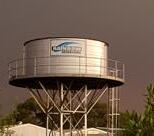

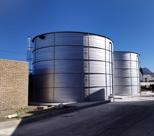




SUMMARY OF ORAL PRESENTATIONS
Premium quality Aluzinc steel sectional tanks for bulk water storage throughout Africa www.rainbowtanks.co.za sales@rainbowres.com | +27 (0)11 965 6016
IN-PIT DISPOSAL OF MINERAL RESIDUES TO MINIMISE DIRTY WATER IN HEAVILY LOADED CATCHMENTS
Dr David Love
Guinea Flower (pty) Ltd, Tshwane, South Africa
Pit disposal of mineral residues like tailings and coal discard has gained attention in the last 30 years due to its environmental implications. This method, which involves storing residues below the in-pit water table, offers advantages such as limiting exposure to oxygen, crucial for reactive residues like sulphide-bearing tailings. Case studies demonstrate its effectiveness in reducing acid rock drainage. Disposal above the water table also consolidates dirty water management but requires careful monitoring. In-pit disposal reduces mined land exposure, decreasing rainfall conversion into dirty water, and may create low permeability layers, reducing infiltration. However, challenges include waste inaccessibility for treatment and the risk of containment failure. While motivated by convenience, in-pit disposal must comply with legislation requiring the protection of water resources. Across southern Africa, regulations mandate pollution control measures and groundwater impact assessments. Ultimately, mining operations must demonstrate that their chosen disposal method adequately safeguards downstream water resources.
READING THE CHARTS – EFFECTING RESILIENT PLANNING AND MANAGEMENT IN A CHANGING ENVIRONMENT
SESSION 74
TOPIC: WATER SCARCITY AND CLIMATE RESILIENCE #2
ASSESSMENT OF CLIMATE RESILIENCE RATING FOR NONSEWERED SANITATION TECHNOLOGIES USING EXISTING CLIMATE RESILIENCE FRAMEWORK
Mr Phillip Majeke
Water Research Commission, Pretoria, South Africa
Around 3.6 billion people globally lack access to safely managed sanitation, with many residing in water-stressed or flood-prone areas exacerbated by climate change. Existing sanitation gains are at risk during climate-related disasters unless sanitation systems are designed with climate resilience in mind. Non-resilient systems pose health hazards during severe flooding or droughts, leading to waterborne diseases or open defecation.
The Water Research Commission (WRC) in South Africa addresses this issue through the South African Sanitation Enterprise Programme (SASTEP), evaluating non-sewered sanitation (NSS) technologies for climate resilience. Using the ClimateFirst framework, developed by the Institute of Sustainable Futures University of Technology Sydney (ISFUTS) for the Bill and Melinda Gates Foundation, NSS technologies are
assessed for climate resilience. WRC’s NSS technologies demonstrate high resilience, with 64-76% of resilient design features. These technologies contribute to both climate adaptation and mitigation, offering water and energy efficiency while reducing greenhouse gas emissions. Future sanitation system selections should prioritise climate resilience alongside technical, financial, and environmental factors to ensure sustainable sanitation in the face of climate change.
IMPROVING URBAN RESILIENCE THROUGH GREEN INFRASTRUCTURE: A CASE STUDY OF THE MPUMALANGA PROVINCE, SOUTH AFRICA
Dr Ayanda Shabalala
University of Mpumalanga, South Africa
Green infrastructure is referred to as a strategically planned network of natural and semi-natural areas with other environmental features designed and managed to deliver a wide range of ecosystem services. It includes stormwater infrastructure, tree planting, ecological restoration, green buildings, and green roofs. The benefits of green infrastructure include reduced stormwater runoff volumes, enhanced groundwater recharge, improved environmental quality, reduced sewer overflow events, mitigation of urban heat islands, additional recreational space, and improved human health and well-being. Green infrastructure projects in cities can also increase social cohesion and public health outcomes by promoting social interaction and community building, improving health and well-being. Here, the green infrastructure of Mbombela, Barberton and Sabie in the Mpumalanga province will be evaluated.
NELSON
MANDELA BAY: DROUGHT COMPARISON
Mr David Raymer1, Dr Siphumlile Mangisa2
1Nelson Mandela Bay Municipality, Gqeberha, South Africa, 2Nelson Mandela University, Gqeberha, South Africa
The paper compares two severe drought periods in the Nelson Mandela Bay area, spanning 1983-1993 and 2015-2023, using the Standardised Precipitation Index (SPI) based on rainfall data from Churchill Dam. The SPI analysis over 81 years reveals frequent drought occurrences in the area. Despite the 2015-2023 drought being shorter in duration, it was more severe than the 1983-1993 drought.
The study recommends implementing a Drought Mitigation Plan with an early warning system, utilising SPI calculations to anticipate droughts and establish criteria for declaring their severity. Encouraging water conservation during wet periods through tariffs and restrictions is suggested, along with intensified leak repairs and low-pressure meter installations. Exploring new bulk water sources, such as the allocation of water from Gariep Dam, is also recommended to mitigate future drought impacts. Overall, the study underscores the importance of proactive drought management strategies to ensure the municipality is adequately prepared for drought events.
86 MAY/JUNE 2024
SUMMARY OF ORAL PRESENTATIONS
103
Isolation of enteric bacteria from Bio-wipes linked with water and sanitation within households in Johannesburg
Miss Kavani Sanasi, University Of Johannesburg
47
Comprehensive online training program on Condominial sewerage systems
Mr Miguel Vargas-Ramirez, World Bank
184
Private sector participation – A solution to water services delivery challenges in South Africa
Mr Thomani Manungufala, Parliament Of The Republic Of South Africa
In South Africa, the Public Private Partnership (PPP) policy framework for water and sanitation, established by constitutional provisions and legislative acts, enables municipalities to engage the private sector for service delivery. However, the framework faces challenges, including complexity and resource constraints. A review of water concessions in various municipalities indicates mixed outcomes, with some successes like the Dolphin Coast and Mbombela projects. Successful PPPs have improved infrastructure investment and water access. Private sector involvement shows potential for meeting Sustainable Development Goals (SDGs) on water and sanitation, but further research and policy enhancements are recommended to enhance PPP effectiveness nationwide.
14
Assessment of long-term water demand for the Mgeni System considering demographic and dry climate periods
Mr Vernon Nagan, Civil Engineering
With water scarcity due to rising temperatures, population growth, and climate change, impacting water demand projections. Water Conservation and Demand Management (WC/DM) initiatives are vital for sustainability. Using the Water Evaluation and Planning (WEAP) system, scenarios project water supply and demand for the Mgeni system. Results indicate significant water shortages under high population growth and climate change scenarios. Addressing water losses, mainly from poor infrastructure, is crucial. Solutions include WC/DM measures like rainwater harvesting and leak detection, alongside carbon reduction initiatives to mitigate climate change impacts on water resources. Collaboration among stakeholders is essential for effective water management.
129
Strategic decision-making for water resilience
Mr Kelvin Subramani, MPAMOT (Pty) Ltd
Multi-criteria analysis (MCA) has been a longstanding tool for decision-making, now adapted for water resilience projects. In a recent study comparing water sources for a mixed-use development, three options were evaluated, considering factors like treatment cost, infrastructure, and drought resistance. Criteria also included ethical concerns and return on investment. Using weighted averages, stakeholders prioritised criteria and normalised data. MCA revealed stormwater treatment as the most viable choice, offering evidencebased decision-making. Beyond cost, it considered future availability, public acceptance, and quality variability. MCA adaptation ensures fair evaluation and informed decisions amidst water scarcity challenges, crucial for sustainable development.
12 June- afternoon tea
266 Identification of faecal pollution pathways from water sources to point-ofuse in Vhembe District Municipality
Ms Opelo Mochware, Tshwane University Of Technology
126 Reflections and recommendations of a laboratory testing innovative sanitation technologies in Durban, KwaZulu-Natal, South Africa
Mr Thabiso Zikalala, Wash R&d Centre
150 Simulation of greywater intrusion into potable water networks to determine safe thresholds
Mr Sphamandla Xulu, University of the Witwatersrand
13 June - lunch
186
Drinking water treatment stages impacts on the microbial diversity of selected drinking water treatment plants
Dr Chimdi Mang Kalu, University Of South Africa
236
The potential application of previous concrete for the management of polluted mine waters
Dr Ayanda Shabalala, University of Mpumalanga
AMD a result of mineral exposure to oxygenated water in mines, poses environmental risks by degrading water quality and soil. Traditional neutralisation methods are costly, leading to the exploration of alternatives like pervious concrete (PERVC). In Emalahleni, South Africa, where abandoned coal mines threaten local waterways, a pilot study evaluated PERVC-PRB for AMD remediation. Lab analysis revealed high metal and sulphate concentrations in raw AMD. After 20 weeks of treatment, PERVC effectively raised pH and reduced contaminants to meet water quality standards. Continuous monitoring is recommended, with the potential for additional treatments like Sulphate Reducing Bacteria (SRB) for sulphate removal.
170
Removal of ARGs in wastewater using Ferrate VI
Mrs Kefilwe Nduli, Magalies Water
Using excessive antibiotics leads to an accumulation posing risks to ecosystems and public health. WWTPs are key sources of antibiotic-resistant genes (ARGs), challenging traditional treatment methods. Ferrate (Fe(VI)) emerges as a promising agent for ARG removal. Experiments using Fe(VI) treatment on Baviaanspoort influents showed a significant reduction in tetA, sulI, and ermB ARGs. A dosage of 10 mg/L Fe(VI) for 10 minutes achieved optimal removal efficacy. Fe(VI) treatment outperformed conventional methods, offering efficient ARG removal and potential for organic pollutant reduction, dependent on pH levels. Fe(VI) shows promise in the pre-treatment step in WWTPs.
210
Photocatalytic and magnetic properties of lanthanum perovskite-type ferrites
Mrs Nokubonga Mkhwanazi, uMngeni-uThukela Water
94
Microwave (MV) technology an alternative to treating final effluent from wastewater treatment/faecal sludge management
Dr Leonard Kachienga, University Of Venda
249
South African Bentonite clay as inexpensive adsorbent to remove chromium(VI)-contaminated streams
Dr Nomcebo Happiness Mthombeni, Durban University Of Technology
116
Resource recovery from juice by-products using a forward osmosis system
Mr Mohammed Rahman, Cape Peninsula University Of Technology
13 June- afternoon tea
253
Wetlands as indicators of ecological impacts: risk-based assessments
Mr Tendani Mphaga, Ekurhuleni Water Care
227
Risk evaluation of brominated flame retardants and toxic elements in Swartkops River Estuary, South Africa
Mr Oladapo Olaniyan, University Of Fort Hare
The study focuses on the presence of persistent organic pollutants like hexabromocyclododecane (HBCDD) and 2,2',4,4',5,5’-hexabromobiphenyl (BB-153), along with toxic elements (TEs) such as arsenic, cadmium, and nickel in Swartkops River Estuary in Port Elizabeth, South Africa. This is the first such study conducted in the area. Water and sediment samples were collected and analysed across three seasons in 2020. While trace element concentrations met USEPA standards, BB-153 and HBCDD levels exceeded guidelines. Ecological risks, especially due to Ni exposure, were identified. Continuous monitoring of effluent quality in the estuary is recommended to mitigate risks.
MAY/JUNE 2024 87 POSTER ABSTRACT SUMMARIES 12 June- lunch
182
Assessment of heavy metals pollution with ecological effects in South Africa: A scoping review
Dr Martha Chollom, Mangosuthu University Of Technology
The deteriorating quality of water due to human activities poses significant risks to aquatic ecosystems and human health, particularly from heavy metal pollution. Monitoring water quality and conducting health risk assessments are vital for safeguarding water sources. This scoping review aims to assess heavy metal contamination, toxicity exposure, government legislation on wastewater management, and remediation strategies in South Africa. Through an extensive literature search, insights into heavy metal contamination, exposure toxicity, and legislative frameworks will be provided. Recommendations for a conceptual policy framework to address heavy metal contamination in South Africa will be proposed based on the review findings.
14 June- lunch
84
Detection to action: Unraveling the pollution puzzle in the Jukskei River and pioneering clean-up strategies
Mr Kyle van Heyde, The University Of Johannesburg PEETS
217
The effects of raw water quality on drinking water treatment performance
Dr Thokozani Mncube, Umngeni-uthukela Water
212
Analysis of environmental oil spill forensics by GC- and GCxGC-TOFMS
Mr Alexander Whaley, Leco Africa (pty)
52
Occurrence and antifungal resistance of Candida species from wastewater treatment plants
Mr Thapelo Motsabi, North-West University
201
GCxGC-TOFMS utilised as a broad-spectrum analysis for endocrine disruptor compounds in urban and rural watersheds
Dr Christina Kannigadu, LECO
167
Continuous monitoring of active pharmaceutical ingredient concentrations in surface waters polluted by an informal settlement
Mr Fanus Fourie, University Of Cape Town
Studies indicate that active pharmaceutical ingredients (APIs) in South African surface and groundwater, pose risks to ecosystems and public health. Limited monitoring and lack of standard protocols exacerbate the issue, especially in peri-urban informal settlements relying on surface water. To address this, a study focuses on API contamination in the Stiebeuel River, near Franschhoek, developing a monitoring protocol to track API types and concentrations. Preliminary results show the presence of over thirty APIs. The study aims to understand temporal variations and assess the relationship between API and E. coli concentrations for improved water quality management.
LIQUID SCIENCE: YOUR PARTNER IN WATER MANAGEMENT SOLUTIONS
Together, let’s advance the future of water management
Formed by five leading South African companies, Liquid Science specializes in centralized sourcing for water-related testing, monitoring, management, telemetry, and communication. With over 100 years of collective experience, and a nationwide footprint, we cater to diverse industry needs with a comprehensive range of services:
• Supply & Installation: High-quality water related scientific instrumentation and sensors for field, laboratory, or process applications, along with necessary ancillary equipment.
• Accessories: Provision of supportive spares, reagent platforms, standards and associated products.
• Servicing & Calibration: Onsite maintenance and calibration of all supplied equipment.
• Sample Testing: Comprehensive testing with root cause analysis, interpretation and remediation solutions for process applications.
• Training: On and offsite expert qualified training on laboratory and process equipment applications.
• Data Solutions: Design, installation, and support for data acquisition, telemetry, reporting, and control systems.
• Consulting Services: Engaging specialists to provide tailored solutions for complex water management challenges, disclosing and improving water stewardship, reducing and optimising water footprints in a sustainable manner
Our national presence includes a team of over 60 qualified professionals, encompassing sales, technical, and application experts dedicated to exceptional service. We pride ourselves on diversifying our products and technologies to provide comprehensive solutions for water sector challenges. Our offerings cover both laboratory and process online applications, supporting various industries and driving market growth.
We seek partnerships with companies that share our vision of growth and innovation. Join us at WISA 2024, stands #77 and #9, to explore collaboration opportunities and discover our advanced solutions.
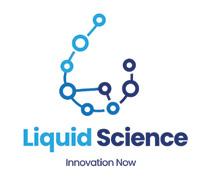
POSTER ABSTRACT SUMMARIES




DIGITISING WATER SERVICES CAN GAIN BACK MILLIONS FOR MUNICIPALITIES


South Africa faces high non-revenue water, impacting half of piped supply. When the Midvaal Local Municipality decided to tackle its 32.4% non-revenue water losses, it created the opportunity to earn back over R54 million in savings across five years by reducing water losses to 20%. By Chetan Mistry
Digital services are helping water systems become more efficient and profitable. Data analytics, edge computing, IoT sensors, and artificial intelligence enhance current source to tap water operations with real-time visibility, planning simulation, and preventative and predictive maintenance. These improvements extend the lifespan and value of water sites, reduce costs and also grow revenue,” says Chetan Mistry, strategy and marketing manager at Xylem Africa.
Helping municipalities do and gain more Digital services radically enhance managing water infrastructure, and municipalities use them to increase revenues and improve service delivery.
Municipal water systems worldwide are under rising pressure to meet the demands of growing urban populations and industry. At the same time, they are losing extensive amounts of money through infrastructure breakdowns and water losses.
The Midvaal Local Municipality's strategy involves several crucial actions, including creating a master water plan, calculating and preparing monthly water balances for different regions under its control, improving asset management, and detecting and closing leaks.
These tasks would have been challenging and even impractical in the past. Using digital technologies, they streamlined challenging tasks by analysing historical and current usage data, deploying leak detection systems, and using pre-emptive maintenance planning. The results are returning millions to municipal coffers. South Africa's struggling towns and cities, burdened with over R100 billion in debt, can benefit considerably from water digitisation.

Digital water is a nuanced journey
A strategic and partner-supported approach to water digitisation delivers quick results in some areas. And after that, more extensive benefits come from long-term digitisation.
Vertical experience also matters: companies specialising in specific sectors, such as water, have much better data and scope for analysis than generalist digital providers.
"Digital water systems can integrate with existing systems and data, delivering some gains quickly and with minimal disruption to the site," says Mistry. "But sites must evolve if they want to get long-term benefits from digital management. The best strategy is to take it in steps and with planning that ensures continuity for the site."
Fortunately, there is a wealth of experience available to manage digitisation projects, both as a general practice in various sectors and specialised insight into digitising water operations, "Water technology companies invest consistently in developing and deploying digital systems, in technical aspects but also areas such as security, compliance, data migration, and cloud systems. Some solutions are very turnkey and quick to start using. Others take more time, but can avoid the missteps of previous deployments."
Digitisation is not a small project but can be delivered in manageable steps. The outcomes are more revenue, improved control and planning, and extending the life of valuable water infrastructure. How much opportunity are your water systems leaving on the table? Digital water services put that opportunity back in your hands.
MAY/JUNE 2024 89
SMART WATER
Chetan Mistry, strategy and marketing manager, Xylem Africa

SAFEGUARDING DRINKING WATER:
MAGALIES WATER'S PROACTIVE MEASURES


As the North-West province’s sole water board, Magalies Water is relentless in its endeavour to supply quality bulk water to the area. Kirsten Kelly talks to Maipato Thoola (MT) – a water quality process specialist at Magalies Water – about proactively ensuring drinking water safety.
Magalies Water consistently supplies its customers with potable water that complies with the SANS 241 requirements. What kind of challenges do you experience when it comes to maintaining these high levels of water quality?
MT: Our biggest challenge is deteriorating raw water quality due to upstream activities. According to the Green Drop Report, a significantly high number of municipal wastewater systems are now

rated as critical, meaning that many of our rivers and dams are overloaded with partially treated wastewater which results in high amount of microbial contamination, organic matter, and emerging contaminants.
Furthermore, climate change influences the presence, concentration, transformation, and impacts of upstream activities to downstream water users.
Higher water temperatures can accelerate chemical reactions, potentially increasing the transformation of some contaminants and secondary pollutants into more harmful byproducts.
Most recently, water quality issues in the Taung and Rustenburg areas have been highlighted. What is happening there?
We have been receiving poor raw water quality. This has been noted by the increase in the treatability index, which is confirmed by concentration of contaminants such as high concentration levels of manganese in our water treatment systems. We are currently blending the raw water from the dams with canal supply which has better
quality and we have implemented optimised dosages for pre-chlorine, lime. Furthermore, we have introduced advanced technologies such as chlorine dioxide.
In general, what is Magalies Water doing to cope with deteriorating raw water quality?
We have firstly increased our monitoring frequencies and there is more onsite monitoring, which enables prompt response times. Magalies Water also participates in catchment forums for stakeholder information sharing to deal with water quality deviations before that water leaves our treatment plants. We have also invested in advanced treatment technologies. To combat the high levels of organics coming into our water treatment plant, we have initiated the use of ozone for oxidation, which works particularly well for emerging contaminants of concern like Geosmin and 2MIB. At some sites we have introduced chlorine dioxide as an alternative oxidant. Our water treatment processes have been designed to ensure that there are
90 MAY/JUNE 2024 WATER QUALITY
Maipato Thoola, a water quality process specialist at Magalies Water
Vaalkop Water Treatment Plant (270 Mℓ/day)
sufficient residual disinfectants in the bulk distribution network to keep the water sterile and safe from microbial contaminants.
What is your capacity regarding water testing?
Scientific Services houses the Laboratories, Research and Water Quality Process Office. Here, water quality and process specialists focus on SANS 241 compliance, process audits and management of the Department of Water Affrairs’ IRIS system in a drive to attain Blue and Green Drop status.
We have a SANAS (ISO 17025:2015) accredited laboratory with state-of-the-art equipment such as:
• ICP-OES – Inductively coupled plasma/ optical emission spectrometry is a wellestablished and powerful technique for the analysis and quantification of metals in high concentrations.
• ICP-MS – Inductively coupled plasma/ mass spectrometry that measures an atom's mass and analyses trace metals.
• GS-MS – Gas chromatography/mass spectrometry (GC/MS) combines two analytical tools to identify and measure the concentration of organics, particularly contaminants like Geosmin and 2MIB.
• A specialized microscope with inverted light.
• PCR instrument for DNA testing This enables us to offer an all-inclusive suite of services to test water samples for an extensive set of quality parameters, such as viruses, minerals, chemicals, bacteria and organic materials. The laboratory serves as a buffer to make sure that the water reaching the consumers is safe to drink, or suitable for domestic use.
There is a specific section in the laboratory for quality assurance that verifies existing quality results. There is also a research and development section where all potential risks within our water system are identified for the development of water safety plans. Due to its equipment and skilled workforce (including qualified chemists, microbiologists and water-treatment technologists), the laboratory is also used commercially and offers the water industry a wide variety of services in the fields of chemical and microbiological analyses, as well as expert advice on water-related problems.
Your origins began with exclusively supplying mining houses in the platinum belt region of Rustenburg and Thabazimbi. What is your relationship like with the mining sector now?
We work very closely with our mining houses. We have established a Mining Forum whereby we meet bimonthly to share water quality results and share ideas around challenges with water supply and quality as well as any progress we have made in mitigating challenges. They are quite helpful and a recent example is where we were unable to access the sample point due to the damaged road. The mining houses quick to response by providing access to their premises for sample collection.
How did Magalies Water perform in the recent Blue Drop audit?
The Blue Drop audit was conducted around the transition phase where Magalies Water had not fully absorbed Sedibeng Water. Therefore, Sedibeng was audited separately from Magalies Water.


We performed well (93%) and received this comment from the auditors: “The scale of the Magalies Water system is significant, and the local municipalities are fortunate to have this utility to assist them in the provision of safe drinking water for their consumers. The water quality data shows excellent compliance to all the required parameters and consumers within the Magalies Water area of supply are assured of being able to drink water straight from the tap.”
There were findings during the audit process that were mainly related to the condition assessment of the works as well as the capacity of the engineering personnel. We have moved swiftly to address those findings. We have just appointed Sibongiseni Mbadamana as the new general manager: Projects and Engineering Services.
Concluding remarks
When I joined Magalies Water in 2019, there were only four water treatment plants. Today there are over 20 under our control. There is a lot to be proud of; clean audits, rapid growth, development and upskilling of young people within the organisation. I am confident that the leadership in the organisation will move us to even greater heights.
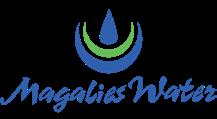
MAY/JUNE 2024 91 WATER QUALITY
www.magalieswater.co.za
Cullinan Water Treatment Plant
Wallmansthal
Water Treatment Plant
SETTING NEW STANDARDS: introducing the Amanzi Recycling Unit

We initially imported second hand load bodies from Switzerland. After a restriction was placed on the importation of used vehicles to protect the local vehicle manufacturing industry, we then decided to import new vehicles,” explains Sebastian Werner, MD, Werner Pumps. With fluctuations in the Rand against major currencies and extended delivery times for imported units, the company decided to recognise the technical expertise and knowledge residing in South Africa, and they are now dedicated to local manufacturing. Their goal is to ensure all components and load bodies are made entirely in South
accredited body builders with most wellknown brands.
Amanzi Recycling Unit
One such example is Werner Pumps’ African-built Amanzi Recycling Unit that repurposes the water captured when cleaning a sewer or stormwater line through an onboard filtration process. This allows for a more economical and water-conscious pumping process – creating a huge environmental advantage.
“Unlike conventional jetting and vacuuming equipment, the Amanzi Recycler’s jetting tank has an additional recycling component. It therefore only needs to be filled with fresh water just once for the entire day’s operation. By vacuuming and reusing the same water throughout a shift, the system saves up to 165 000 ℓ of clean water during a typical shift, saving millions of litres of water a year,” states George Jolly, Werner Pumps sales manager.
For over 36 years, Werner Pumps has been designing, manufacturing, supplying and maintaining specialist high-pressure jetting equipment, offering locally built units at competitive prices.

Africa, bolstering economic growth and fostering job creation.
“Our manufactured products take the best from both worlds. We maintain the European quality standards but make adjustments to increase the robustness needed for a product that operates in Africa. It is also important that the products are easy to maintain as well as simple and efficient to operate,” adds Werner.
Werner Pumps was one of the first in the industry to obtain an ISO9001 Certification, in October 2016. They are
Drain cleaning, for example, requires a large quantity of high-pressure water. Standard vacuum jetting trucks that only have a jetting and suction component have jetting tanks that must be regularly refilled throughout the day. With the Amanzi Recycling Unit, the water recycling system enhances operational efficiencies by eliminating the need for the truck to repeatedly travel between the job site and a water source, meaning that significant savings in fuel, water and overall maintenance costs are achieved. The Werner Amanzi Recycling Unit also provides powerful and efficient vacuum and jetting for industrial sump cleaning, slurry management and drainage system maintenance.
Jolly explains that traditional jetting equipment requires high quality water to avoid accelerated wear of any components. But the Amanzi Recycling
92 MAY/JUNE 2024 PUMPS
(from left) Sebastian Werner, MD and George Jolly, sales manager


Unit has a specialised filtration system built within the tank super structure that separates the solids from the liquids and re-uses the same dirty water vacuumed for its jetting function.
The hydraulic operation of the vacuum and high-pressure pumps also contributes to reduced maintenance requirements, consequently reducing downtime and associated costs. The truck operates hydraulically off a split shaft unit connected to the truck’s drive shaft instead of a V-belt drive. This design ensures that the pump can be operated at low revolutions per minute, resulting in reduced fuel consumption and efficient energy use. Furthermore, the vacuum pump and high-pressure pump are above the chassis and not low


to the ground, allowing the vehicle to drive in more areas.
“We have supplied several recycling trucks to contractors working in municipalities and the mining industry. They all appreciate the cost and water savings the truck offers. Furthermore, trucks can be manufactured to different sizes to suit specific client requirements, and the vacuum and jetting pumps can be customised to meet varying demands,” adds Jolly.
Improvements to the Amanzi Recycler
The original imported unit used a 270-degree boom, but Werner pumps has created a 360-degree boom, meaning that cleaning operations are not confined, and can take place in front of and behind the truck.
The trucks can be operated wirelessly, enhancing safety for operators, with a touch screen digital control panel enabling them to customise operations. The operator can work the machine from 100 metres away. This is included as standard feature with no additional charge.

Unlike the imported unit, the entire tank of the Amanzi Recycling Unit is made from stainless steel, reducing corrosion and rust damage. Hydraulic cylinders (all manufactured inhouse) are also used as a locking mechanism on the dish-end of the tank. Werner Pumps has also designed the unit for 12-metre-deep manholes,

with superior suction capabilities. The vacuum pump is fitted inside of the tank, making the entire process quieter.
“Furthermore, the tanks are designed to tip at 45 degrees to facilitate the discharge of waste. There is also a blow function where the vacuum flow can change direction into the tank, the tank is then pressurised and the waste is then force discharged out of the tank, which is far speedier option that discharging waste by tipping the tank. This also makes any clean-up process simpler and more efficient without the risk of spillage,” adds Jolly.
Maintenance
Werner Pumps have a good understanding of the performance of their equipment and are constantly looking at other improvements. This is largely due to insights from their own their rental fleet as well as the aftersales service and support to customers.
“Our customers can take a maintenance plan option. Our equipment should be serviced every 350 hours. A logbook is filled out by our customers and stamped by us once serviced. We also capture all work done on our equipment for future reference,” states Werner.
He adds that Werner Pumps has a service fleet of vehicles that can be sent out to customers in the field when there are electrical or mechanical faults. “Our technicians know our equipment inside and out as they’ve helped to put these trucks together at our factory. They do
MAY/JUNE 2024 93 PUMPS
The Amanzi Recycling Unit undergoing final quality testing before it is sent to a customer
Werner Pumps use their own 3D printer to create a model of their equipment that they use for research and development as well as training purposes
Hydraulic cylinders (all manufactured inhouse) are also used as a locking mechanism on the dish-end of the tank



their best to diagnose and fix problems onsite, and if they can’t resolve the issue, they will assist the customer to get the truck back to our premises.”
“We do not outsource our electrical components, they are manufactured inhouse. Therefore, if there is a fault, we are the best company to fix it and it also means that we can get equipment up and running with minimal downtime,” he continues.
The decision to create a service and repair fleet is based on the company’s constant drive to solve customer’s challenges, remove frustrations and provide a one-stop shop. “We’re always asking our customers what they want and need, and then we try to deliver that. It’s one of the reasons we manufacture our equipment locally – so we can customise it to customers’ specific requirements,” says Werner.

All electrical components are manufactured inhouse

THE AMANZI RECYCLER
• 3100 m 3/hour liquid ring vacuum pump (strongest in its class)
• 360 degrees rotating hydraulically operated boom
• wireless remote control from up to 120 metres
• 10-inch touch screen operation
• 350 ℓ /min at 205 bar high pressure pump
• vacuum and HP Pump driven hydraulically – no v-belts and pulleys
• ability to fit a truck chassis of choice with custom paint job
However, all equipment is manufactured to make maintenance as easy as possible. When a company purchases any new equipment, Werner Pumps oftens train the operators to service the equipment themselves.
Werner Pumps have recently added another unit to their rental fleet. Initially, the rental fleet was used to provide a buying customer with equipment while their order was being built, but some of Werner Pumps’ customers rent equipment for a duration of a contract. According to Werner, their rentals, often produce sales once the equipment is seen in action.
“Most times, our own trained operators and assistants will drive and utilise the equipment for the duration of that contracts and their services will be included in the rental agreement. They are fully trained with regards to health and
safety protocols. We also do site surveys, scope of work, risk assessments and event route plans. Health and safety is a huge priority and we design all of our equipment accordingly.”
“We believe that the reason we have repeat customers is the fact that we give our customers what they need to support their businesses,” he concludes.


94 MAY/JUNE 2024 PUMPS
Werner Pumps has a service fleet of vehicles that can be sent out to customers in the field when there are electrical or mechanical faults
Werner Pumps was one of the first in the industry to obtain an ISO9001 Certification





The Deputy Minister of the Department of Water and Sanitation, Judith Tshabalala

TDEAL WITH WATER DIFFERENTLY

The Deputy Minister of the Department of Water and Sanitation, Judith Tshabalala gave a keynote speech at the National Siltation Management Short Learning Programmes launch event.
he deputy minister spoke broadly about the current state of water and sanitation in South Africa where her rallying cry was that as water professionals, bodies, and regulators, “we need to deal with water differently.”
South Africa faces many challenges concerning water, something the deputy minister does not shy away from. “Our people are frustrated with our infrastructure, our population has grown and we are dealing with old dams, broken pipes. We need to address these concerns but we also have to deal with outside factors such as vandalism.”
On a municipal level, she notes that “Municipalities are underperforming, and not using the allocated budget effectively.” What the country is seeing now are municipalities that are “financially frustrated” due to years of mismanagement, and municipalities that are “incapable of delivering on water and sanitation expectations.”
To this effect, Deputy Minister Tshabalala mentions the National Water Resource Infrastructure Agency (NWRIA) bill that would allow national
intervention into local municipalities if they are non-compliant or failing to meet their mandates.
Addressing broader concerns she highlights that the most important people in the country’s water and sanitation sector are the customers.
Noting that “people want to pay for good services and usually have no problem when the water they receive is of good quality and billed correctly.”
Having the end user in mind is the key to finding solutions.
She adds that water and sanitation are supposed to be self-sufficient and “relying on the national government to subsidise everything is not the answer.”
On this, she elaborates, “ This is where the NWRIA can help by bringing in the private sector to help us with funding and capacity”.
Migration and transboundary agreements
Migration is another hot topic in South Africa and the deputy minister takes the chance to remind us that “rivers don't know borders” and reflects on an earlier project this year where transboundary agreements benefit people from
either side of the border. In a landmark water-sharing agreement between Zimbabwe and South Africa the people of Musina are provided with water from Zimbabwe, the deputy minister points to this as a positive reinforcement of collaboration that “has the potential to unite people”.
Skills development
The deputy minister reflects on the need for skilled workers and involving communities in water programmes. “We need skilled workers because the challenges that we face are because we have a skills mismatch in South Africa.”
This goes back to the reason for her speech, to celebrate the MoA between the University of Johannesburg and the Water Research Commission. She says that the skills development from the short learning programmes are “vital” in addressing South Africa’s current water security issues. One of the key elements of these short learning programmes is community engagement where those undertaking the course are taught how to best engage with the community. On this point, she says, “Community engagement is difficult but it is time that our communities come closer to water.”
In her closing remarks the deputy minister issues a call to action within the water and sanitation space. She says, “We always hear about committees and timelines, and plans. We need to start implementing these plans.”
GOVERNANCE
MAY/JUNE 2024 95











SAFER • CHEAPER • BETTER ACHIEVE SUSTAINABLE, AFFORDABLE COMPLIANCE WITH WORLD CLASS KLORMAN TM CHLORINATION, MONITORING & CONTROL TECHNOLOGY
YOUR
SAFER • CHEAPER • BETTER ACHIEVE SUSTAINABLE, AFFORDABLE COMPLIANCE WITH WORLD CLASS KLORMAN TM CHLORINATION, MONITORING & CONTROL TECHNOLOGY GET YOUR
DROP SAFER • CHEAPER • BETTER ACHIEVE SUSTAINABLE, AFFORDABLE COMPLIANCE WITH WORLD CLASS KLORMAN TM CHLORINATION, MONITORING & CONTROL TECHNOLOGY GET YOUR
DROP SAFER • CHEAPER • BETTER ACHIEVE SUSTAINABLE, AFFORDABLE COMPLIANCE WITH WORLD CLASS KLORMAN TM CHLORINATION, MONITORING & CONTROL TECHNOLOGY GET YOUR GREEN DROP VISIT US AT STAND NUMBER 86 AT THE WISA CONFERENCE
GET
GREEN DROP
GREEN
GREEN



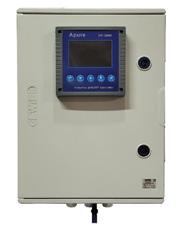

GETTING THE JOB DONE
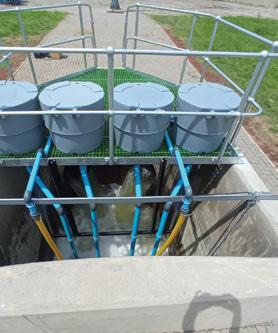
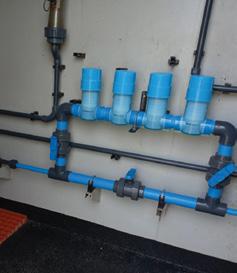

• (+27 11) 262 0346
• info@klorman.co.za
• www.klorman.co.za
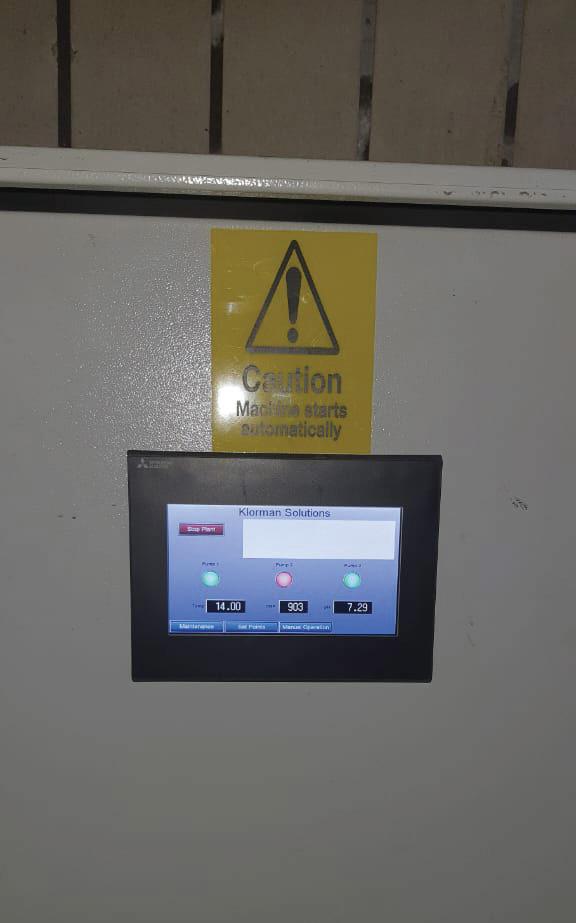
Klorman Solutions is not only a full-spectrum water treatment solutions provider, but also acknowledged as a world leader in chlorine-based sanitation with an unrivalled suite of proprietary, custom designed products and formulations suitable for any-size applications. We have sales & distribution points across SA as well as a network of regional and international distributors.

100% 9:41 AM Pools AllSites ALL SITES FOREVER BELA 1 BELA 3 BELA 2 BELA 4 DATA ENTRY & SETUP 50 YEARS NOW WITH DIGITAL REPORTING AND CONTROL SYSTEMS
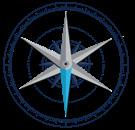
Forging A’Head - Improving water and sanitation service delivery

ALTERNATIVE SANITATION SOLUTIONS: Where
are we?

Alternative sanitation solutions look at every stage of the sanitation value chain, and how to make it more efficient. This is a tricky challenge, but one well-funded by donors from developed countries. The absence of basic sanitation in many rural and even some urban areas presented the opportunity for a realtime pilot trial of these systems.
Presently, water scarcity and an unstable electricity grid have impacted cities, and these challenges are felt by everyone, everywhere. Yes, there is solar power, boreholes, reverse osmosis, and a few other technologies, but each come with their implementation challenges and require innovation to move toward sustainability – we are not far away. As we approach the close of the sustainable development goals (SDG), specifically looking at SDG 6, municipalities, regulators and the rest of the sector’s players are starting to see the value in decentralised approaches. It’s a natural transition. At first, everything is new and has its sceptics and then eventually everyone gets on board if the idea makes
senior engineer, Borda
I have worked for over decade in the alternative sanitation solution space. My career began as a candidate engineer in the newly forming sector, which placed me in a good position to truly get onboard with change that is needed as conventional systems become overloaded and populations increase. By Lloyd Govender,
sense and most importantly proves to make sense.
Norms and standards
Around three years ago, there was much talk on the need for policy, and fast forward to today, the Department of Water and Sanitation are looking at reviewing the norms and standards for water supply and sanitation services. Decentralised wastewater treatment systems and onsite sanitation systems are seen to provide sustainable solutions to areas that cannot be connected to the centralised municipal sewerage system, and where water is needed and can be provided in the form of boreholes. I spoke in detail to regulators, and they are not against issuing permits, most times, the
98 MAY/JUNE 2024
Faecal sludge treatment plant, Zambia
applications have gaps and those gaps take time to resolve.
Theewaterskloof Dam is one of the water reserves that supplies water to the City of Cape Town. The dam has become polluted due to the influx of informal housing and the absence of sanitation services, presenting a real challenge. The Local Municipality of Theewaterskloof identified this crisis and together with the City of Cape Town Municipality, have began looking at incorporating alternative sanitation solutions. One option that the teams looked at was DEWATS, a system that treats domestic wastewater to regulatory standards, and works off the principal of gravity, without the need for electricity. This shows a clear push toward wanting to solve a challenge by means that are currently unconventional in South Africa but have worked in other developing countries. To date, there are over 3000 DEWATS constructed across the world.
The norms and standards currently in development will serve as guidelines to ensure that when using alternative sanitation technologies, the correct method of evaluating their suitability is followed. There is a clear definition of the compliance needs, and clear ownership of the technology, and the supporting responsibilities that come with that ownership. Sustainability and responsibility is vital for the success of

alternative solutions that differ from the conventional methods we currently have in South Africa.
What alternatives?
Now, we dive into the alternatives of sanitation solutions. Think about conventional treatment: massive treatment systems at low-lying areas, pump stations, and deep sewers (seriously large diameters). Now picture this - at the lowest lying area of your neighbourhood, there is exactly this, but smaller in size, and dedicated to treating the wastewater generated by perhaps the 250 households around you.

At the moment, conventionally treated wastewater is returned to rivers and we have seen in the media that environmental compliance is a major issue due to innumerable reasons. But with alternative sanitation solutions, the wastewater can be treated for re-use or agriculture if the opportunity presents itself. Returning the treated wastewater to a natural water resource is also possible. In the bubble of alternative sanitation solutions, some systems work on electricity and others work purely on gravity and without chemicals – in a broad spectrum.
Pit toilets
We still then have to think about sludge, as many rural areas have pit toilets, and these have really let people down in most cases due to construction quality, and/or overload of the pit without operation and maintenance.
I have seen thousands of pit toilets in South Africa and I can remember only around 10 or 11 still working well without damage.
A sustainable solution to handle sludge is needed. Before that though, toilets and structures that can replace pits while working on low flush or no water are currently being rolled out. Even though they still are in essence a pit toilet, the quality brought forward by most alternative sanitation solution pioneers are well suited to provide dignity and safety, even in the absence of, or presence of little water. The trouble here is that the sludge piles up and needs to be taken to either
MAY/JUNE 2024 99 SANITATION
Wetlands used to treat liquid fraction from faecal sludge treatment plant, Zambia
Biogas digestor construction
a hazardous waste site or a processing facility.
The first option is possible, but the latter has been in operation across the developing worlds and needs to be sustainably developed for South Africa. Our current sanitation climate is where Faecal Sludge Treatment Plants (FSTP’s) become viable. The FSTP’s have many iterations for design, depending on what you plan to do with the end product. Options such as composting exist and our neighbours Tanzania and Zambia have successfully implemented these plants where they are close to the source of the waste, lowering logistics costs and decentralising sanitation - kerbing the problem slowly. Slowly is better than no movement, and movement comes with loads of experience and through cross-country engagement we can share and develop suitable FSTP’s for South Africa. The Department of Water and Sanitation is currently planning this initiative.
Considerations
Our regulators have a few challenge questions, here are three important ones:
1. Sustainability – Who takes
ownership, how do they do that and how do they operate and maintain these systems? The municipality – yes, but are they capacitated to? Is the will there? How do we encourage the will and form collaborative structures?
2. Suitability – How do we ensure the correct systems are employed, employed ethically, and run correctly?
3. Compliance monitoring – What are the parameters? The basics apply but depending on the technology and surrounding aspects (boreholes, other treatment systems), what structure do we follow?
Financial implications and the finer details follow and those differ between municipalities.
Awareness
We need awareness that promotes thinking in the direction of alternative sanitation solutions and the supporting policy that would follow. It's important to track where we are with innovation, and every now and then write an article to promote the sector and get more of the brilliant minds thinking around the subject. A great initiative is urine processing.
INDEX TO ADVERTISERS
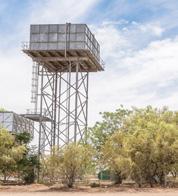
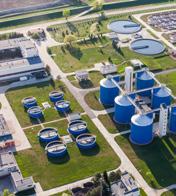
We have our local specialists working together to figure out the best way to convert urine into more than just fertilizer. There are some good articles of local and international success on this initiative – innovation is all around us.
I’ve spent almost a decade in the sector and have had the opportunity to work together with regulators, local municipalities, and sector players in Africa and abroad to understand alternative sanitation solutions and promote the uptake, so that we can have viable solutions that have the potential to improve the living conditions of residents of South Africa and everywhere else where challenges exist. I know it’s possible through the hours spent constructing prototypes, setting up sampling campaigns and working in consortiums that have the brilliant mindset to just push forward and figure out new routes when current ones become blocked. We are slowly reaching a point where regulations and policy are catching up because more stakeholders are investing in alternative sanitation, alternative power and alternative solutions holistically. It isn’t going unnoticed.

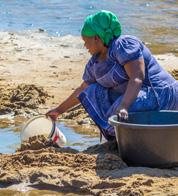
SANITATION
APE Pumps 83 BluePlanet 12 Hanna Instruments IBC Klorman Solutions 96 Liquid Science 88 Magalies Water 90 SBS Tanks OBC Sizabantu Piping Systems IFC uMngeni uThukela Water 2 Rainbow Reservoirs 85
Rand Water OFC, 4 SBS Tanks OBC Talbot 30 VEGA Instruments SA 11 Water Research Commission 14,17 Water and Sanitation Services South Africa 34 100 MAY/JUNE 2024

Multi-Parameter Photometer KIT, Combo package consisting of:
• Multi-parameter photometer with COD (HI83314-02)
• COD Reactor, 15 minute digestion (HI839800-02)
• Choice of any 3 sets of COD Reagents
• COD (LR) Reagent Vials (HI93754A-25)
• COD (MR) Reagent Vials (HI93754B-25)
• COD (HR) Reagent Vials (HI93754C-25)
• Test Tube Cooling Rack (HI740216)
• Safety Shield for COD Reactor (HI740217)

We also operate in Botswana, Eswatini, Lesotho, Mozambique, Namibia and Zimbabwe. Contact apaka@hanna.co.za Cell: +27 (0) 72-910-5749
www.hanna.co.za HEAD OFFICE – JHB 6 Vernon Road Morninghill, Bedfordview Johannesburg T: (011) 615 6076 F: (011) 615 8582 E: hanna@hanna.co.za CAPE TOWN BRANCH Unit B 18 Bellville Business Park Belville, Cape Town T: (021) 946 1722 F: (021) 946 1723 E: ct@hanna.co.za DURBAN BRANCH Unit 3, Emerald Block Abrey Eco Park 5 Abrey Road Kloof T: (031) 701 2711 E: durban@hanna.co.za EASTERN CAPE BRANCH Southern Life Gardens First Floor, Block C 70-2nd Avenue Newton Park Port Elizabeth 6045 T: (041) 450 5685 E: pe@hanna.co.za HI740216 HI93754C HI93754B-25 HI93754A-25 HI839800 HI740217 Safety Shield for
HI83314
COD Reactor
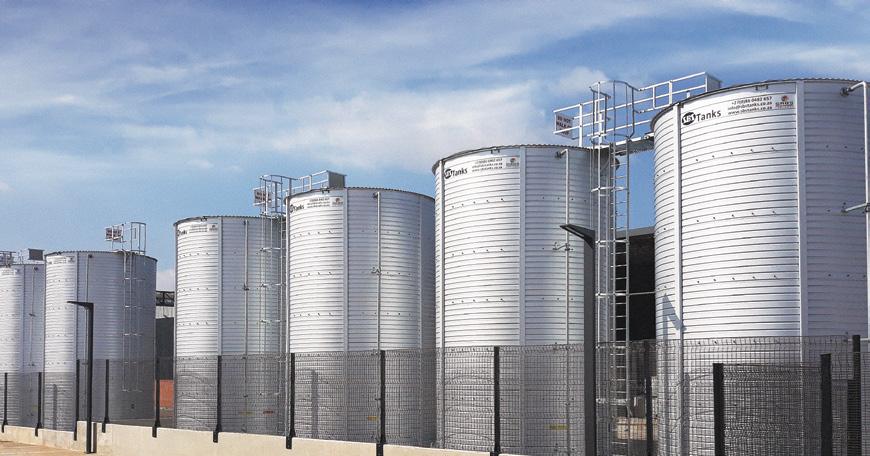
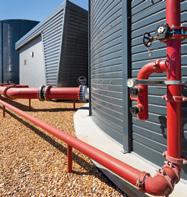
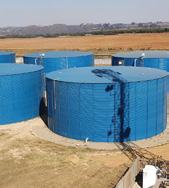
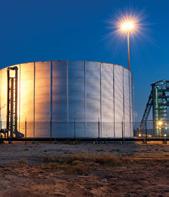

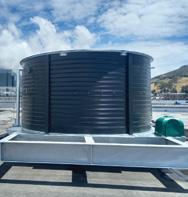




































 UMNGENI-UTHUKELA
WATE R . AMA NZ I
UMNGENI-UTHUKELA
WATE R . AMA NZ I






































































































































































































































